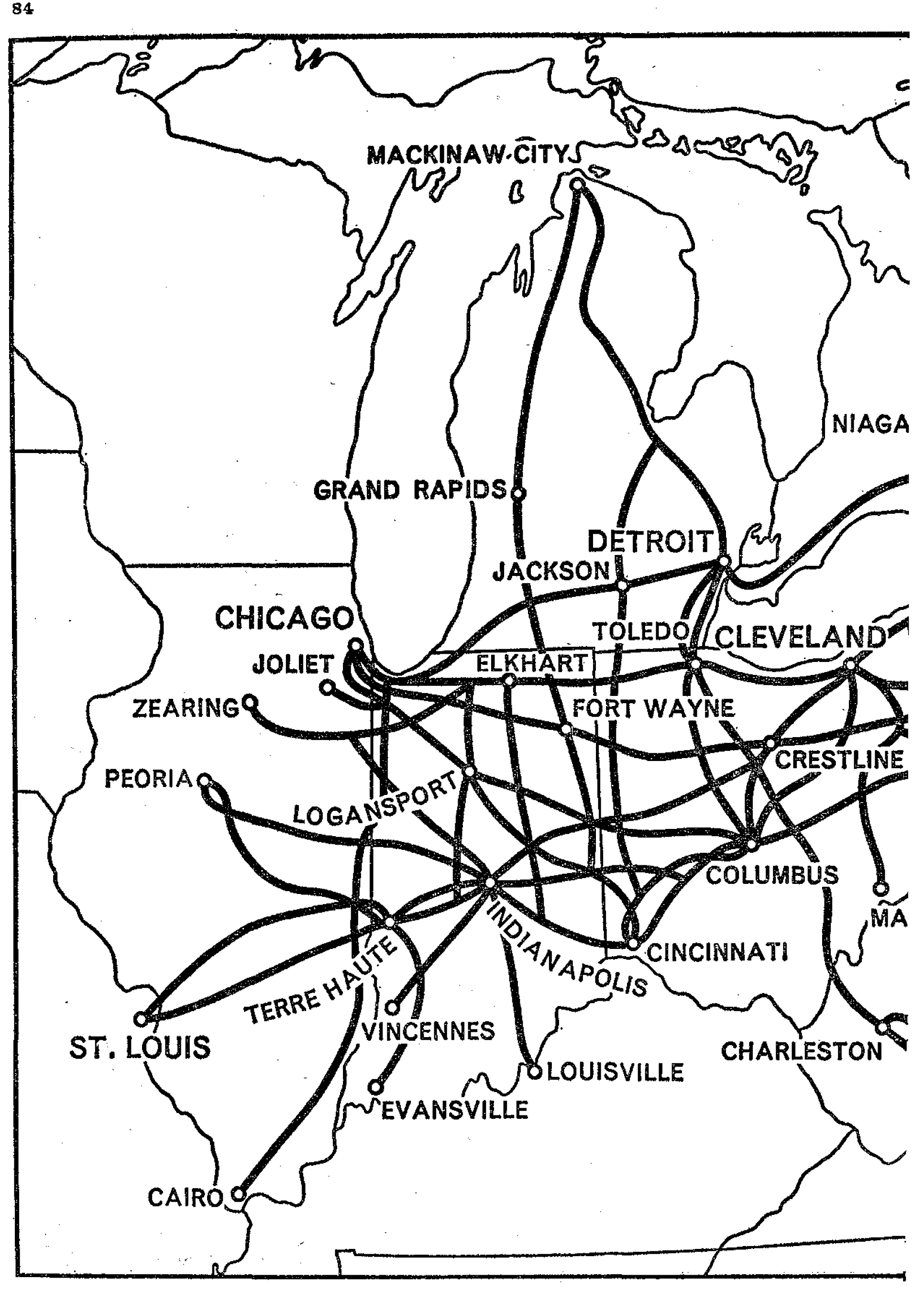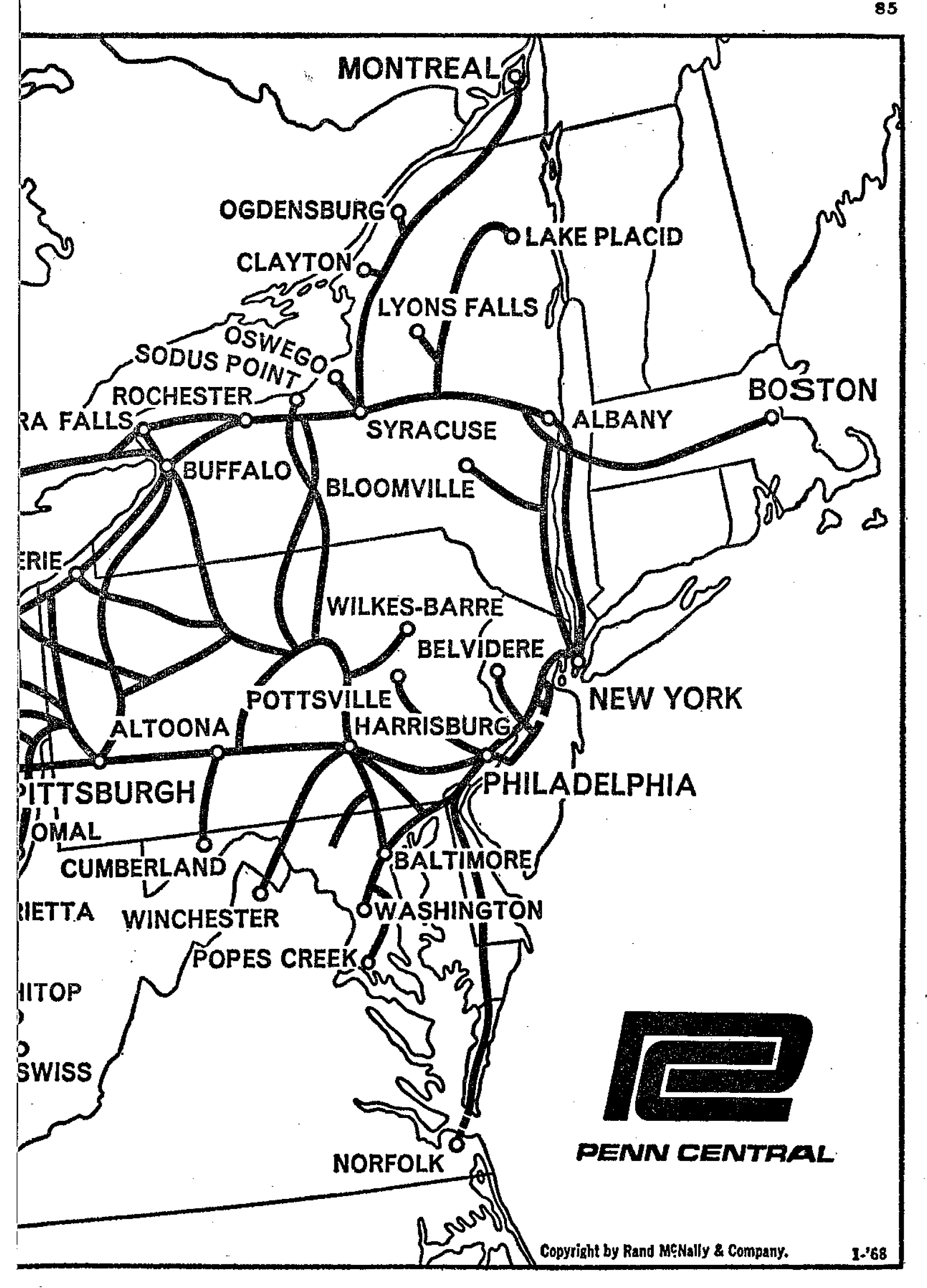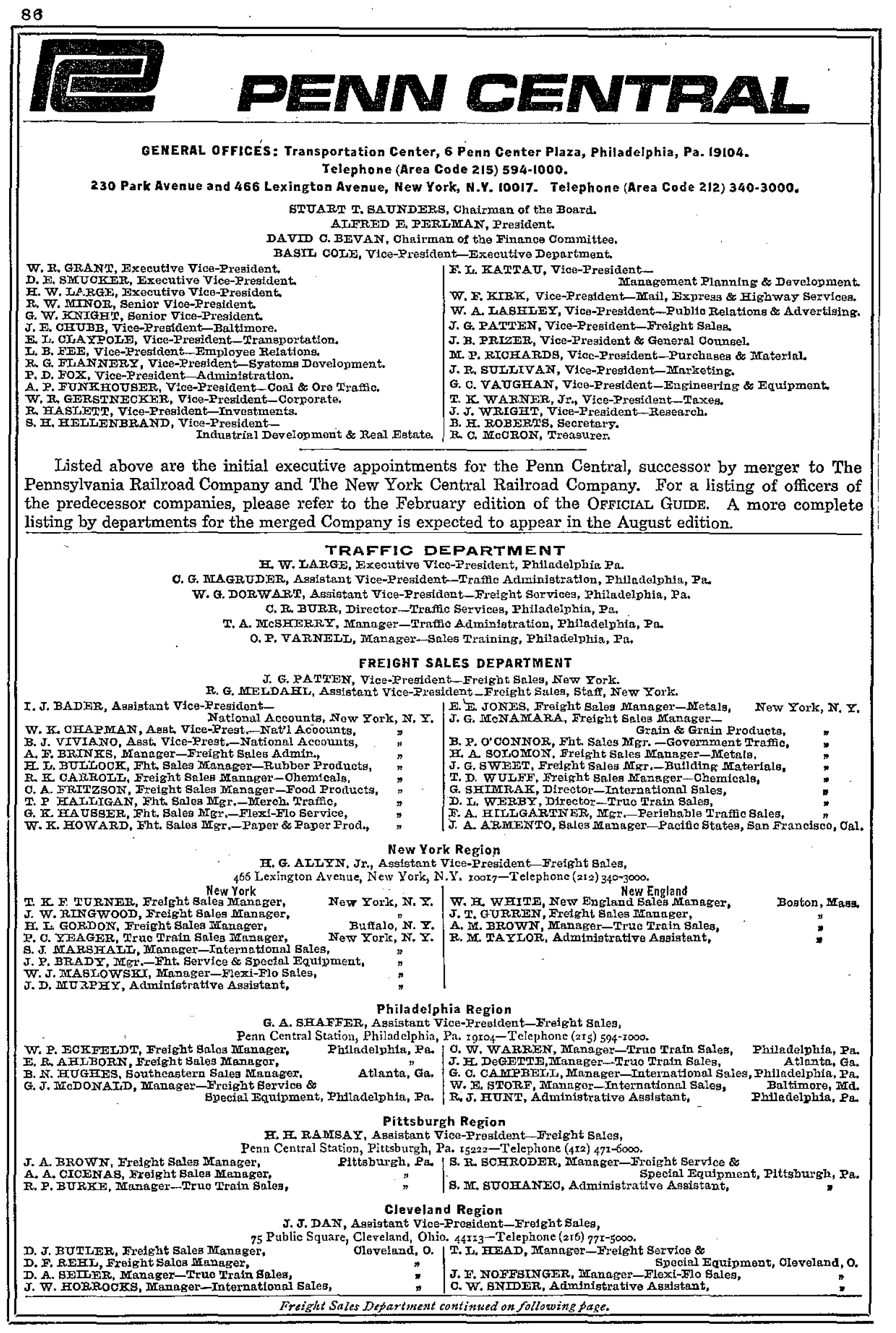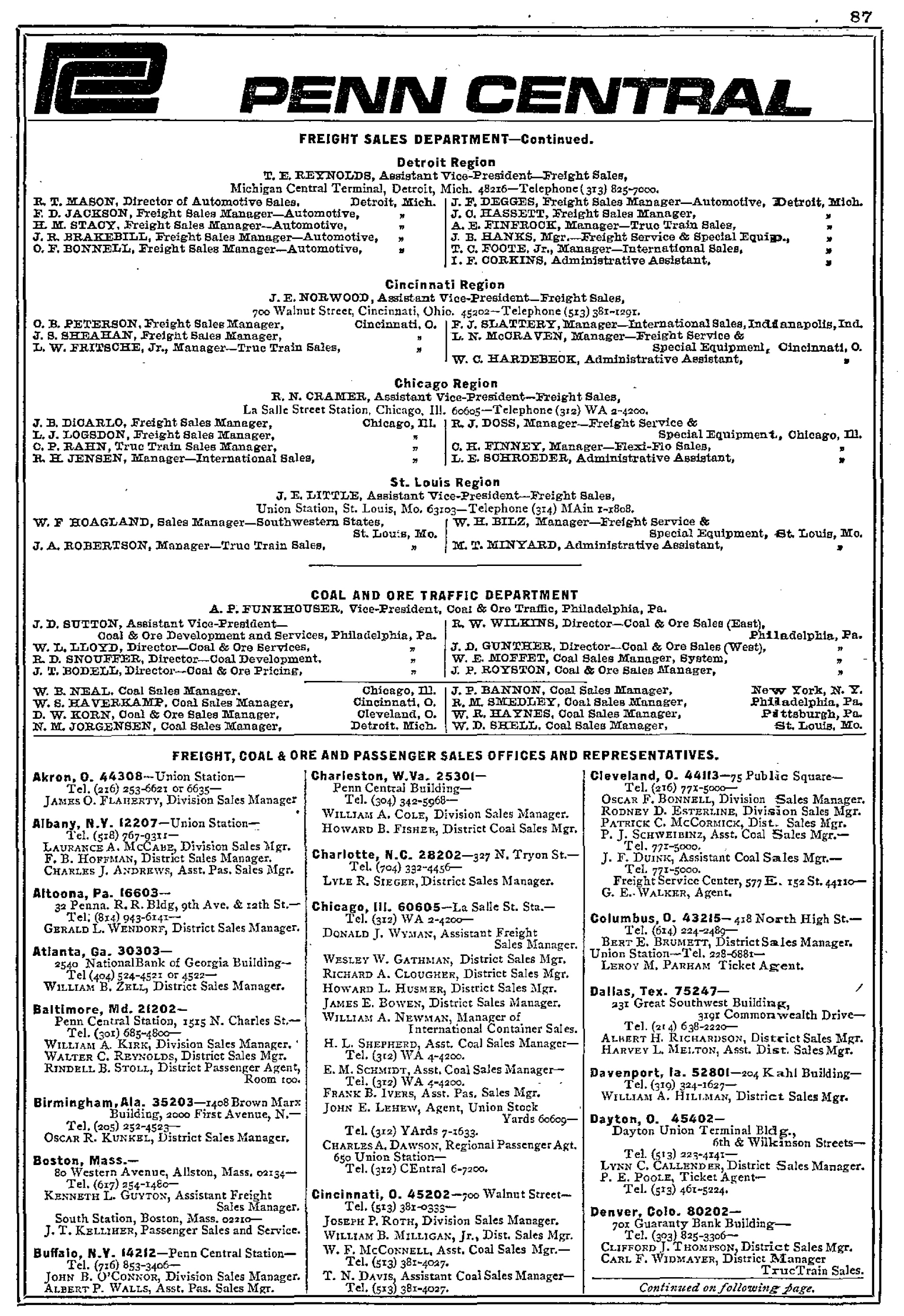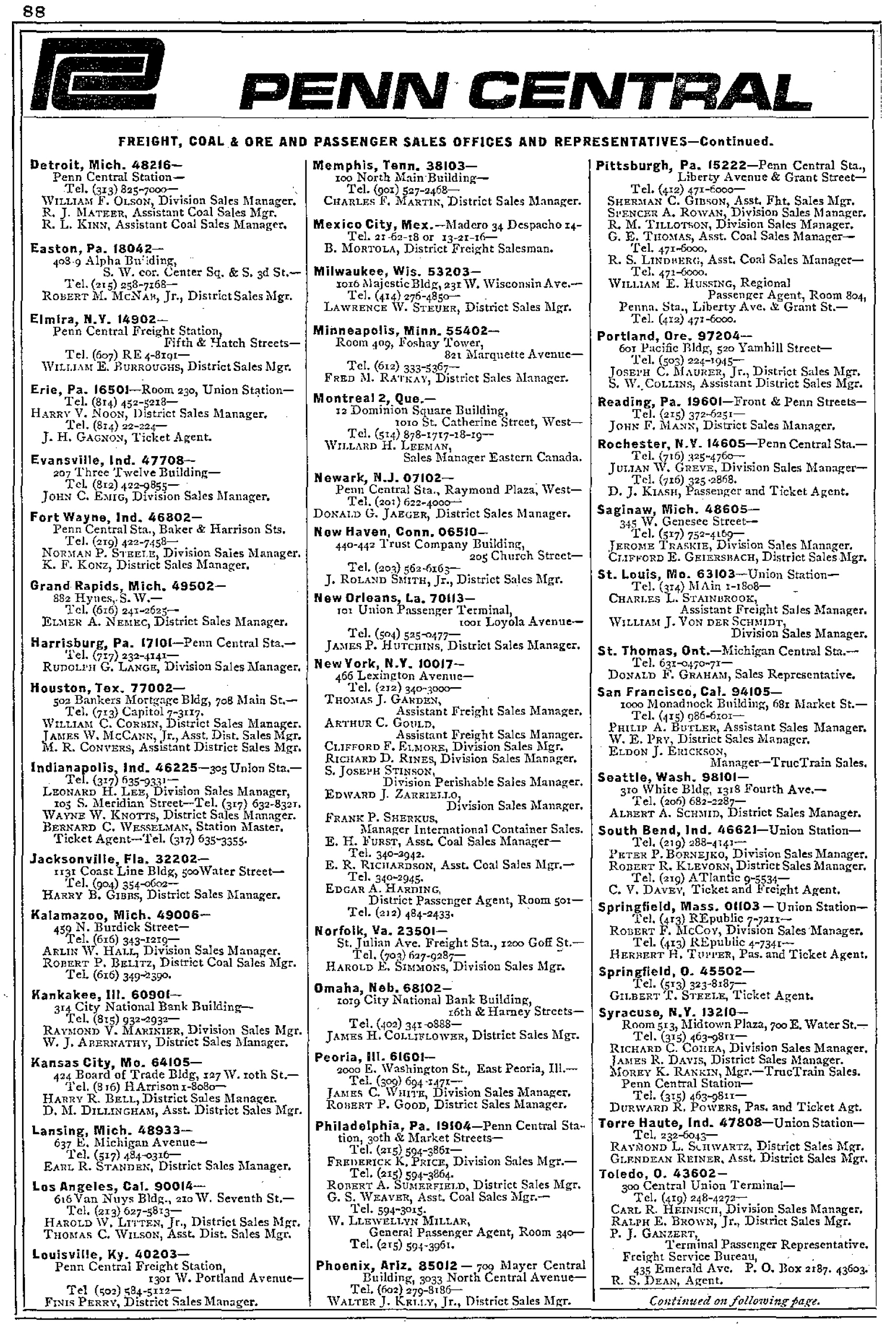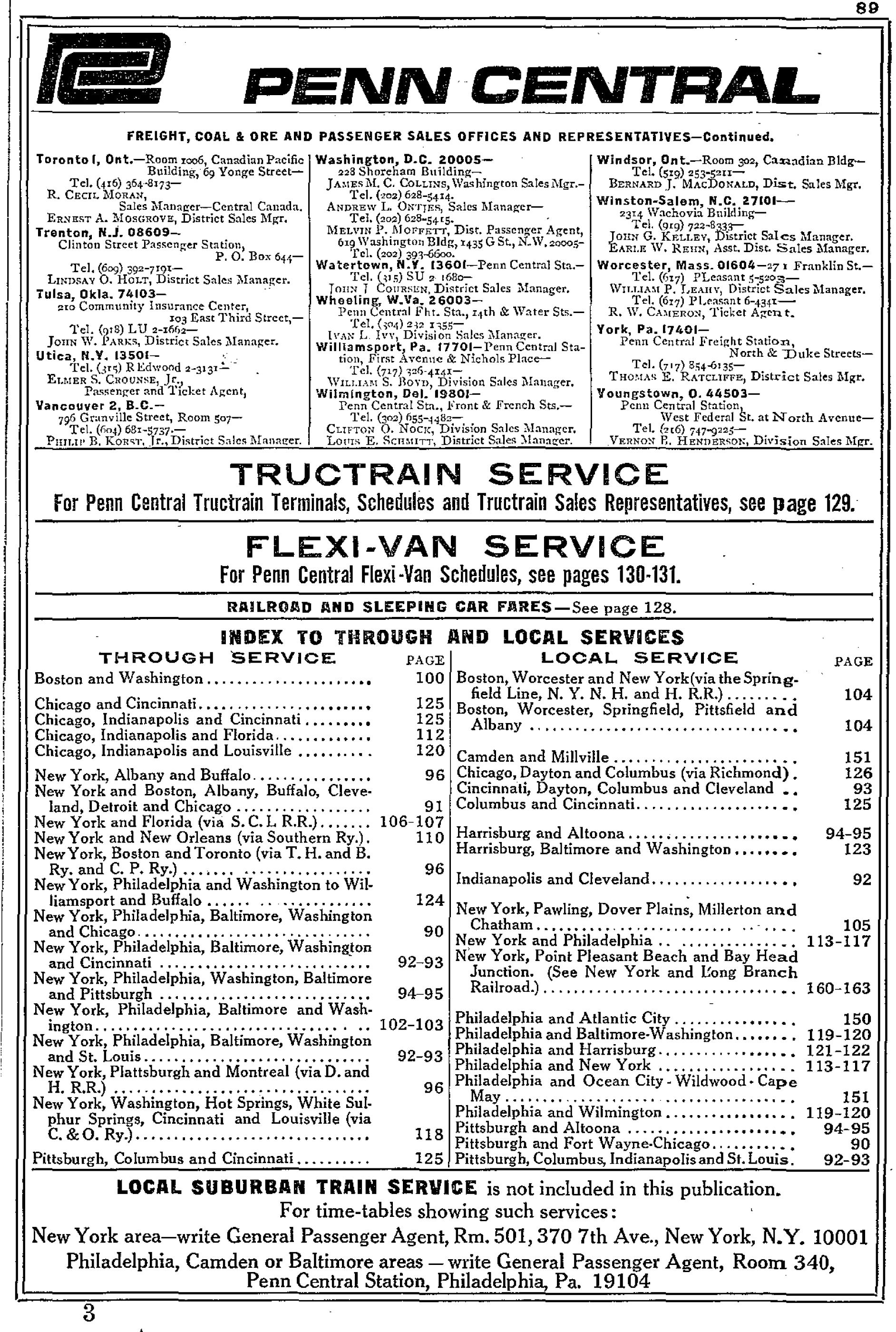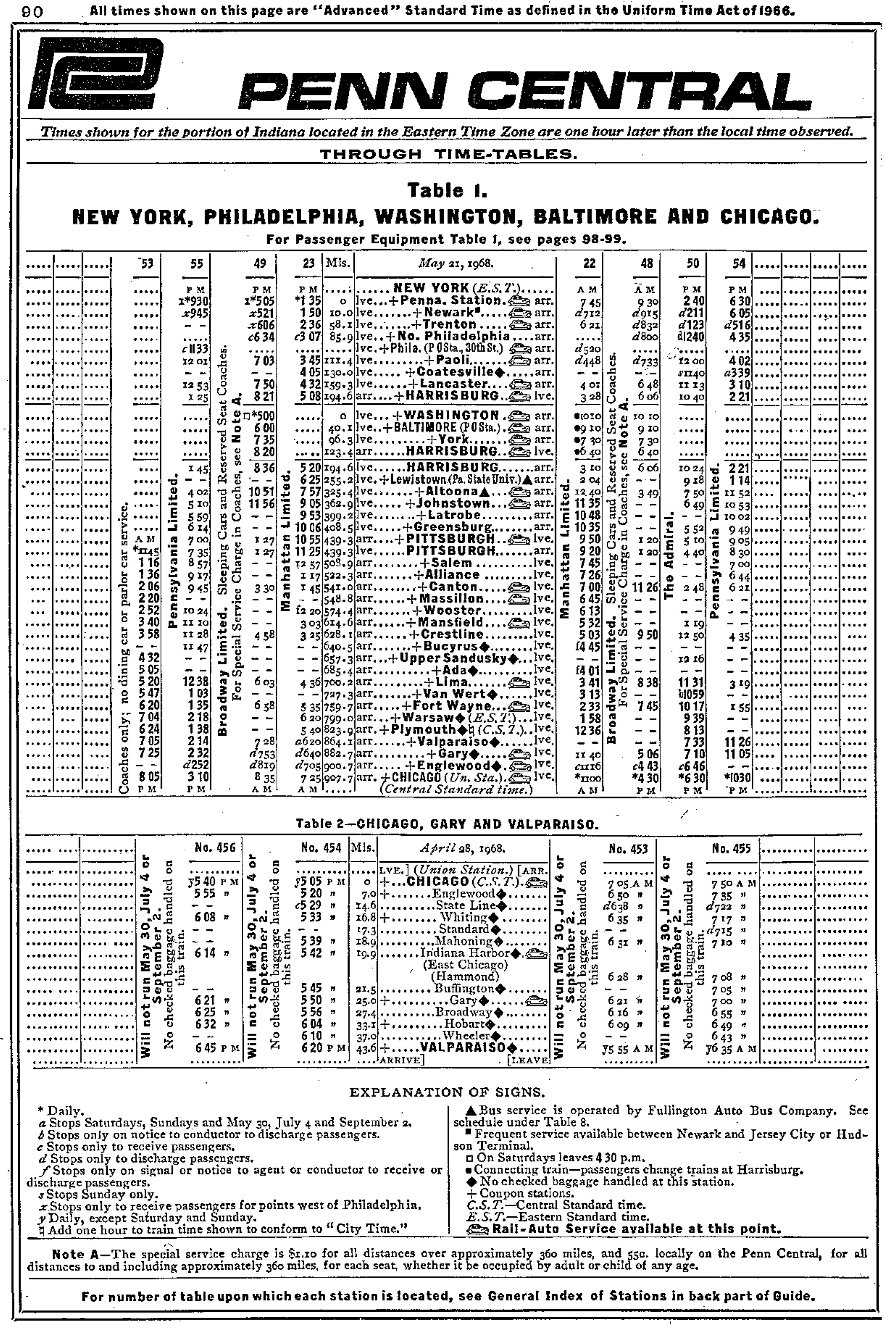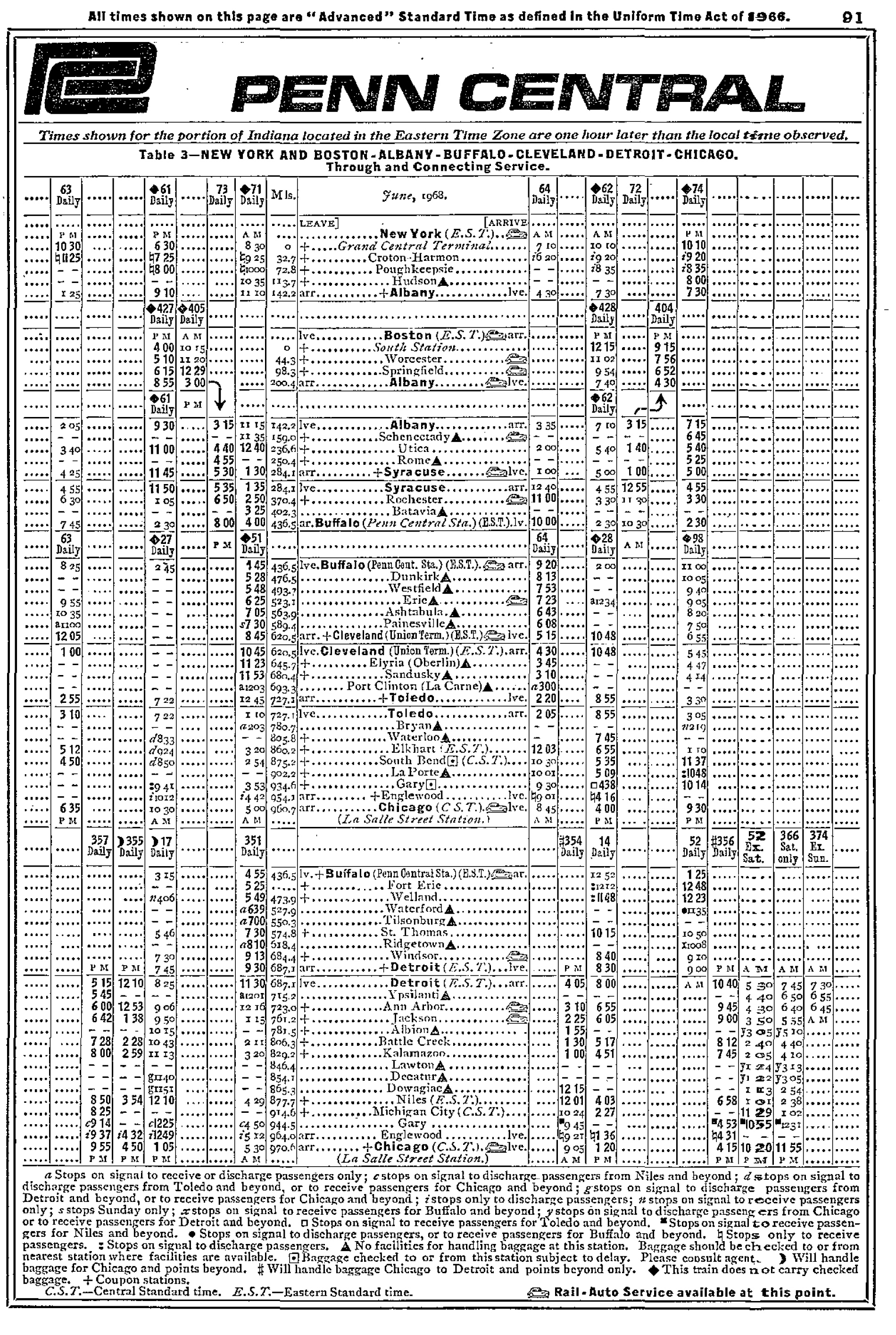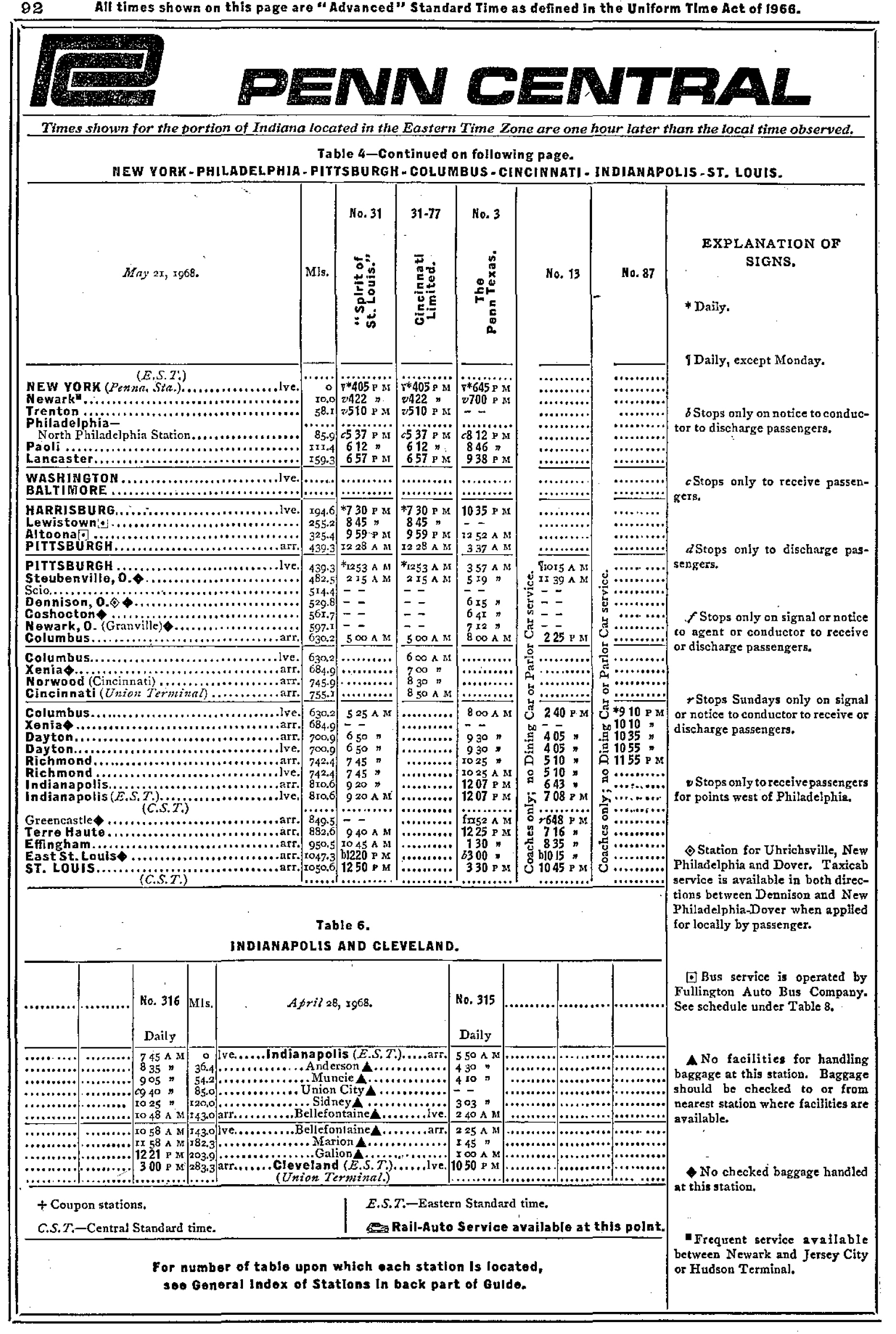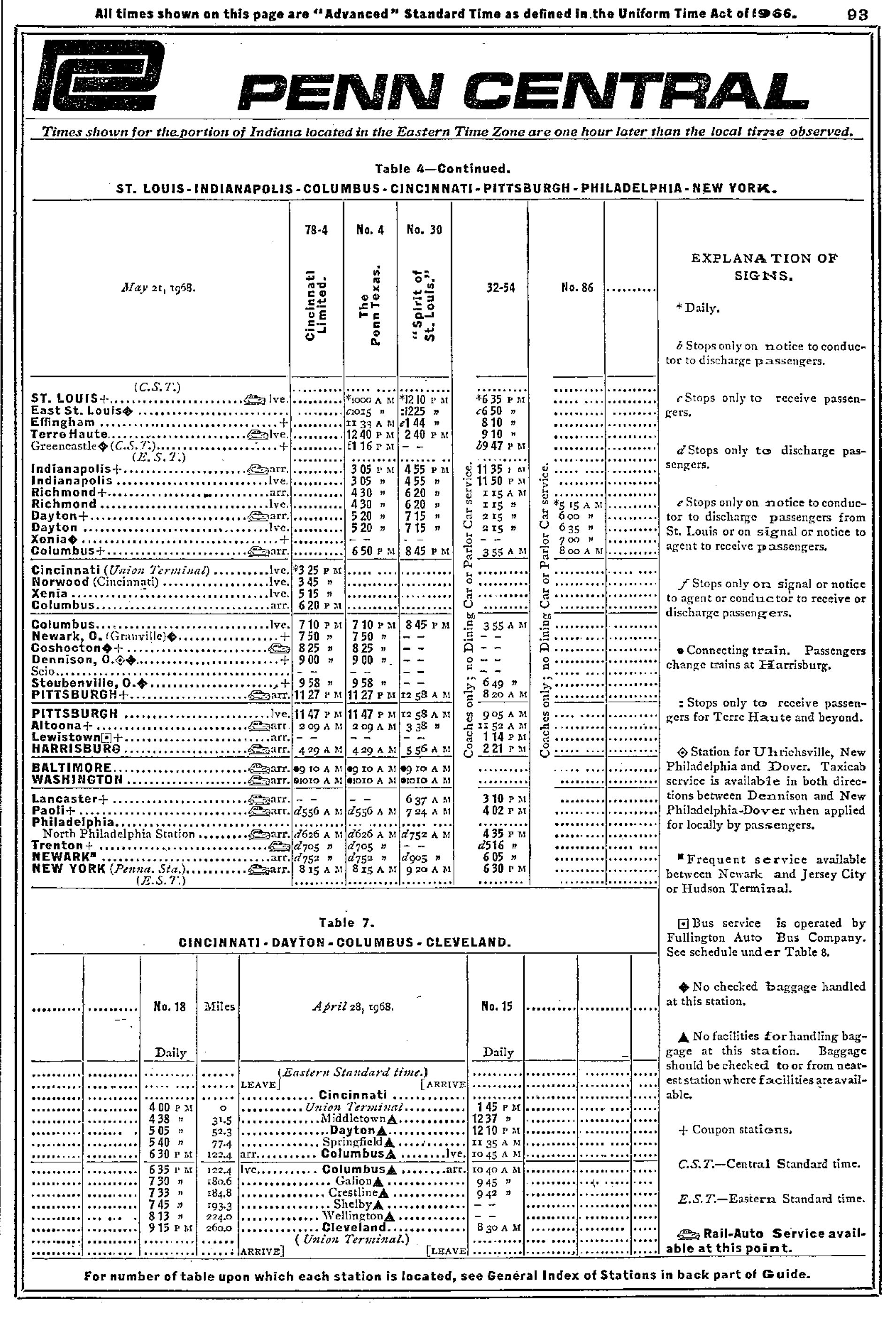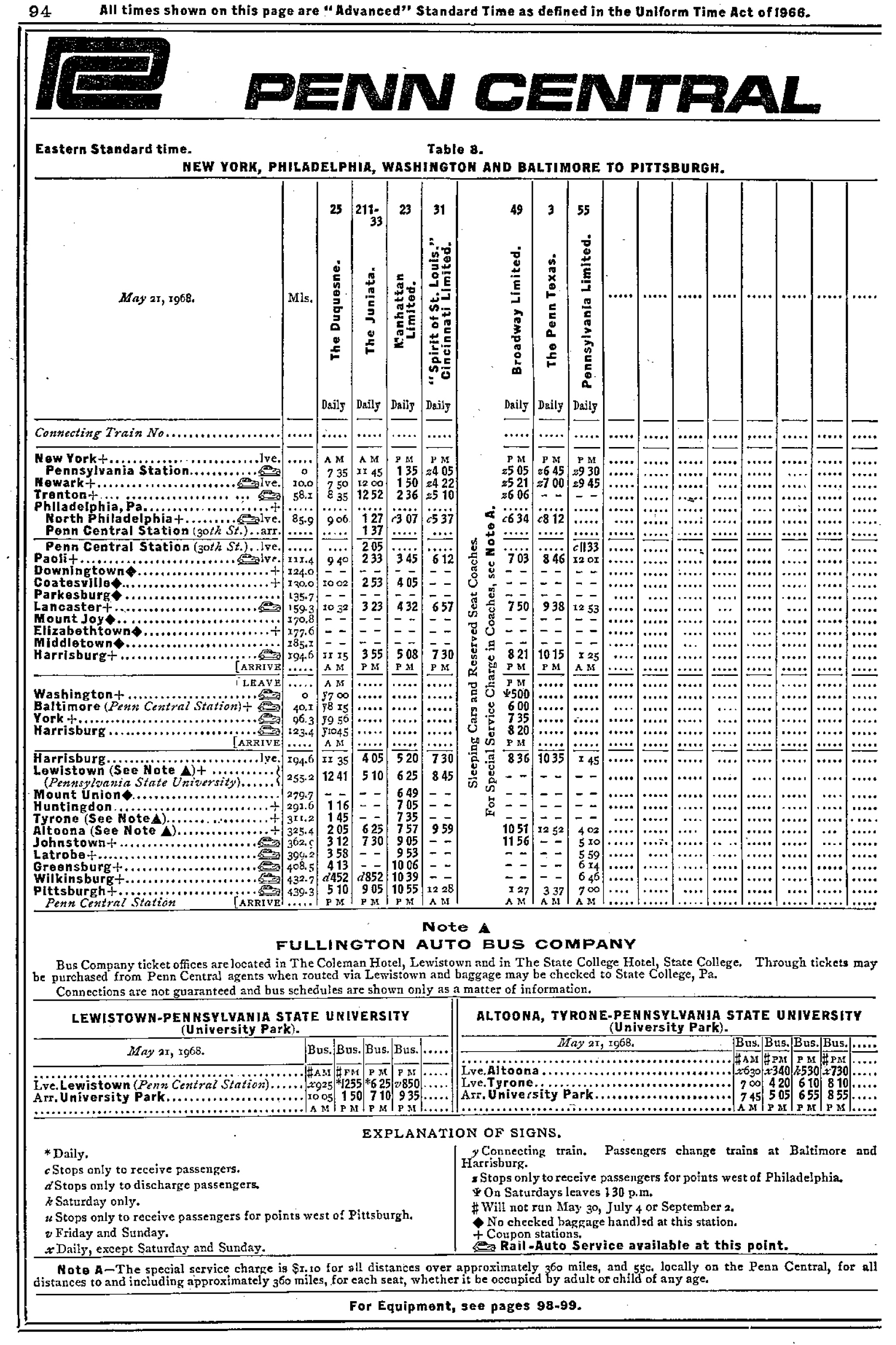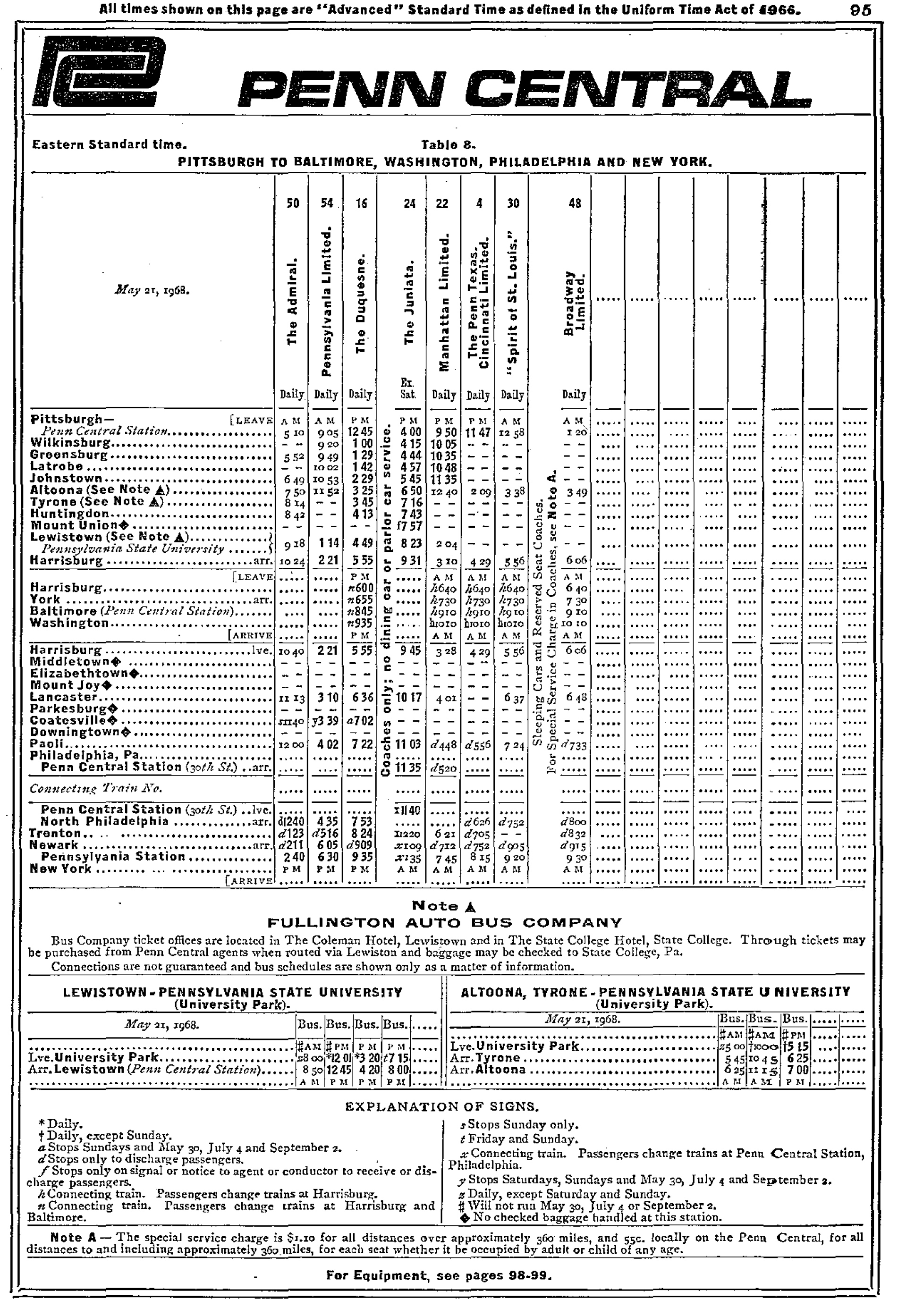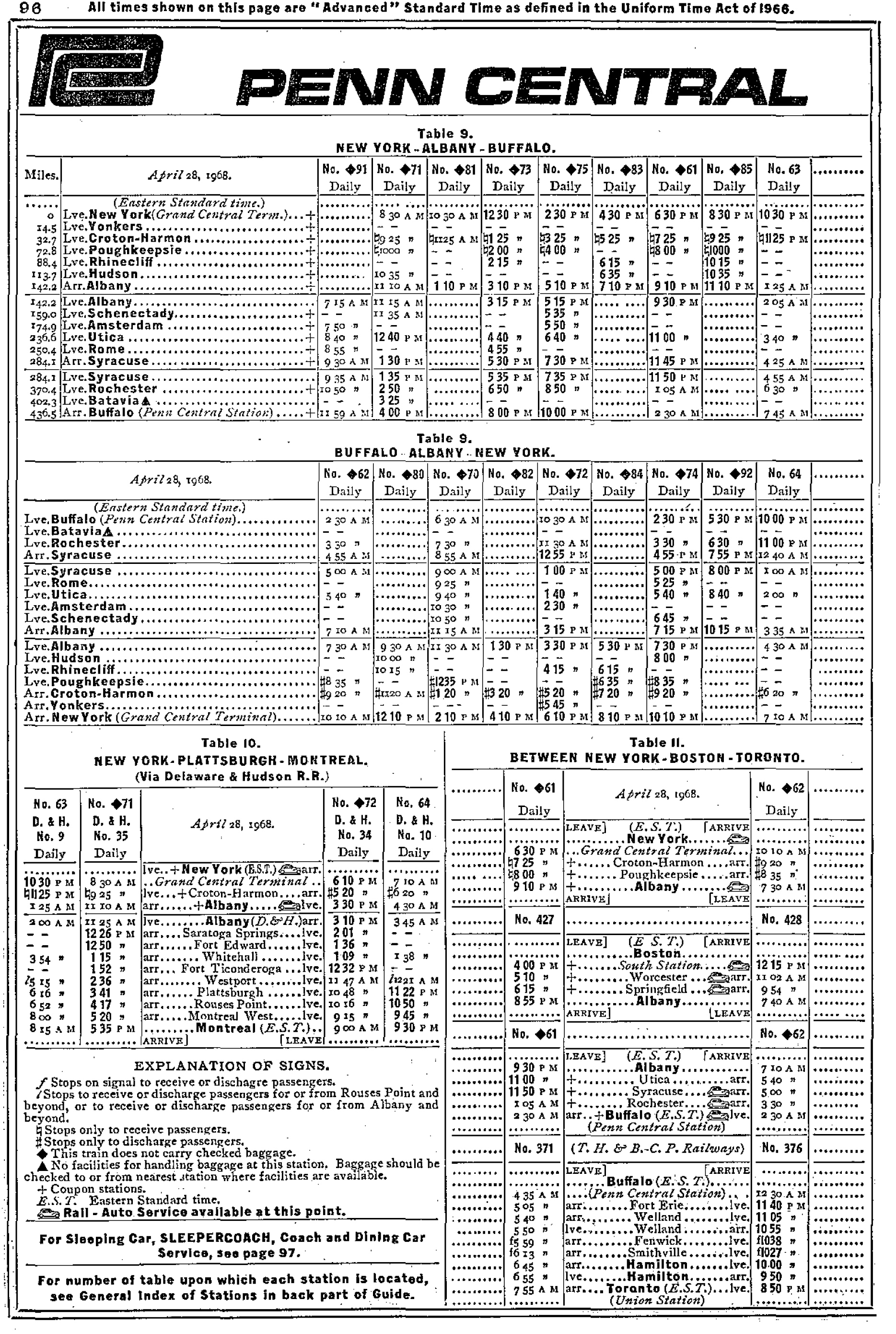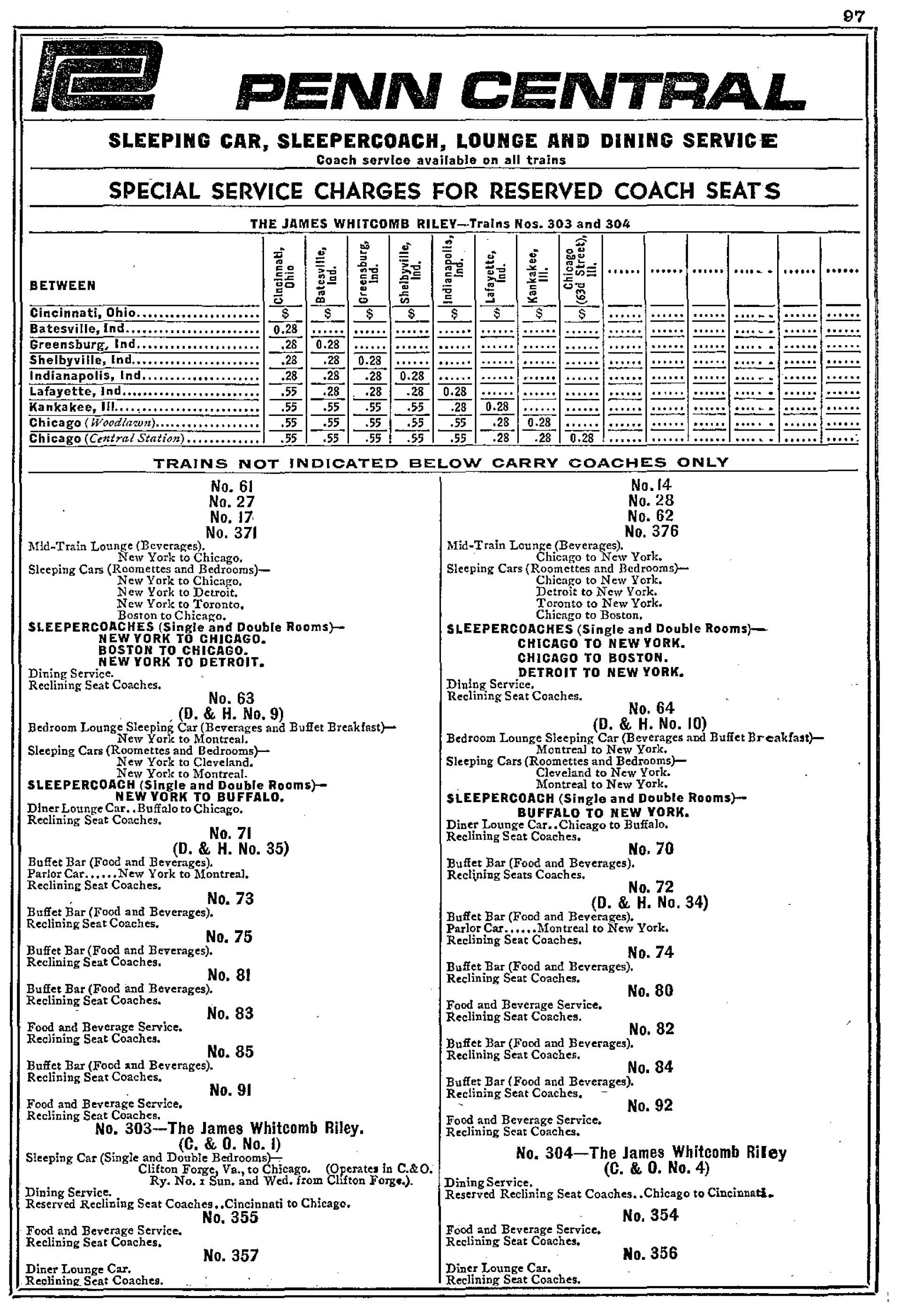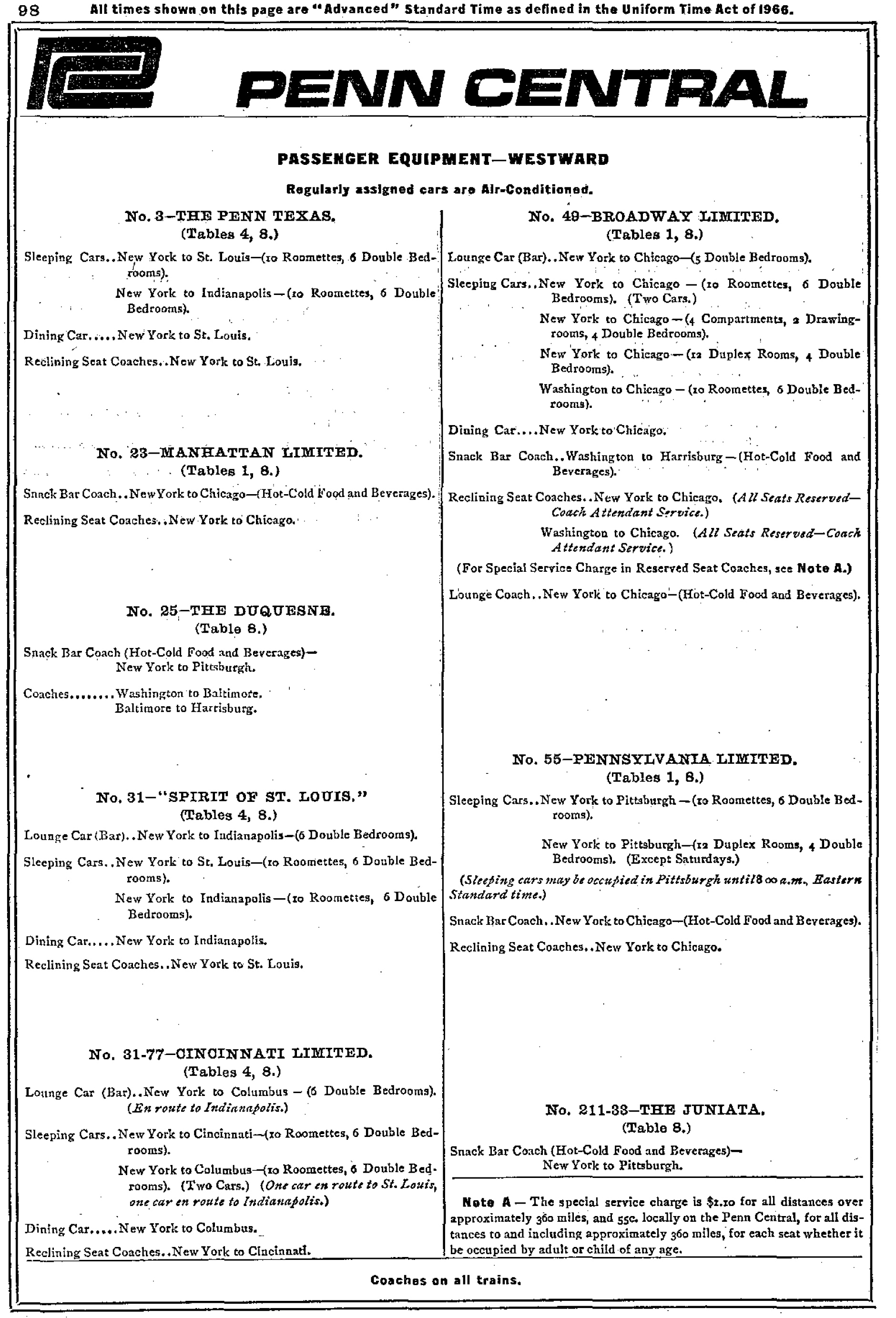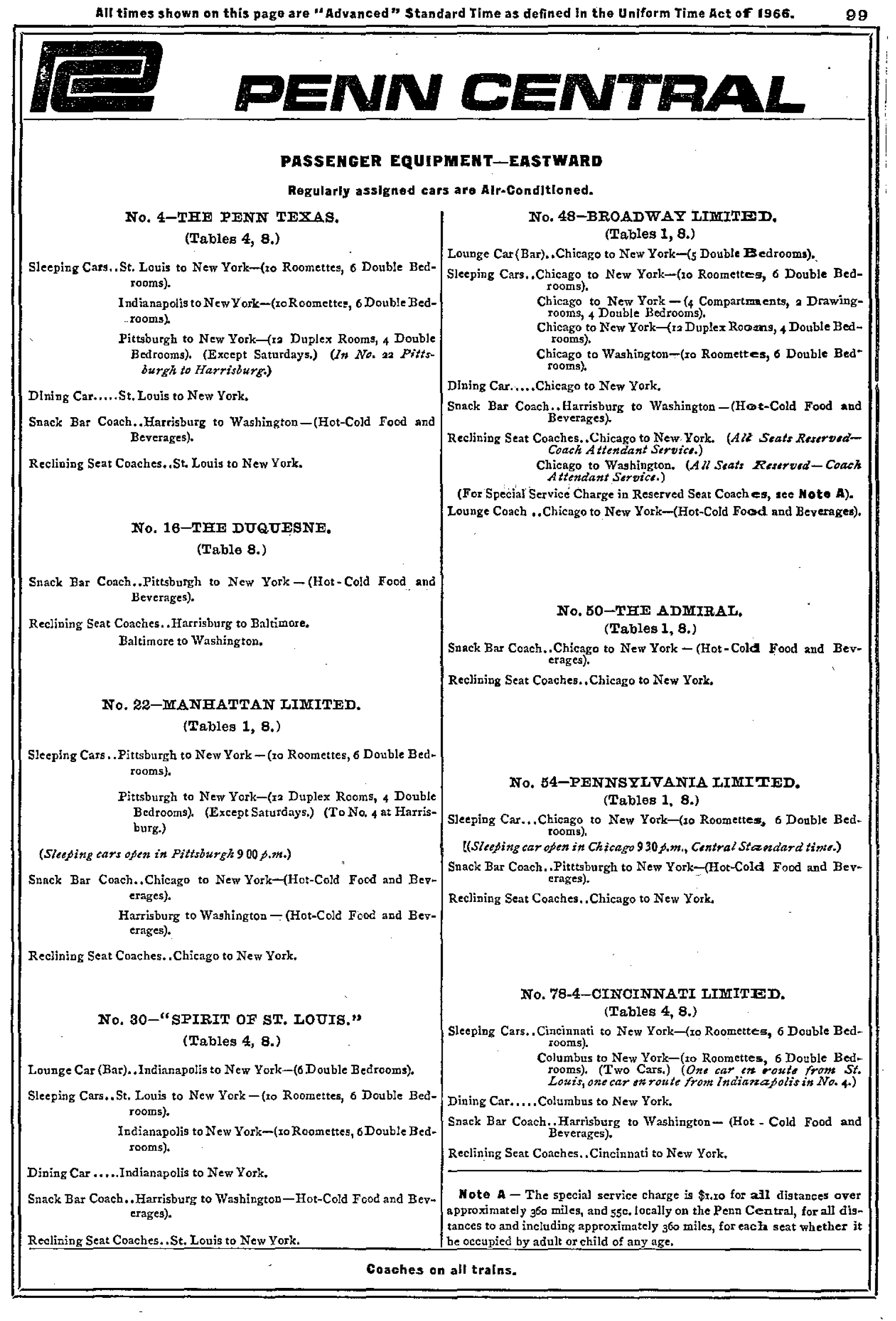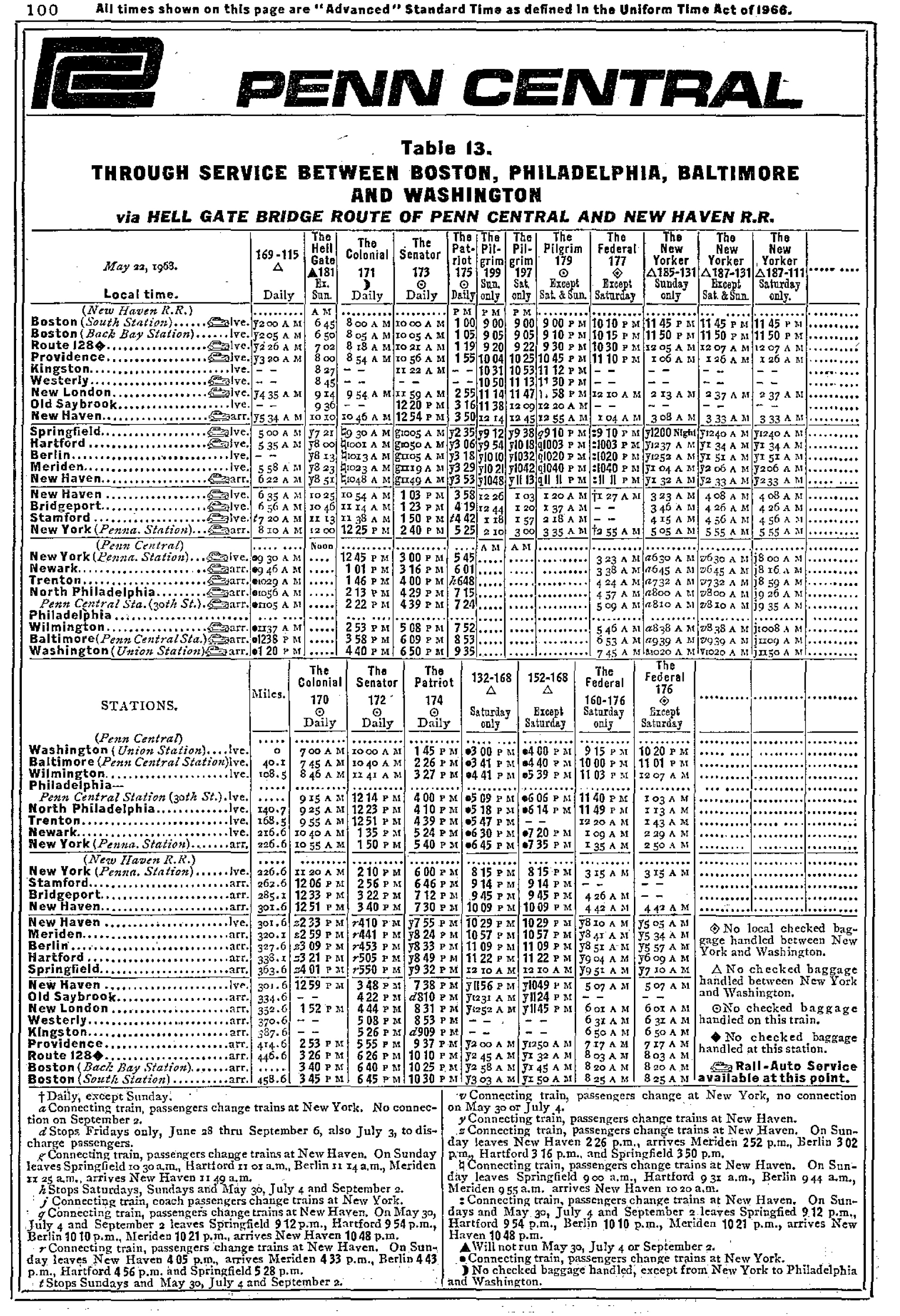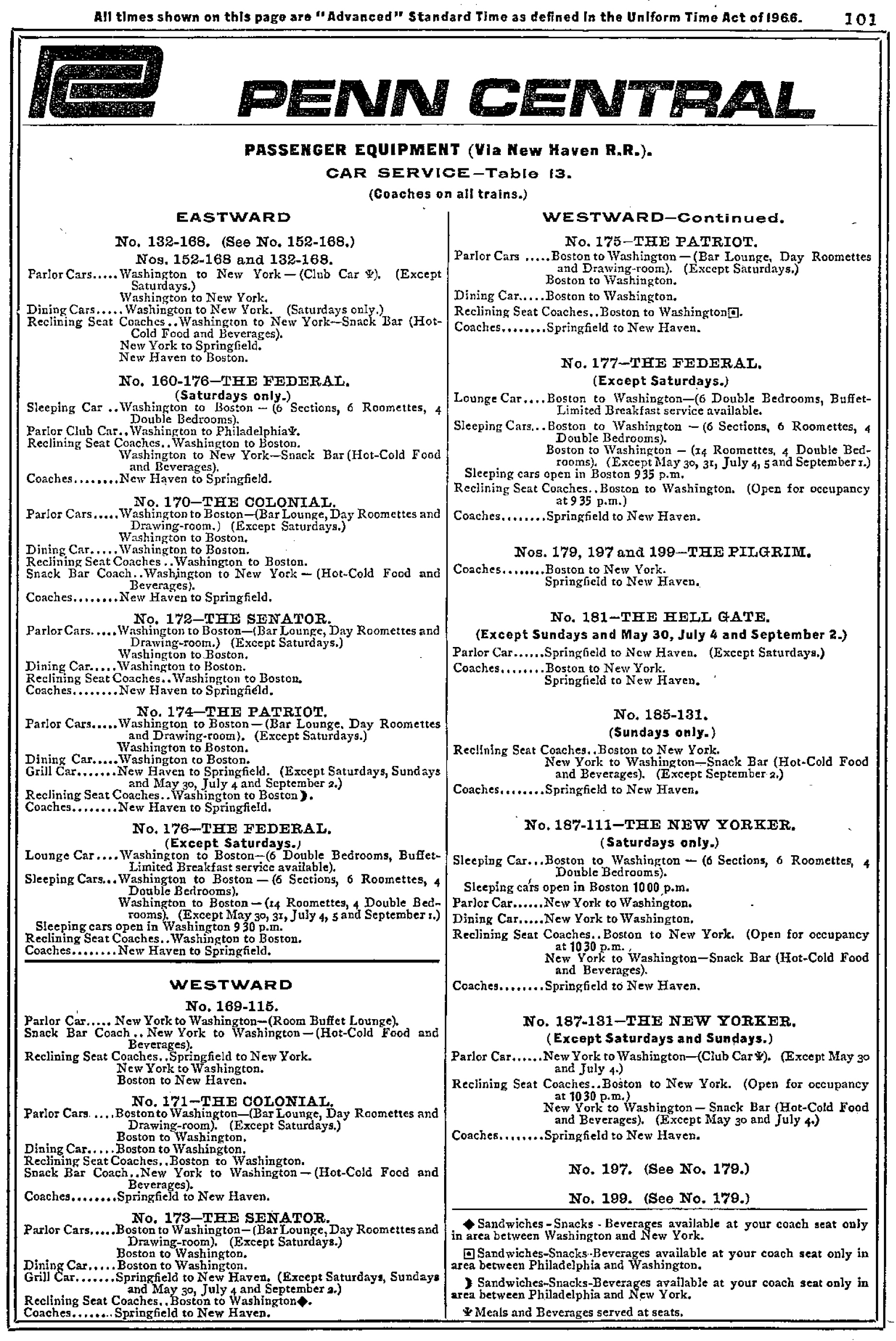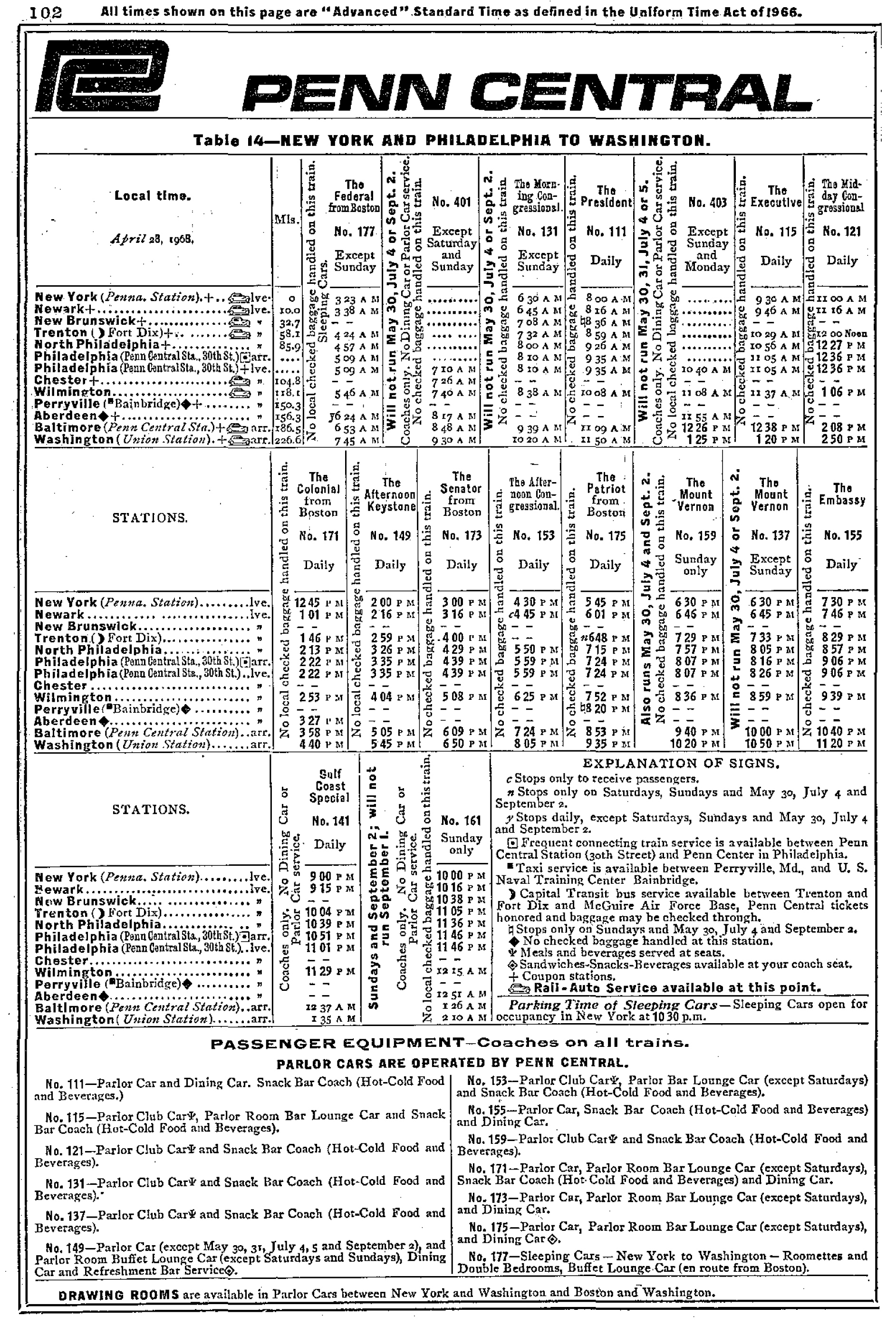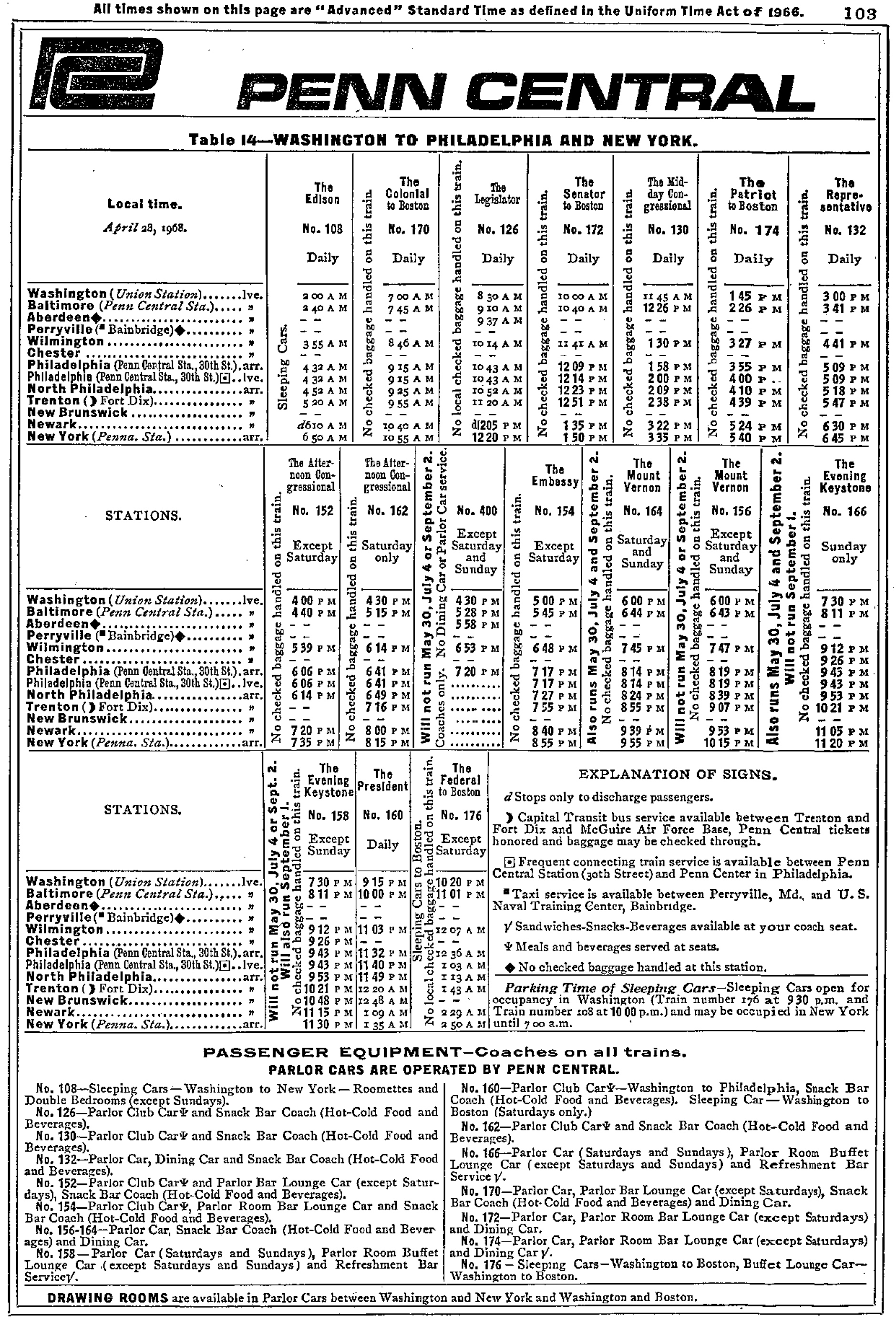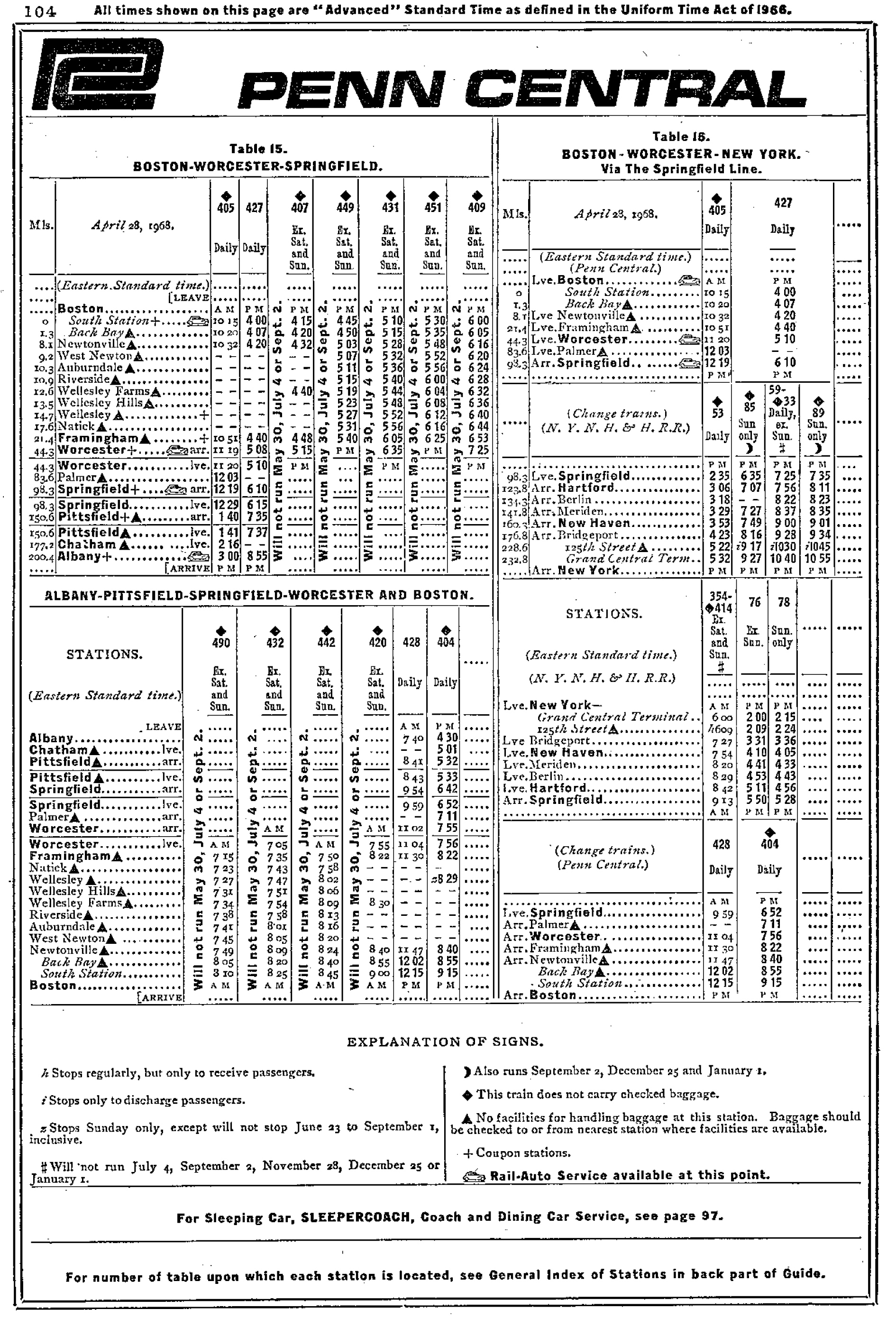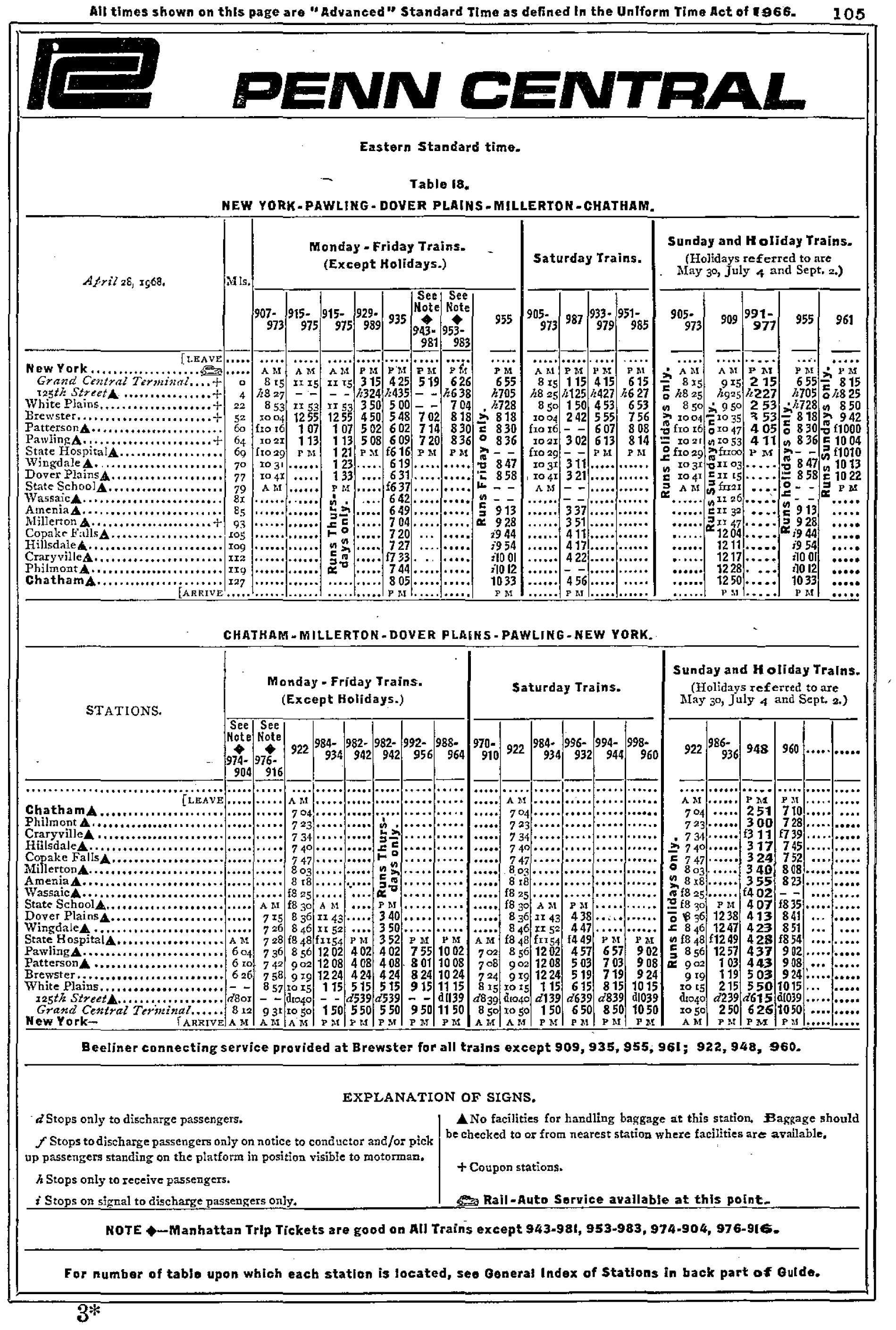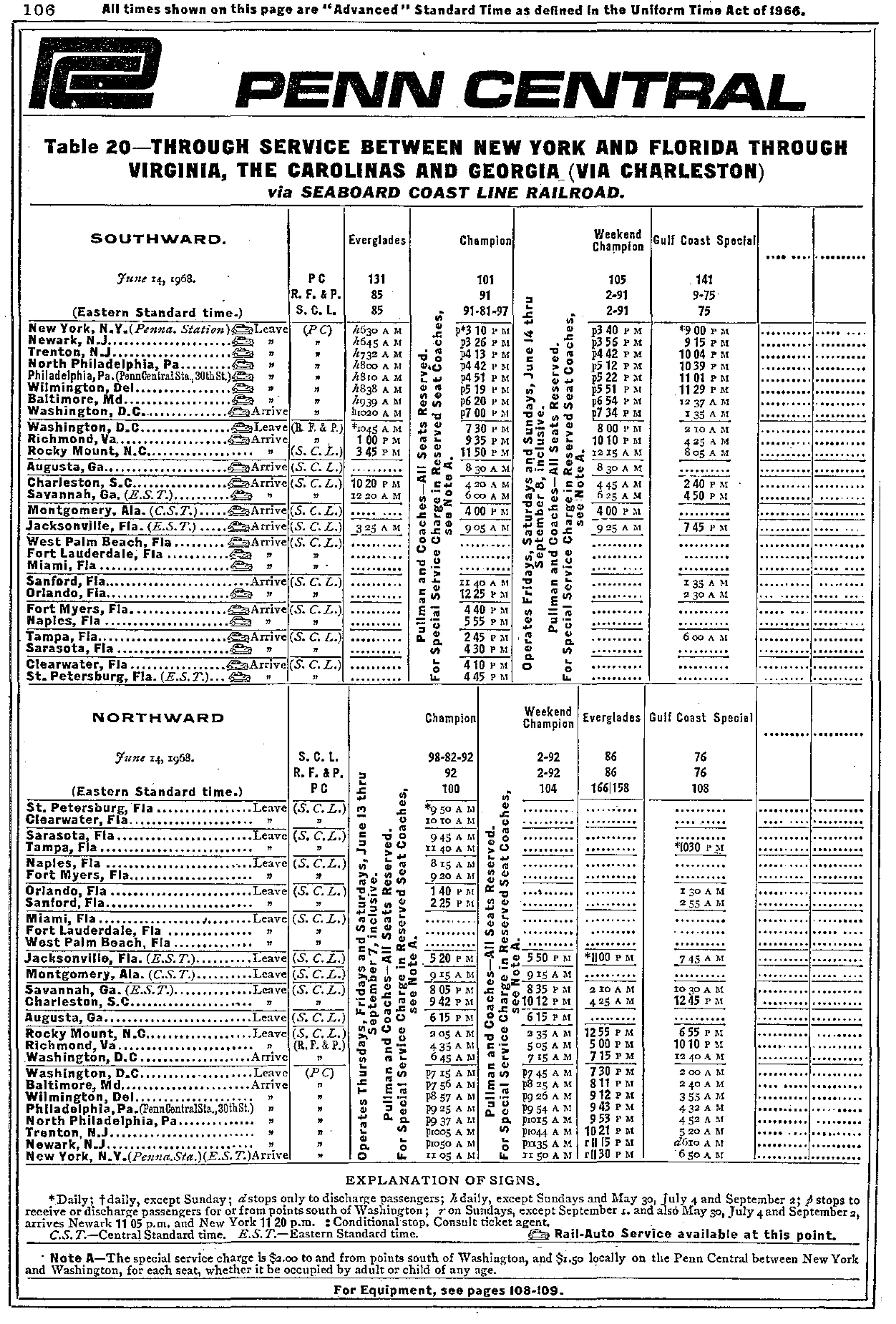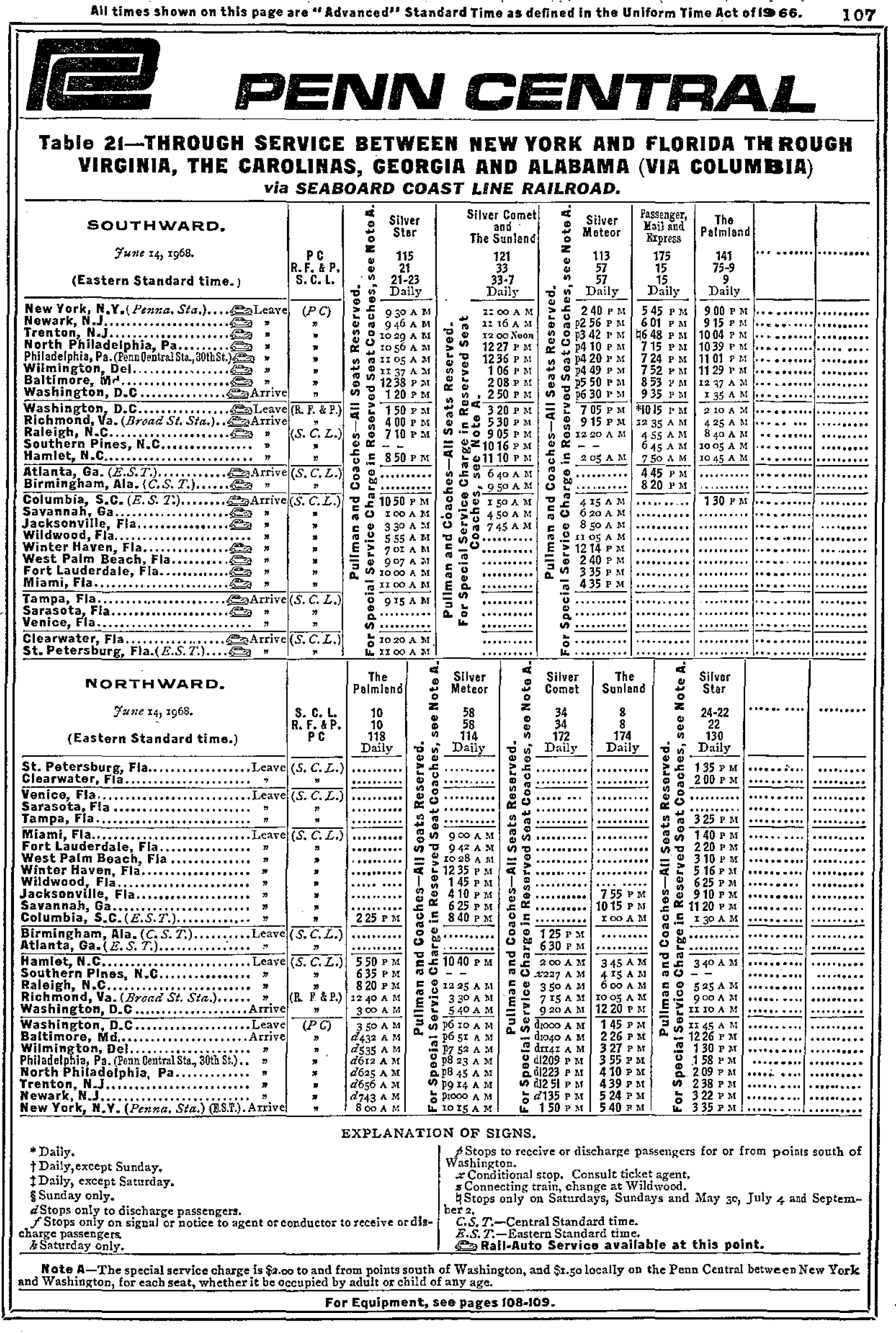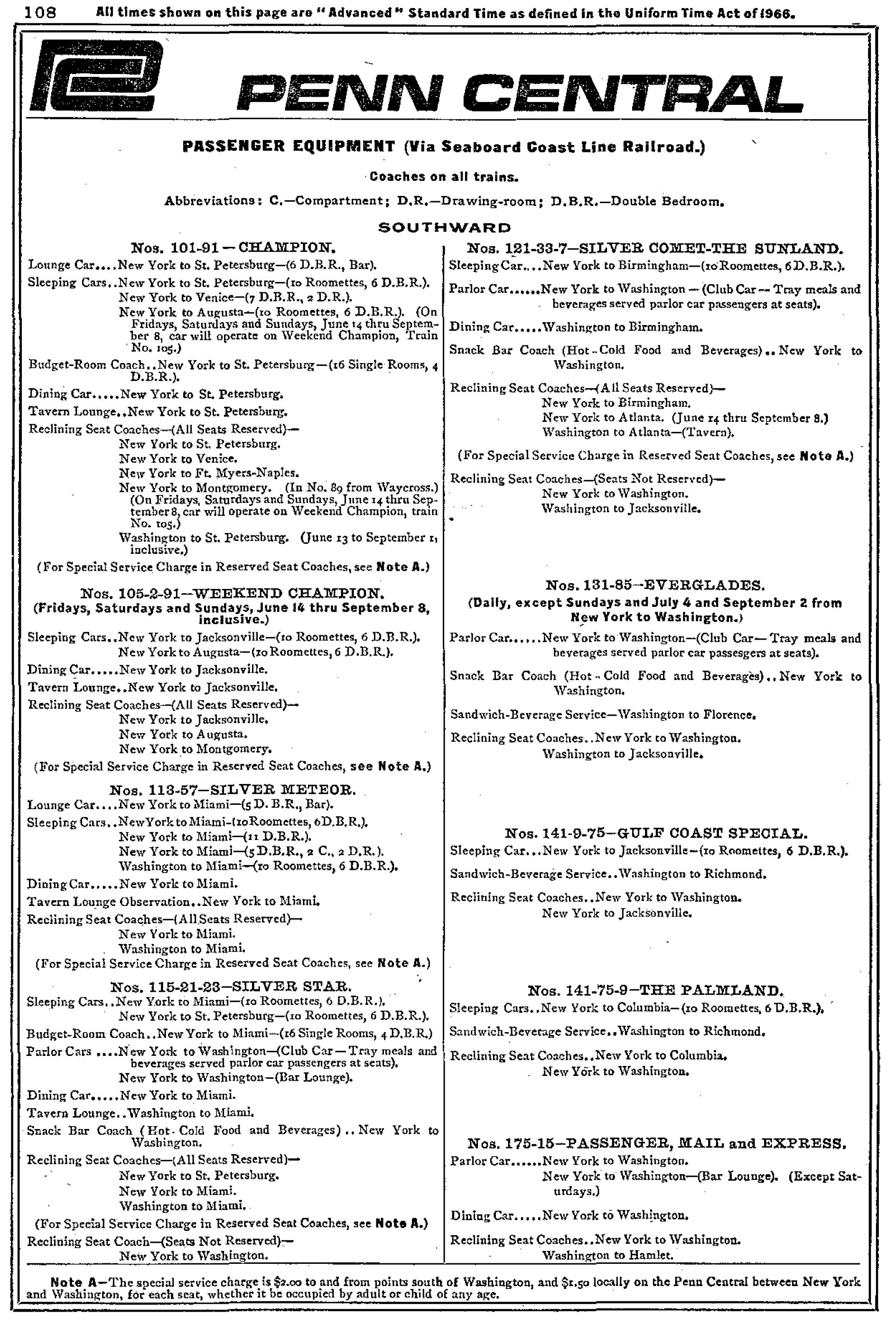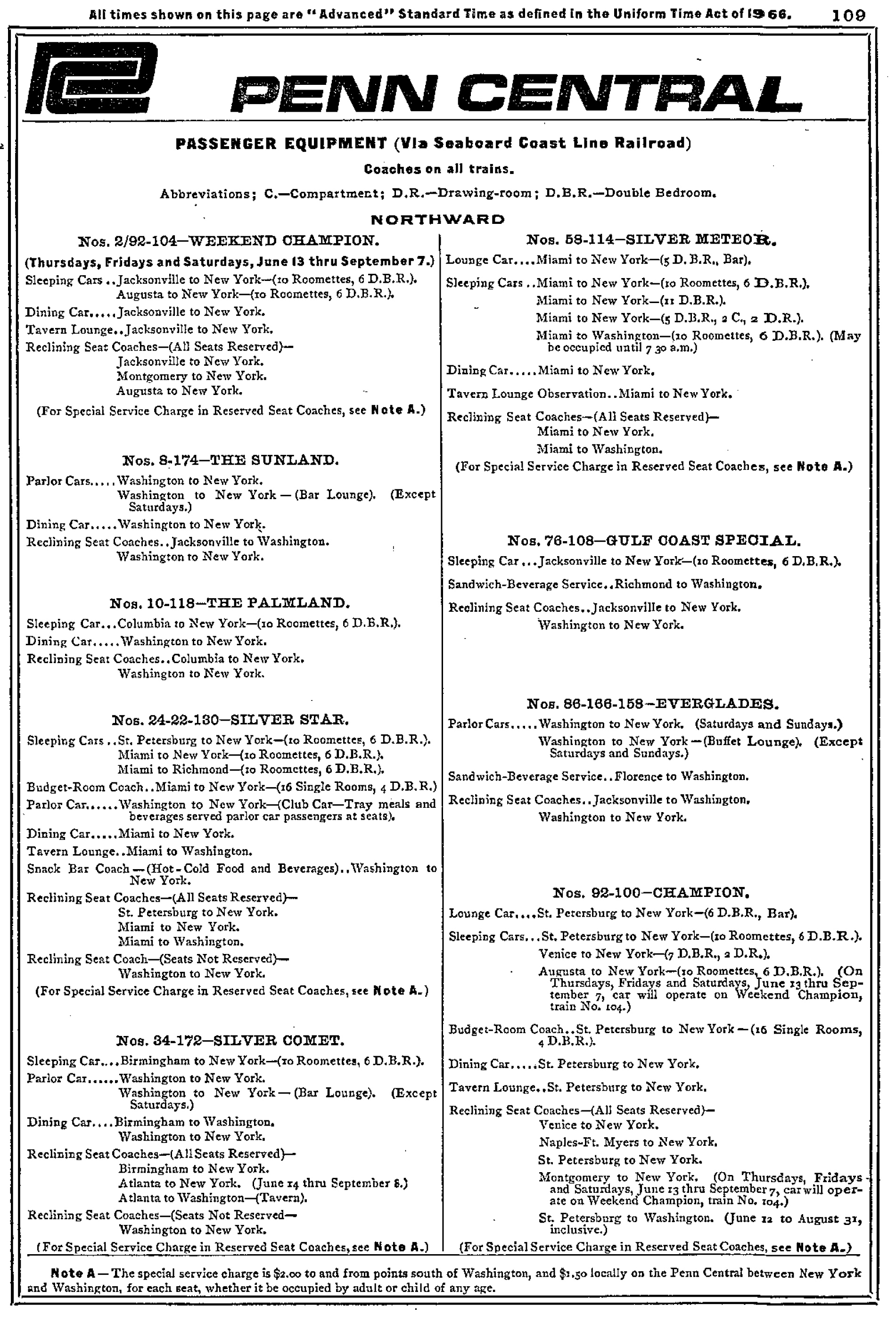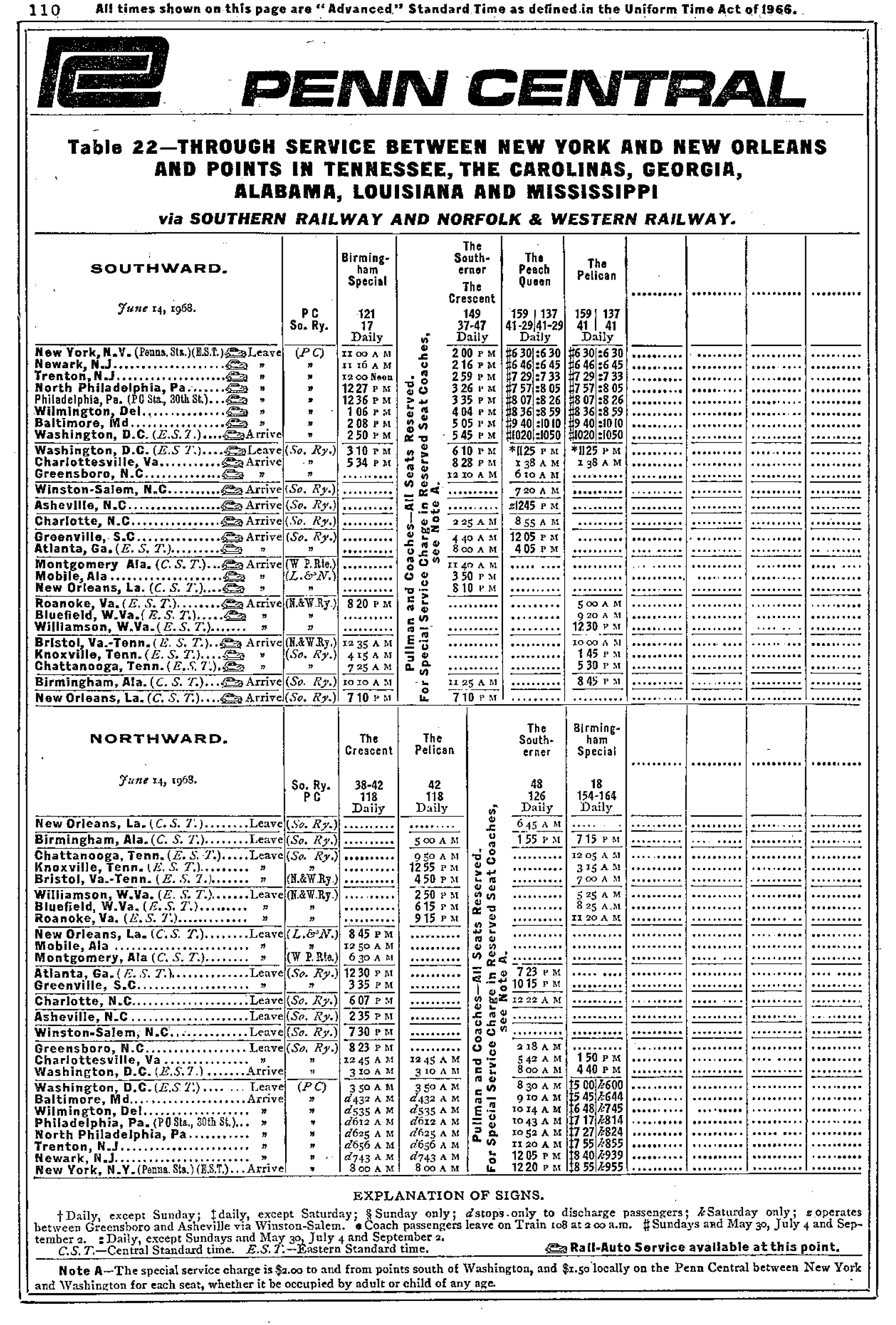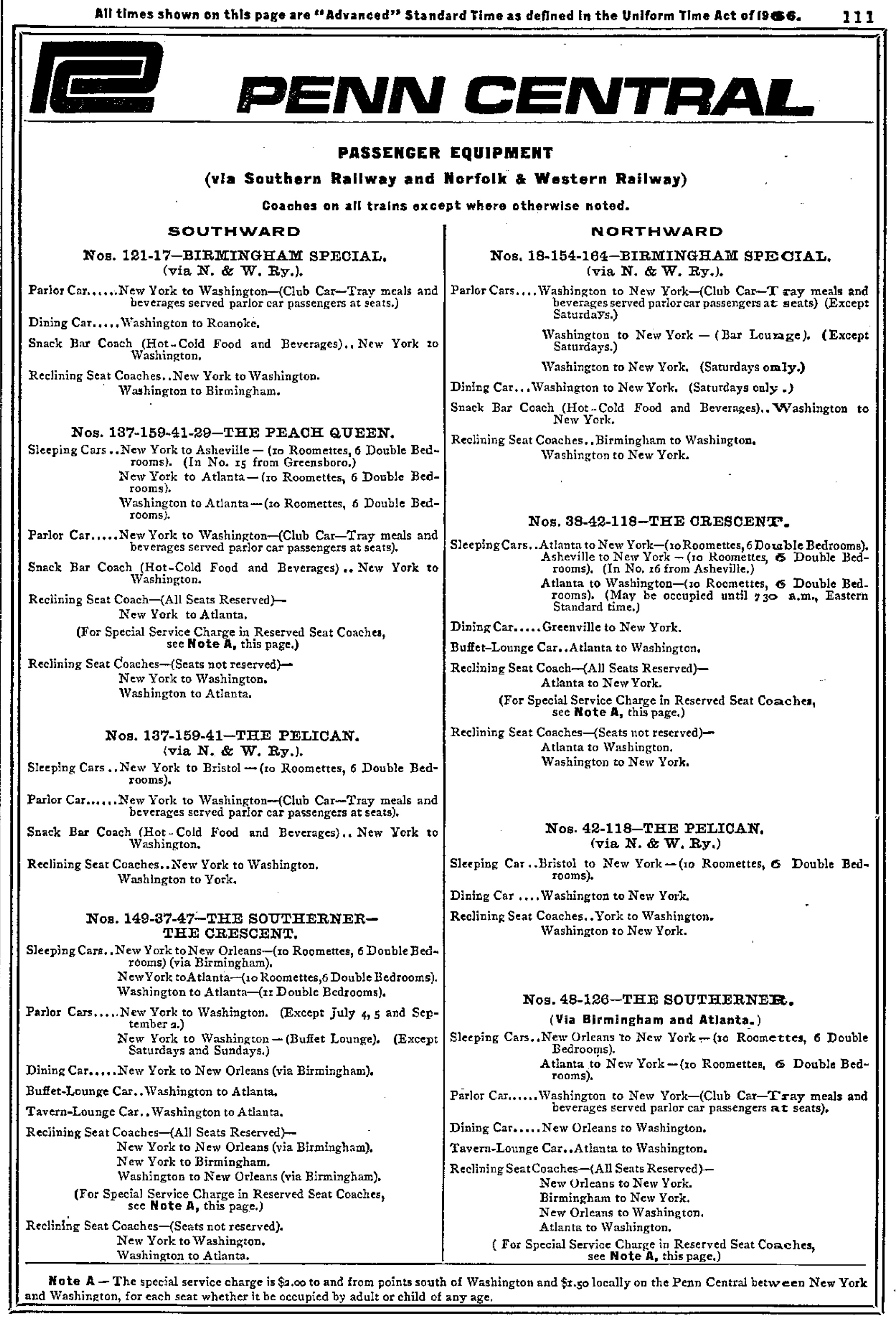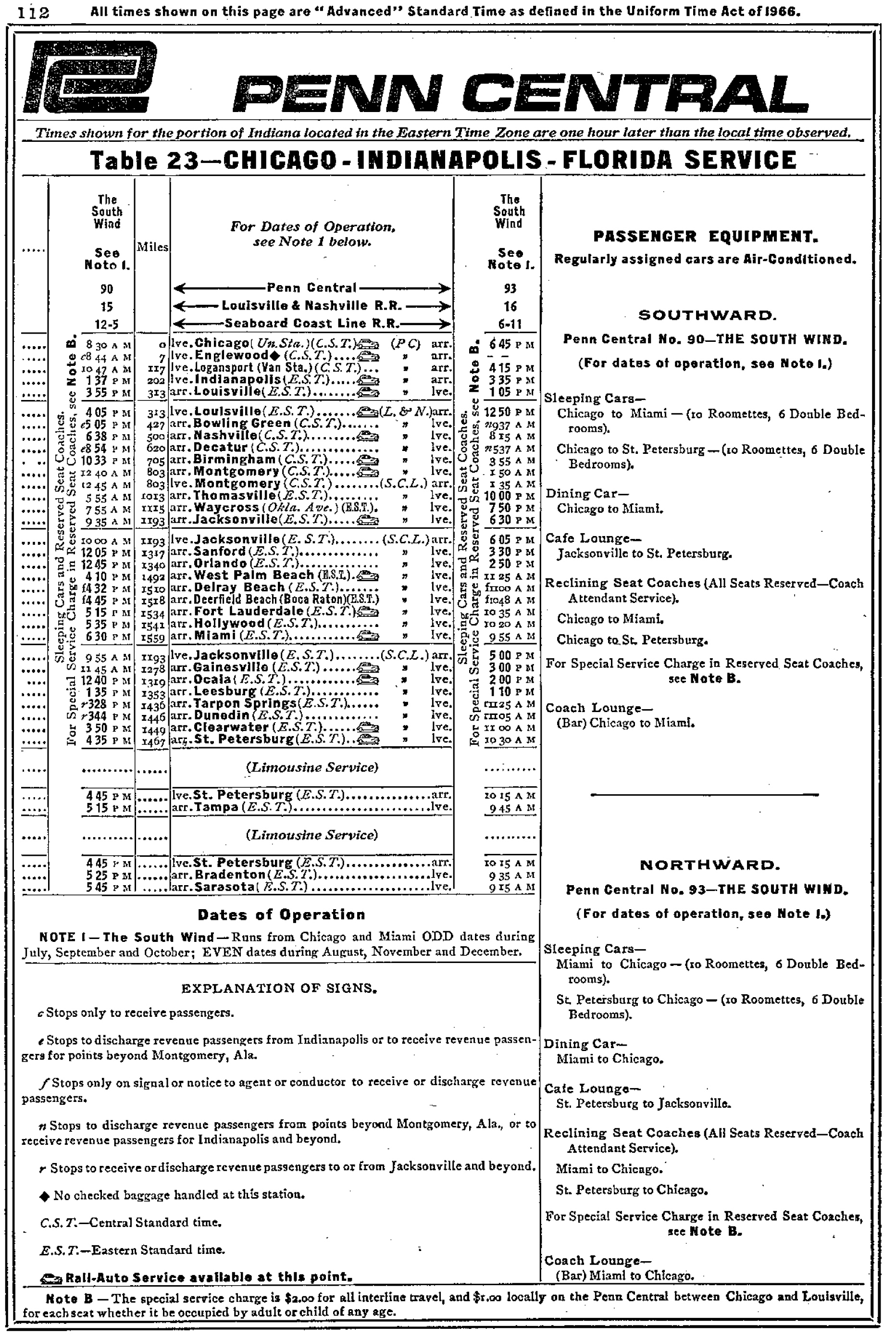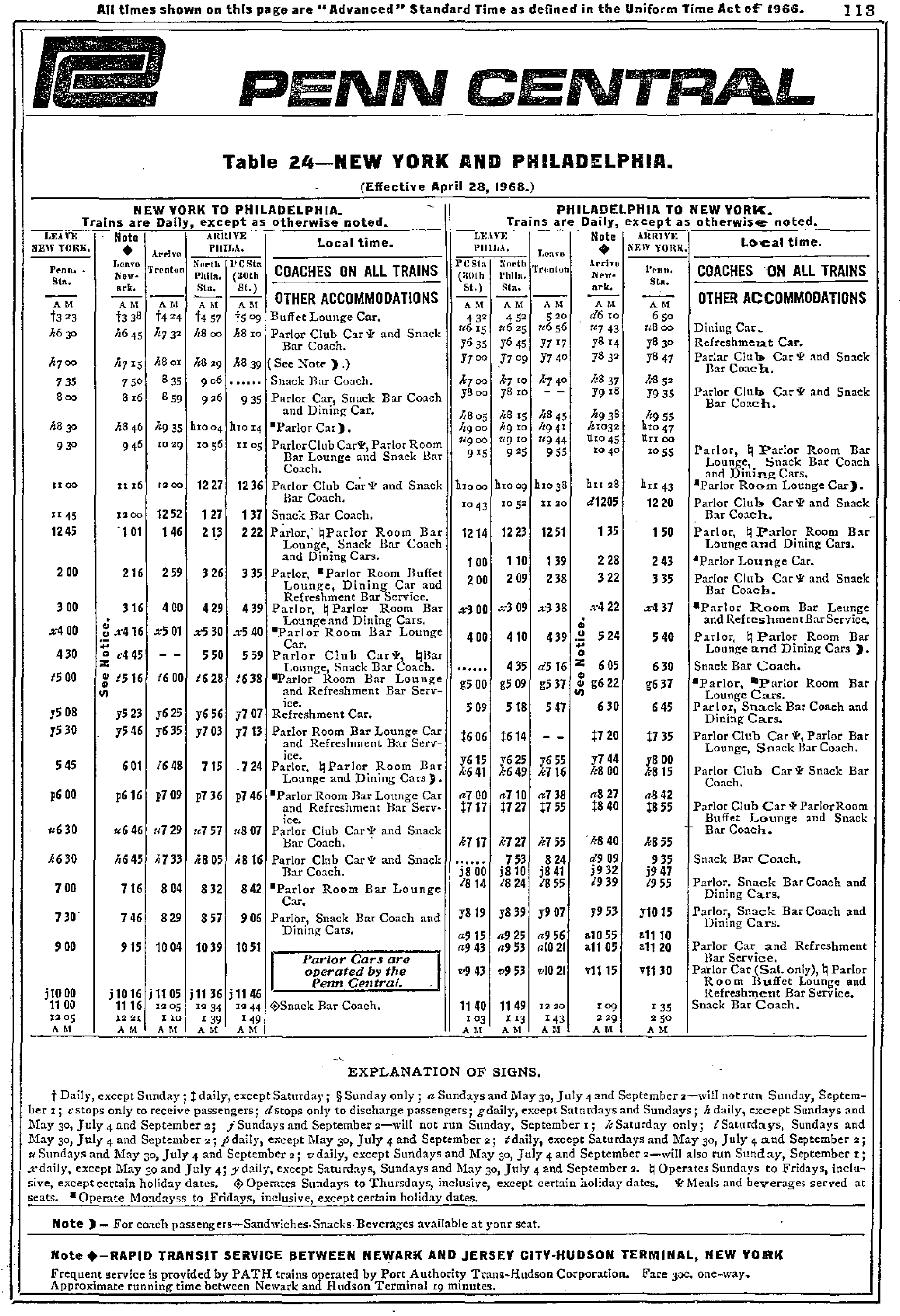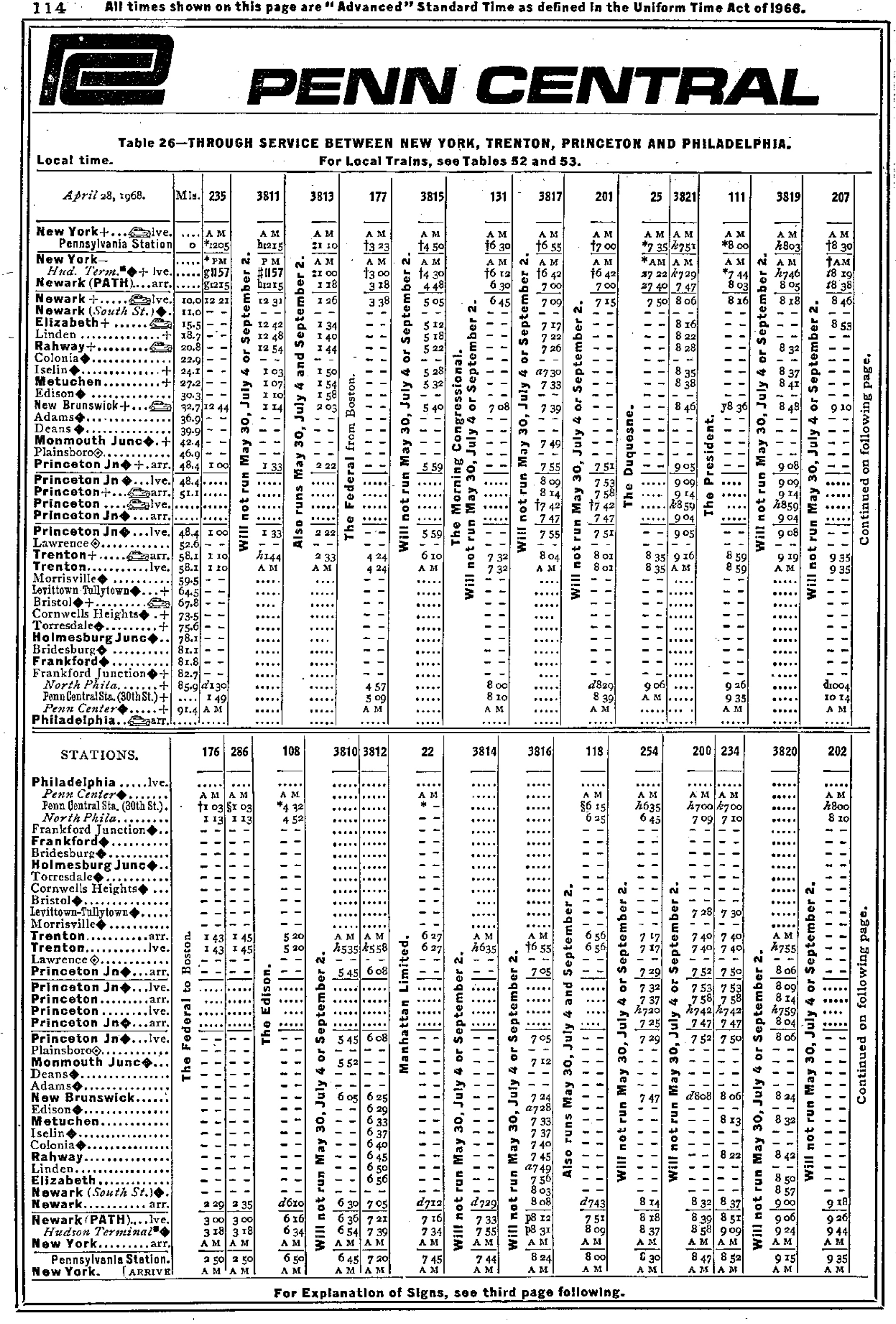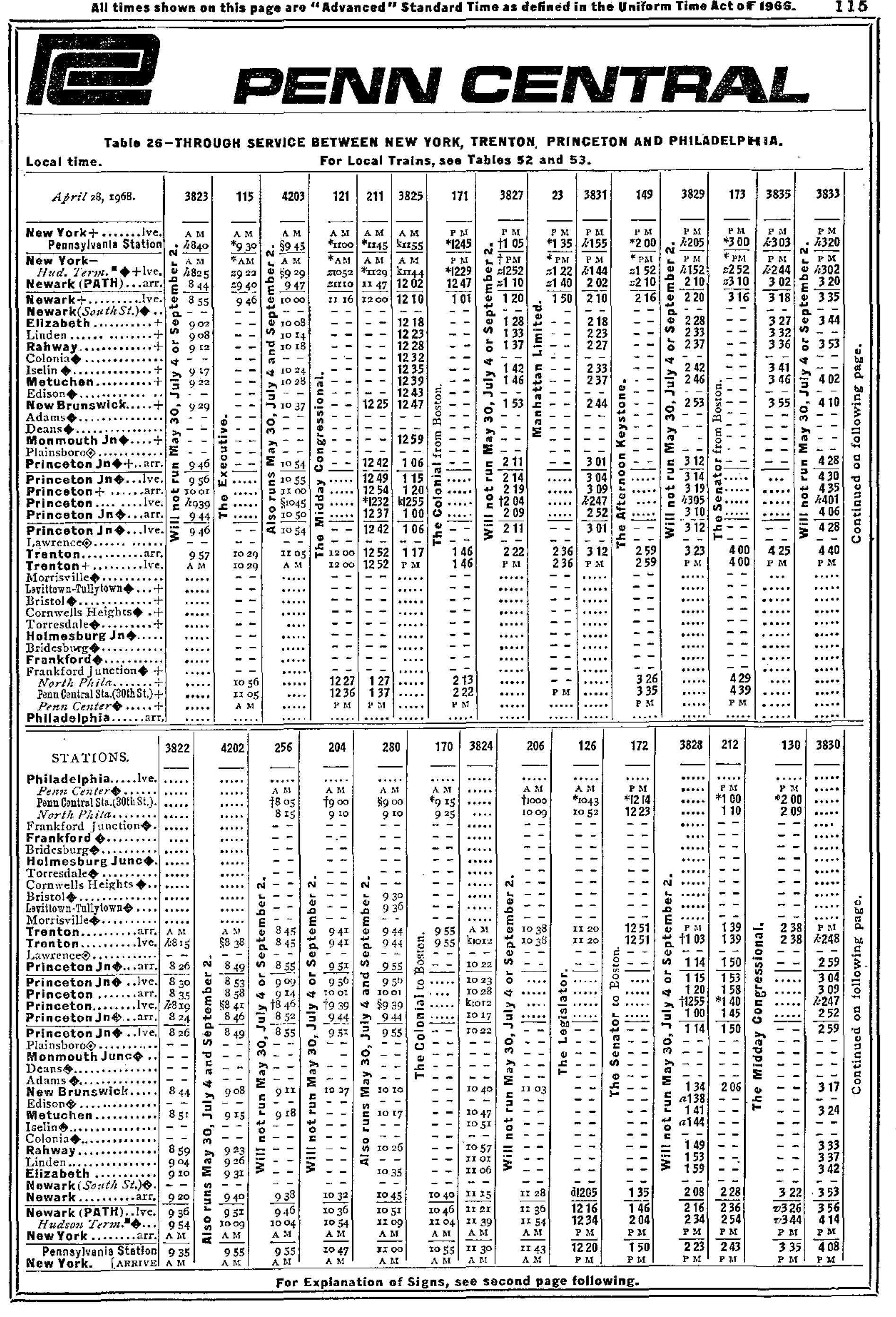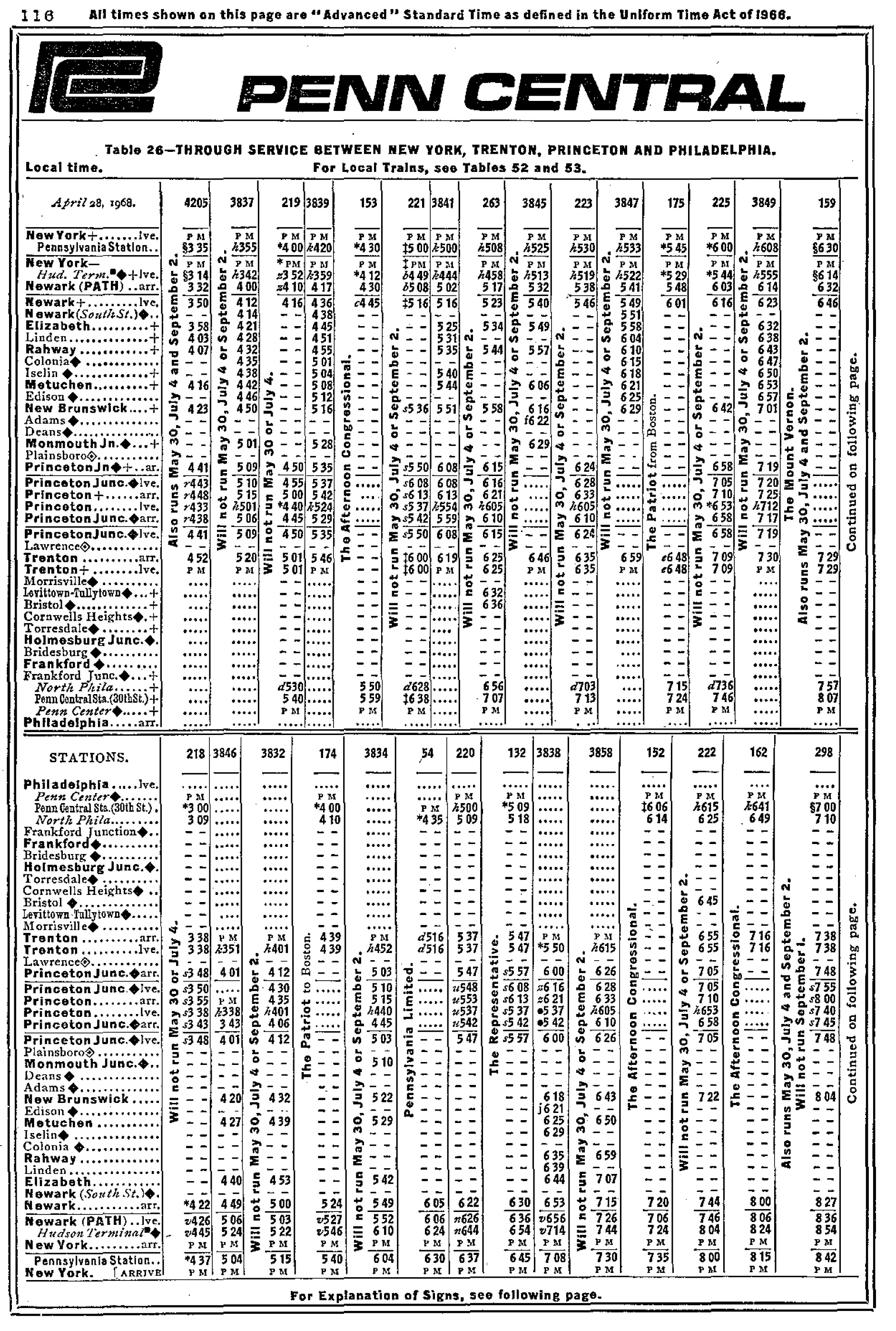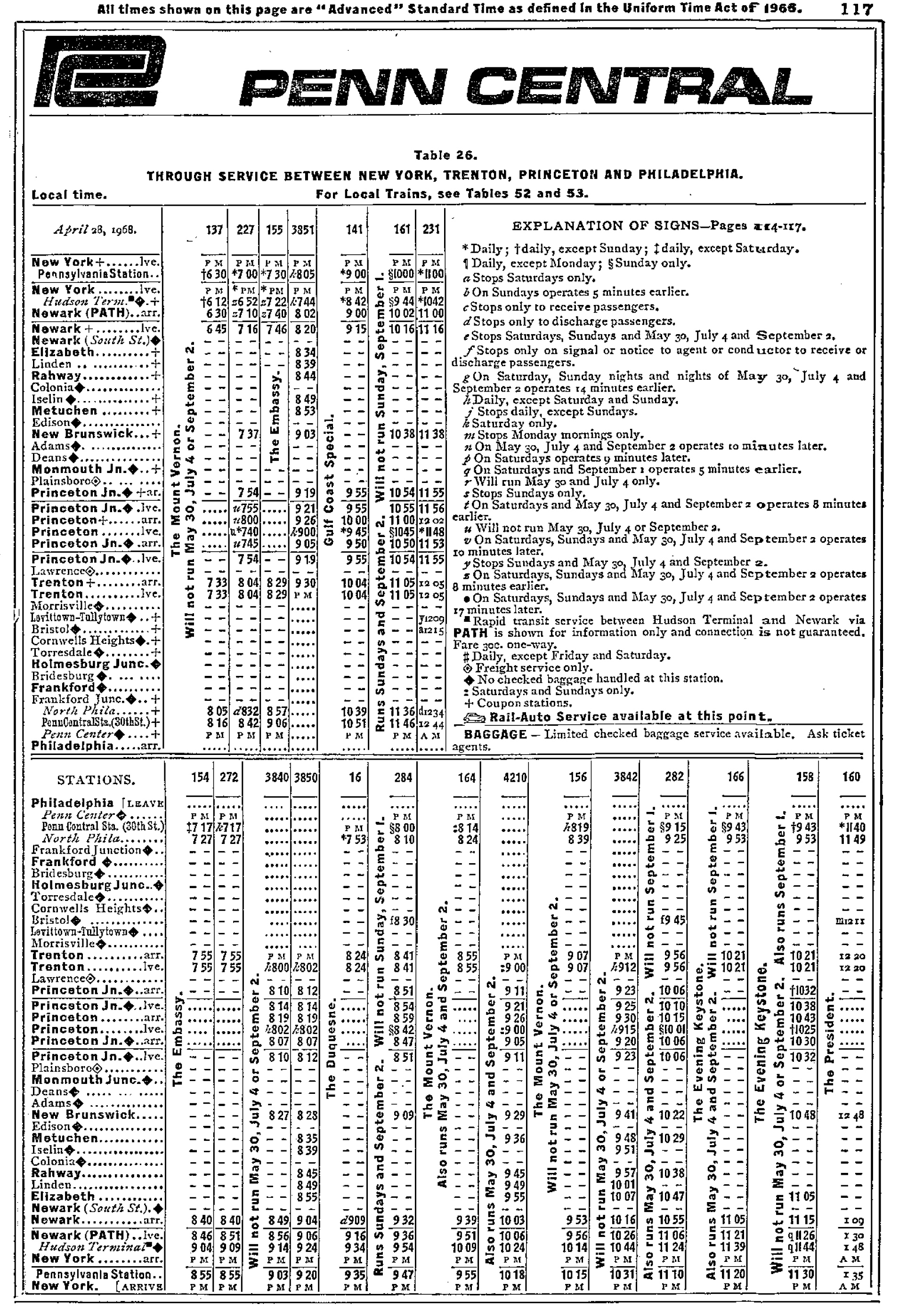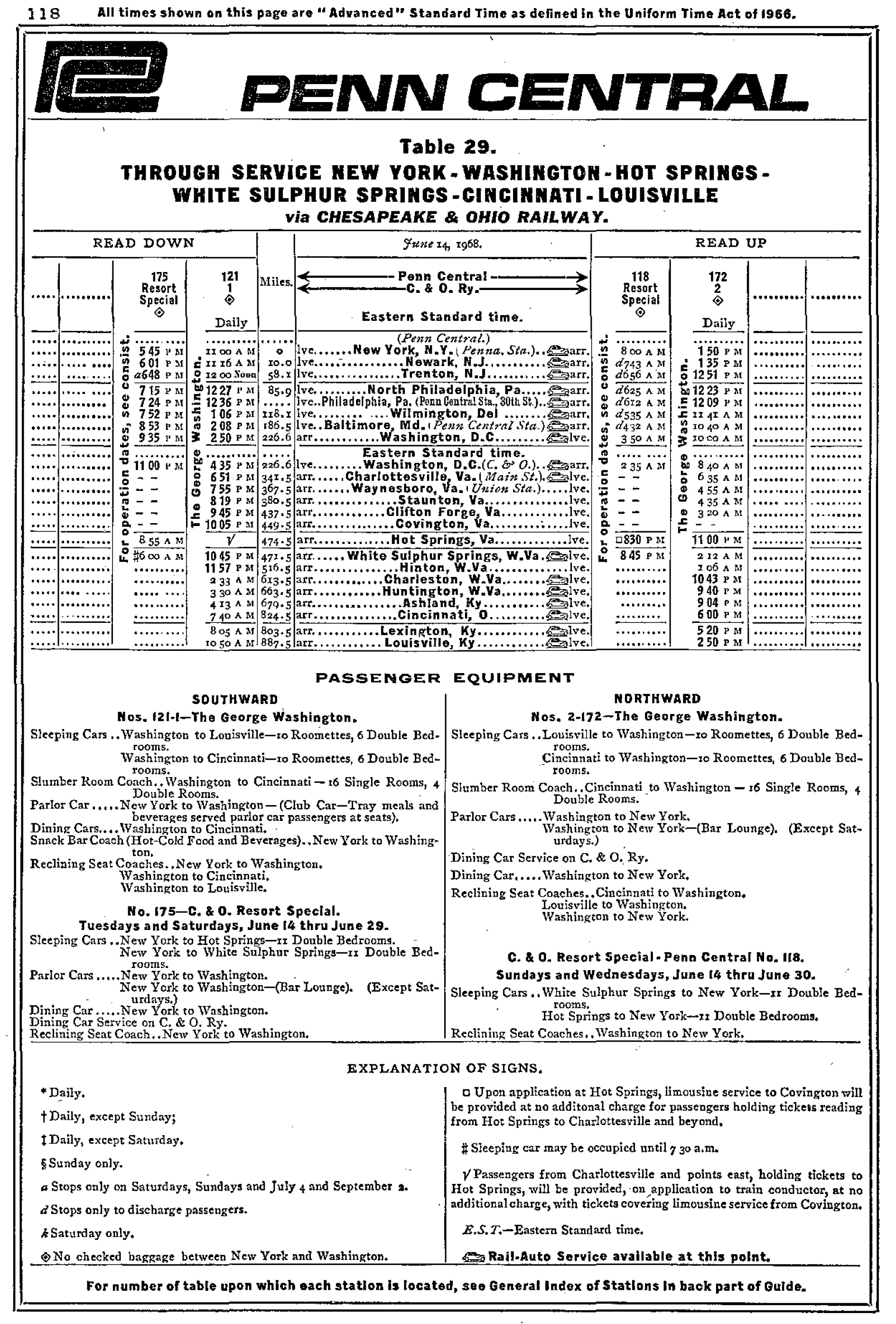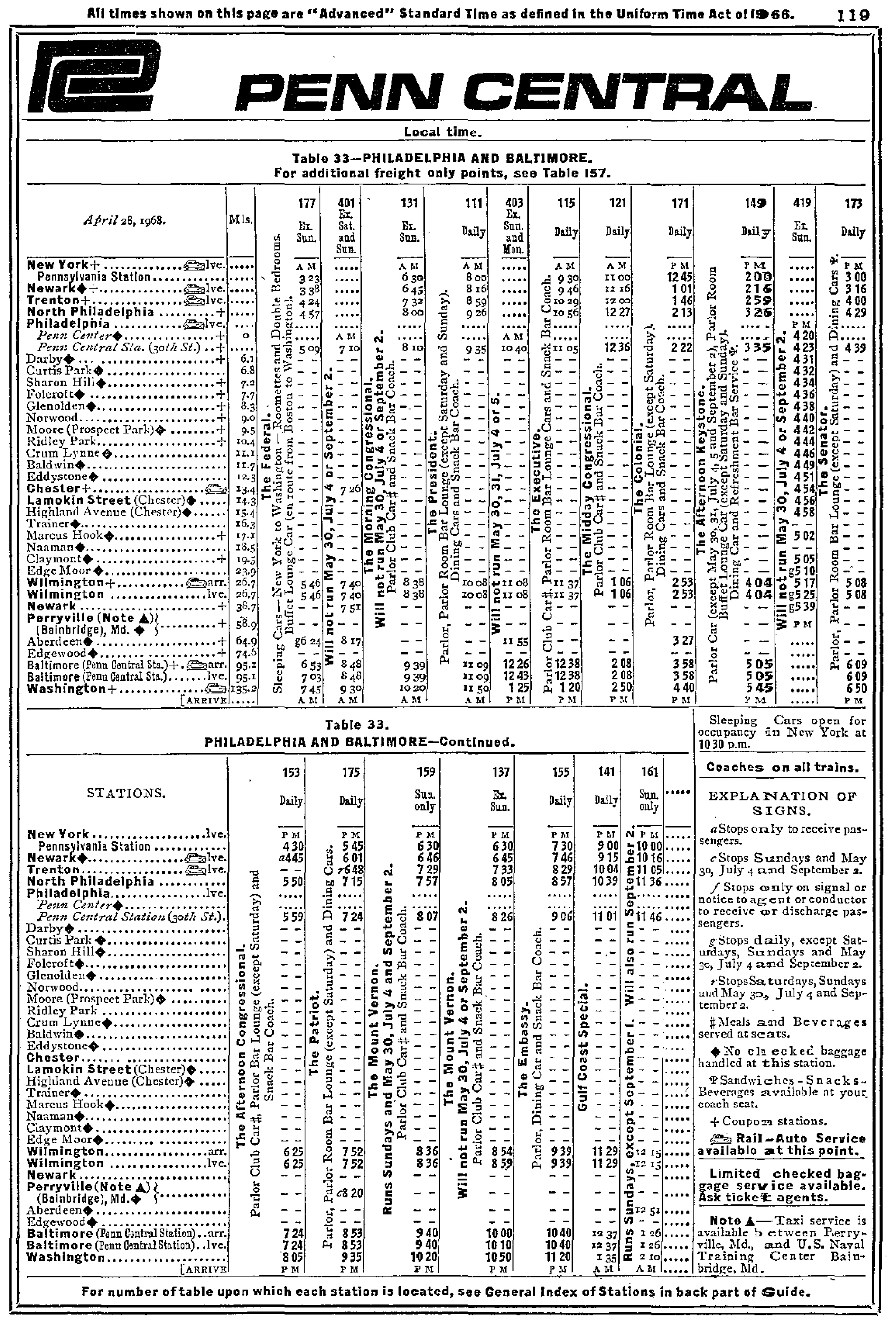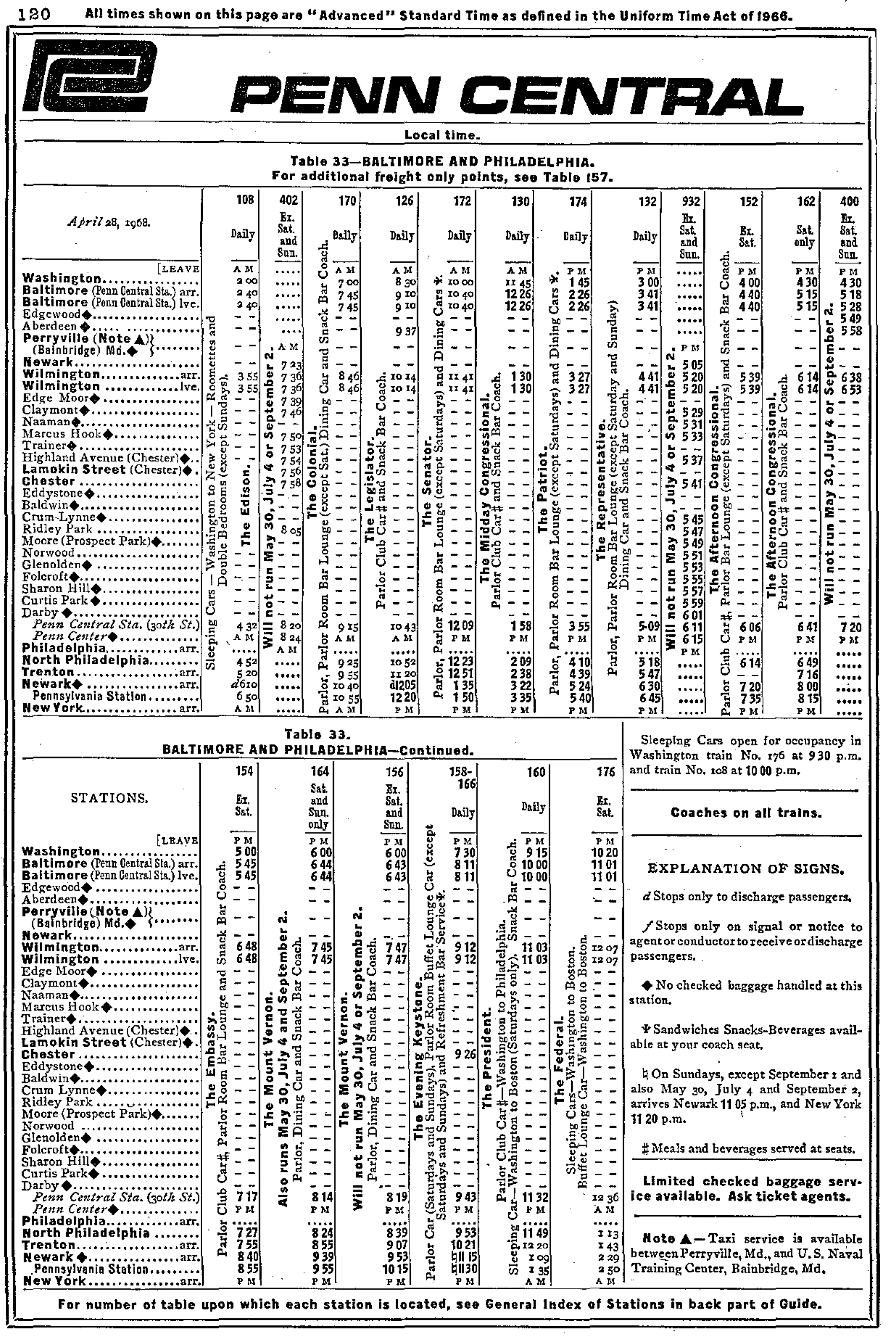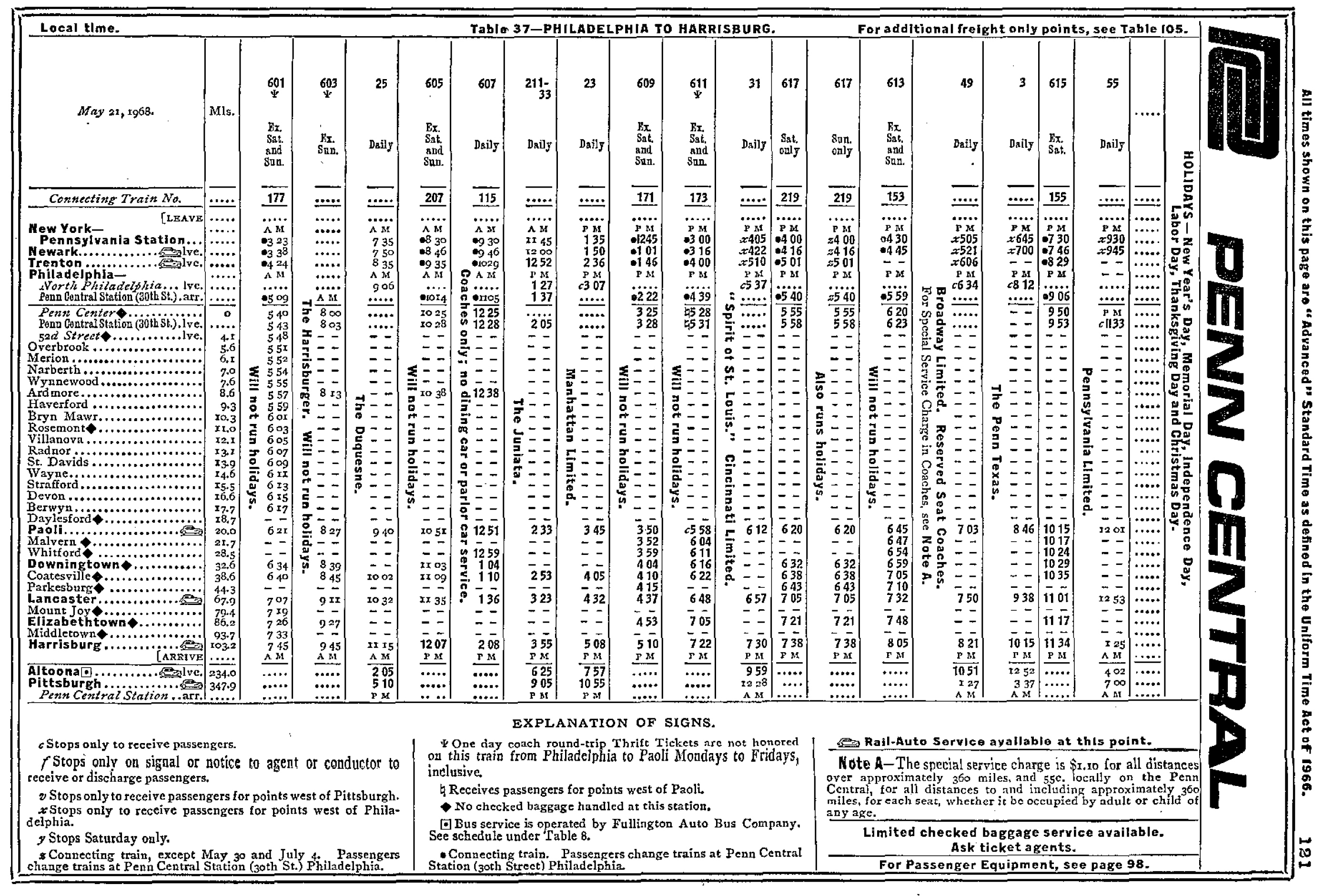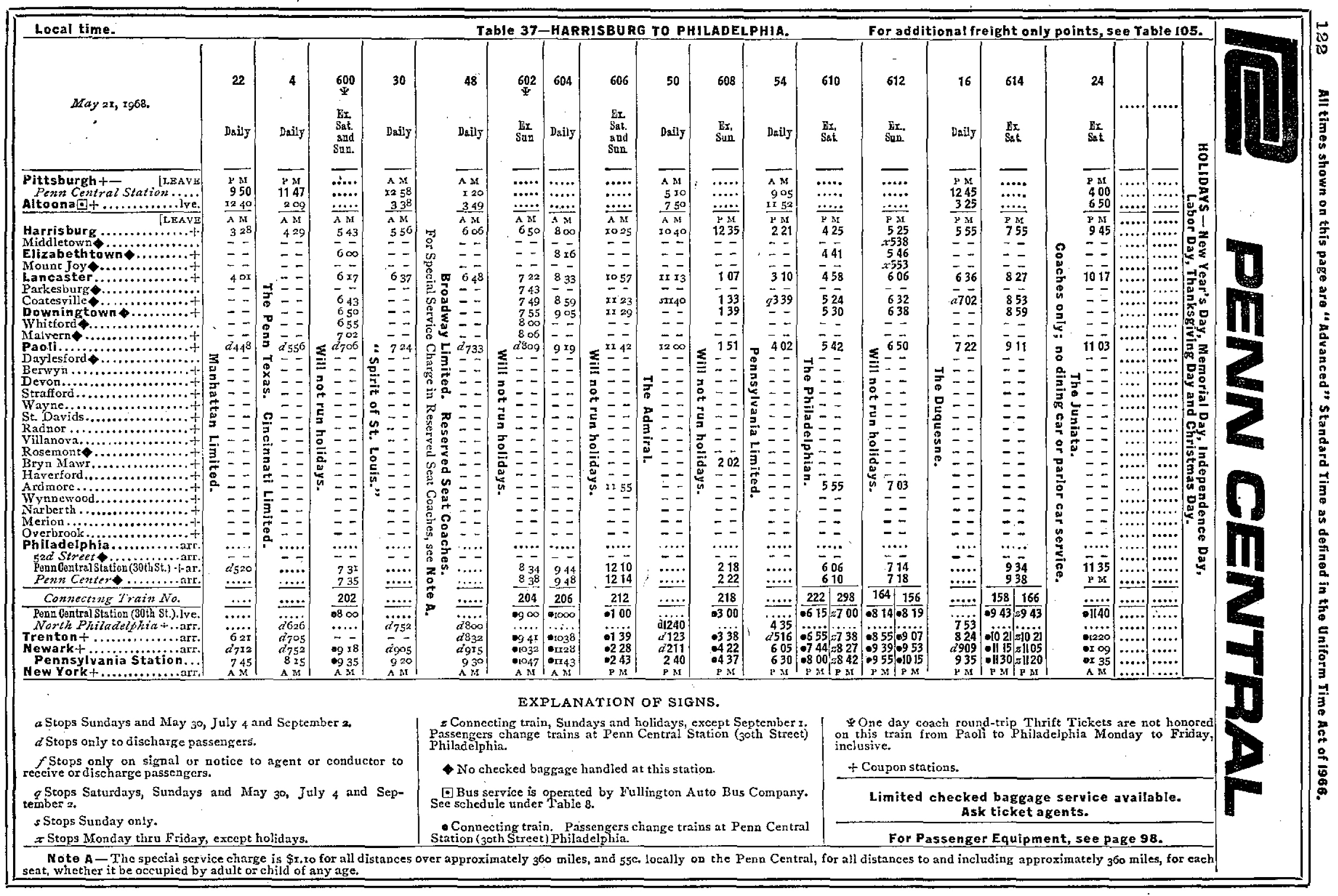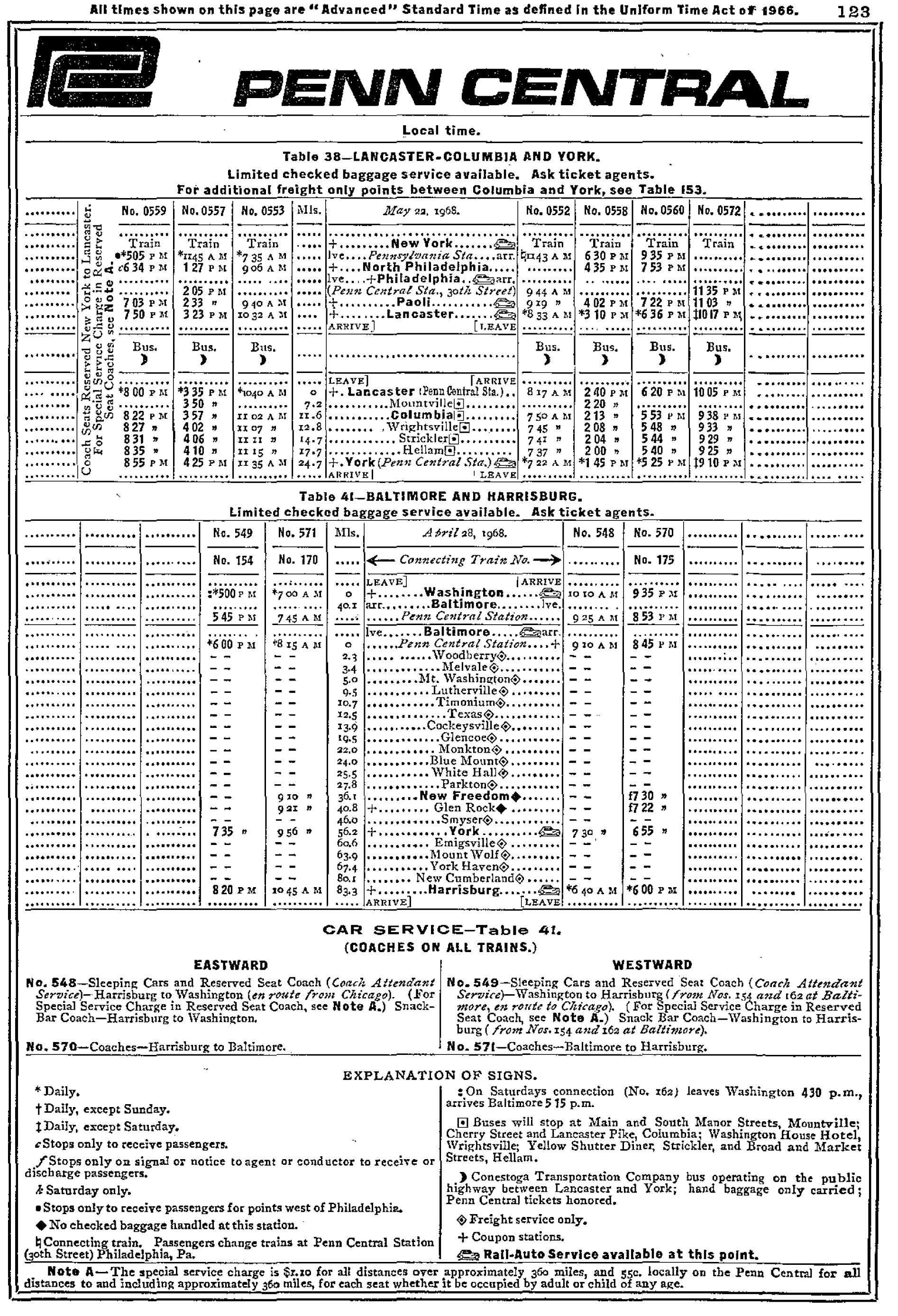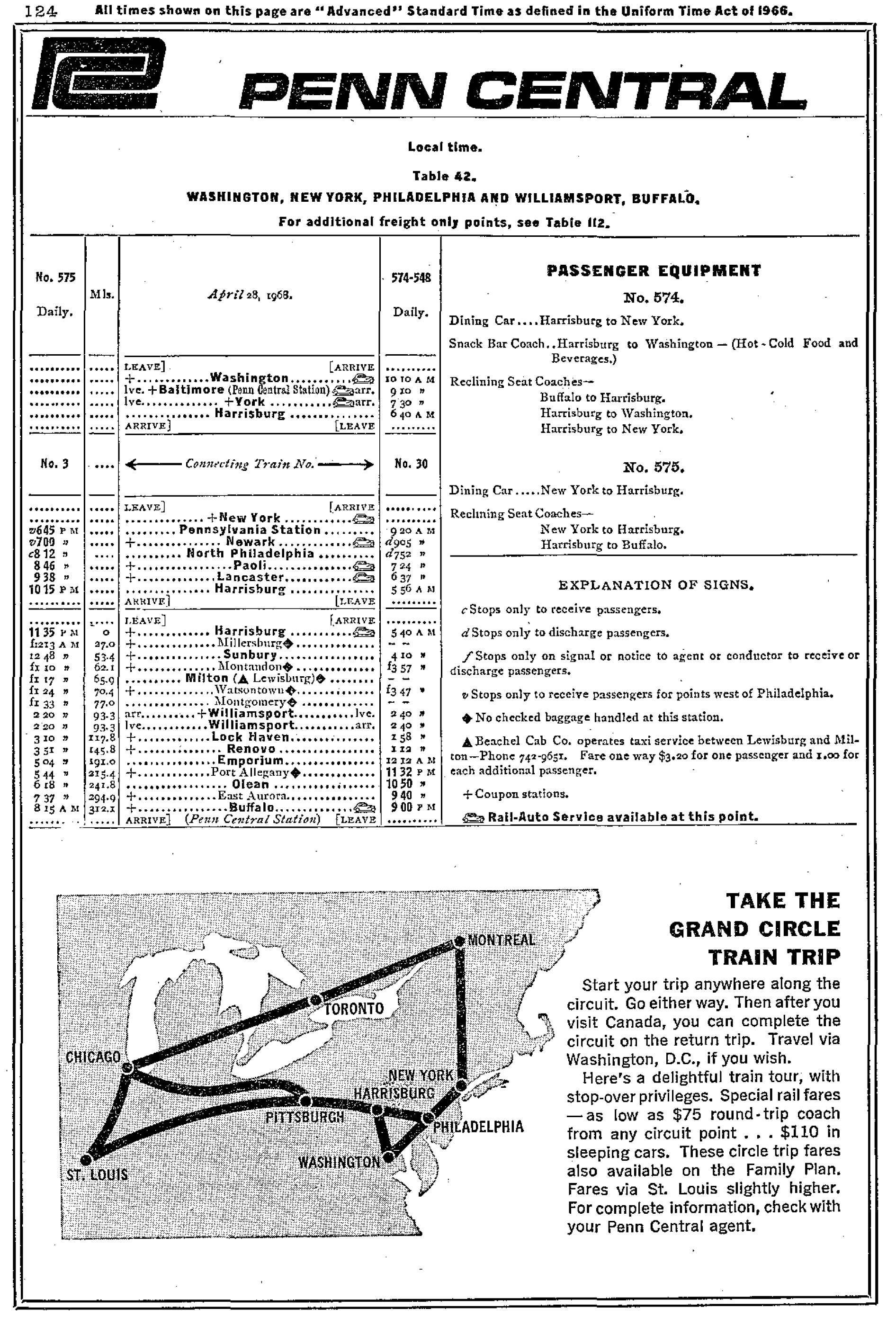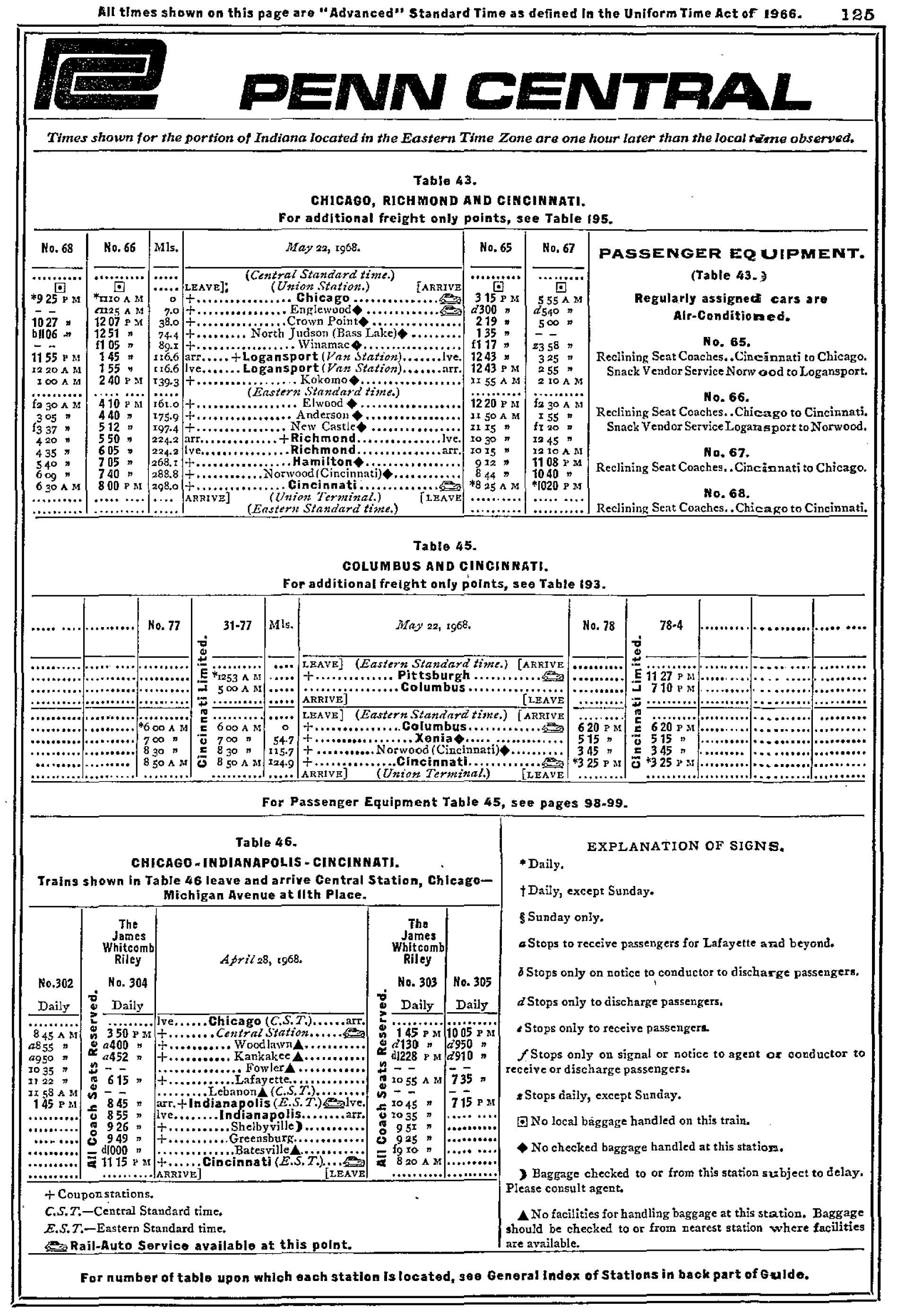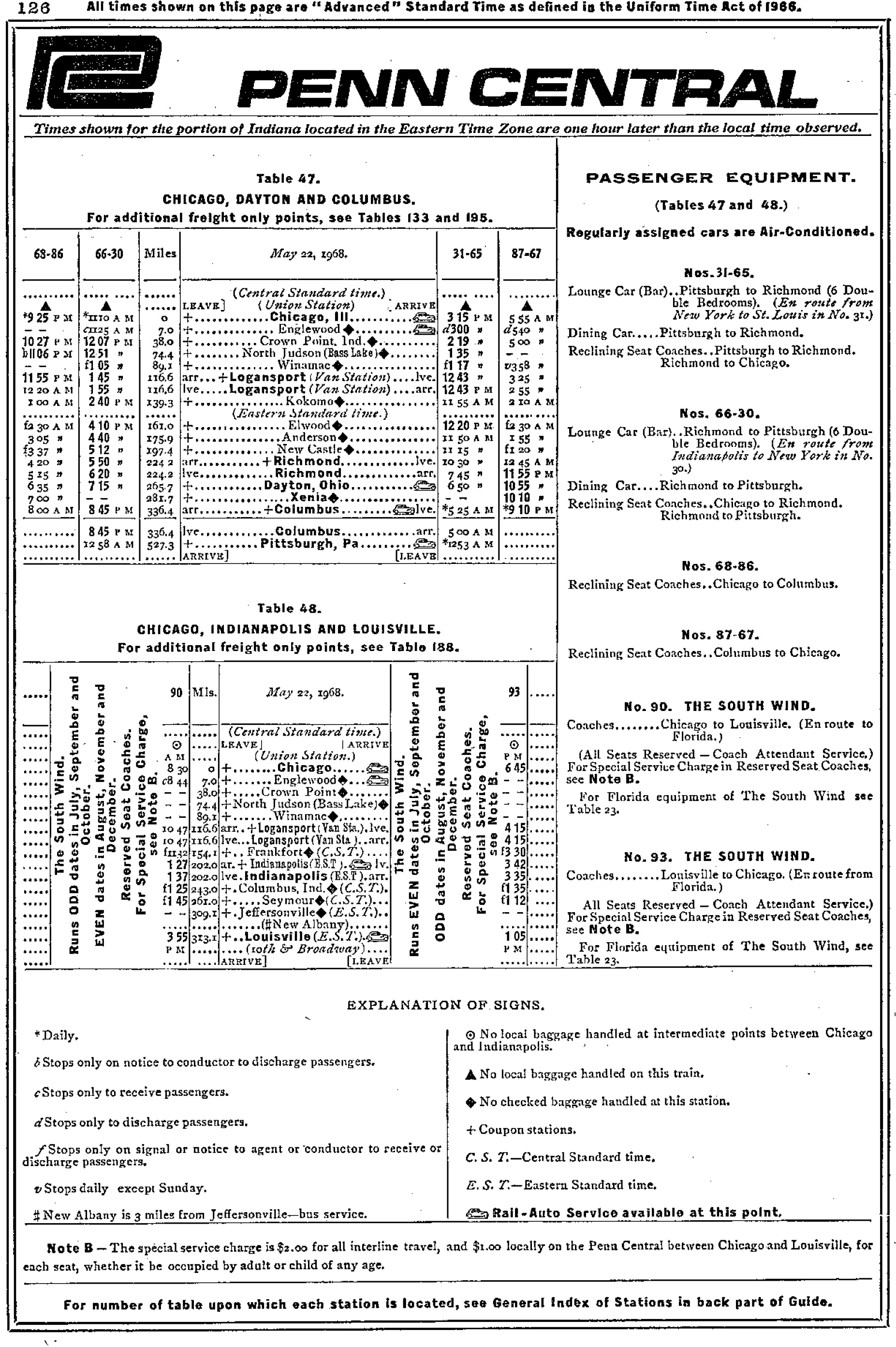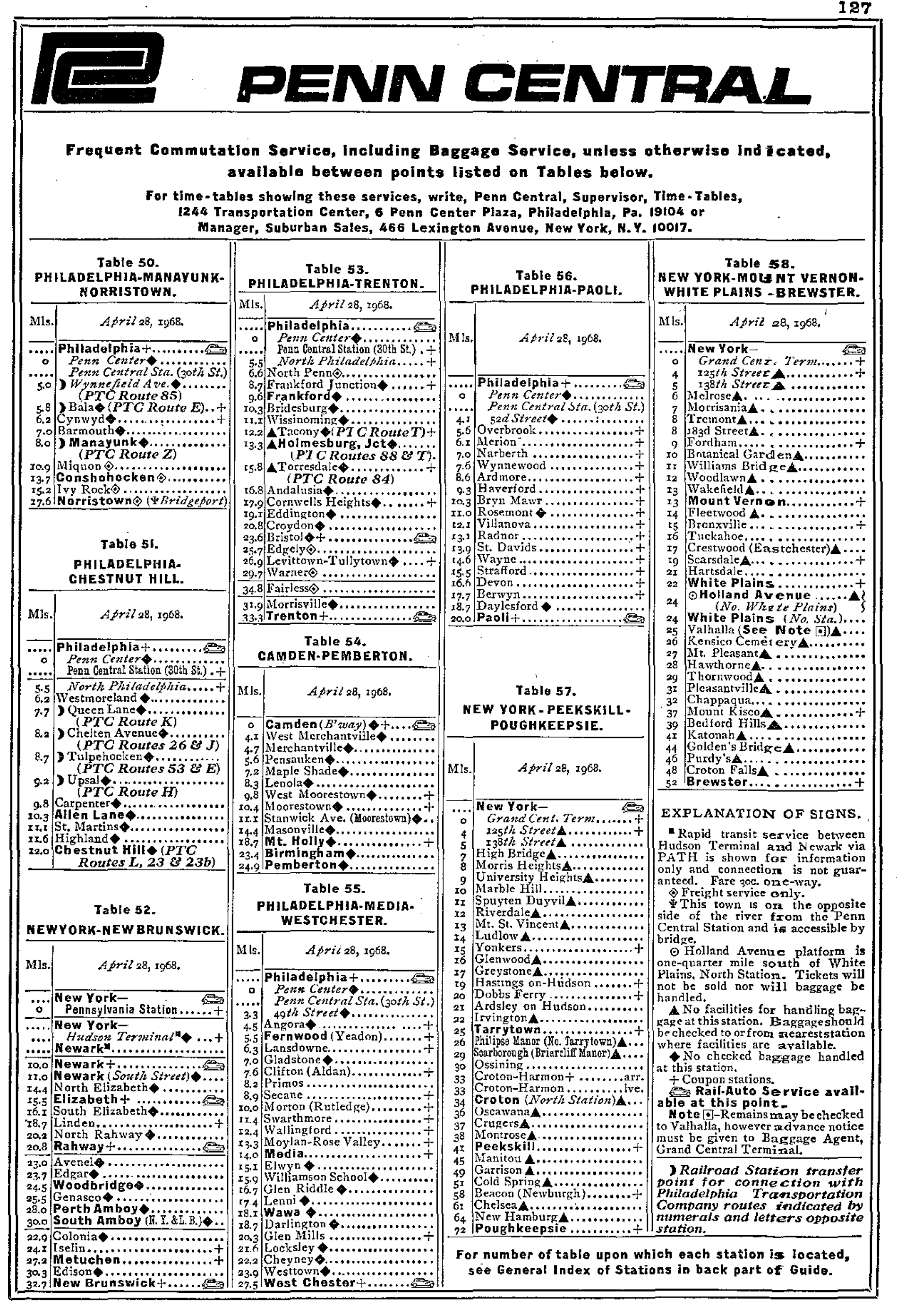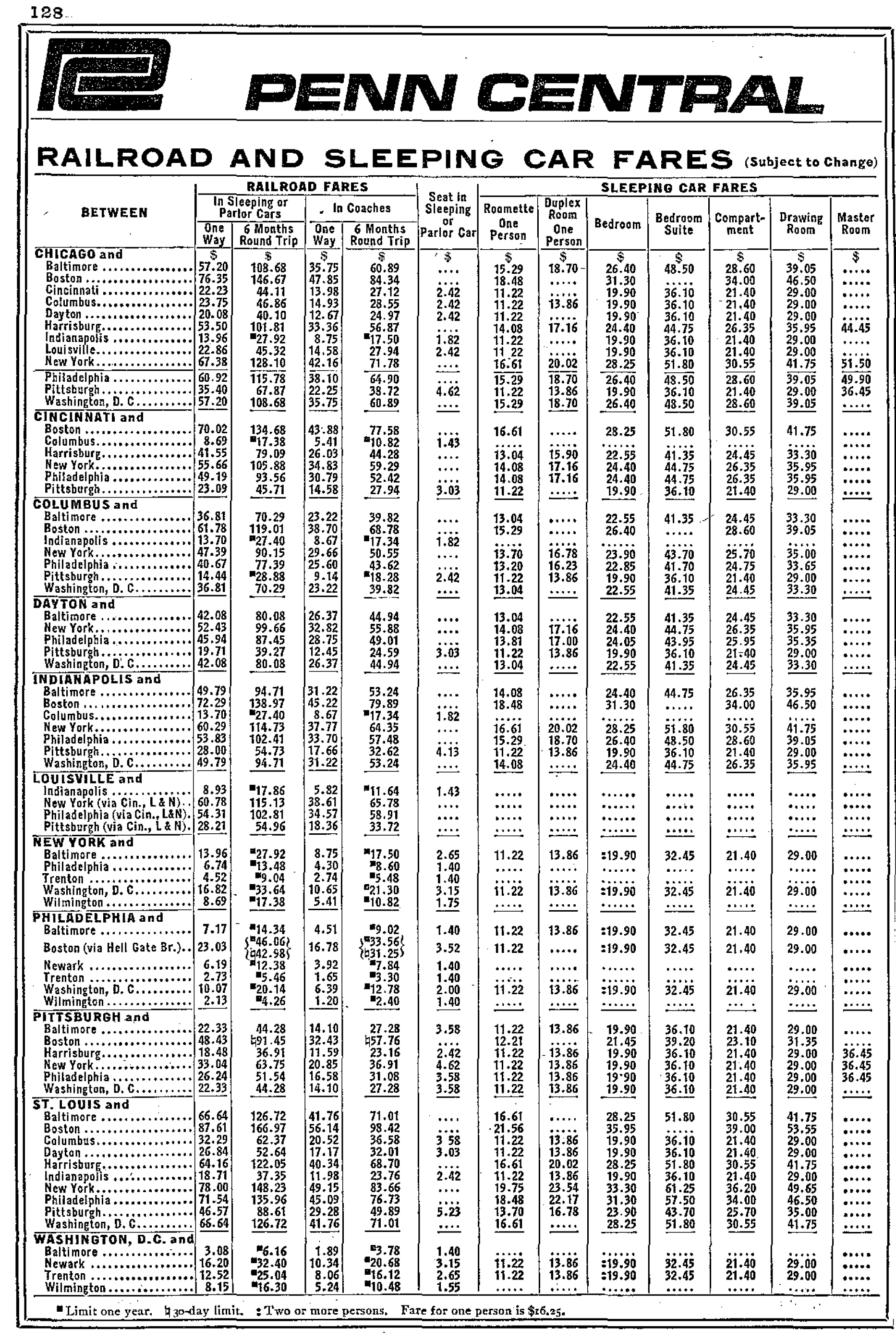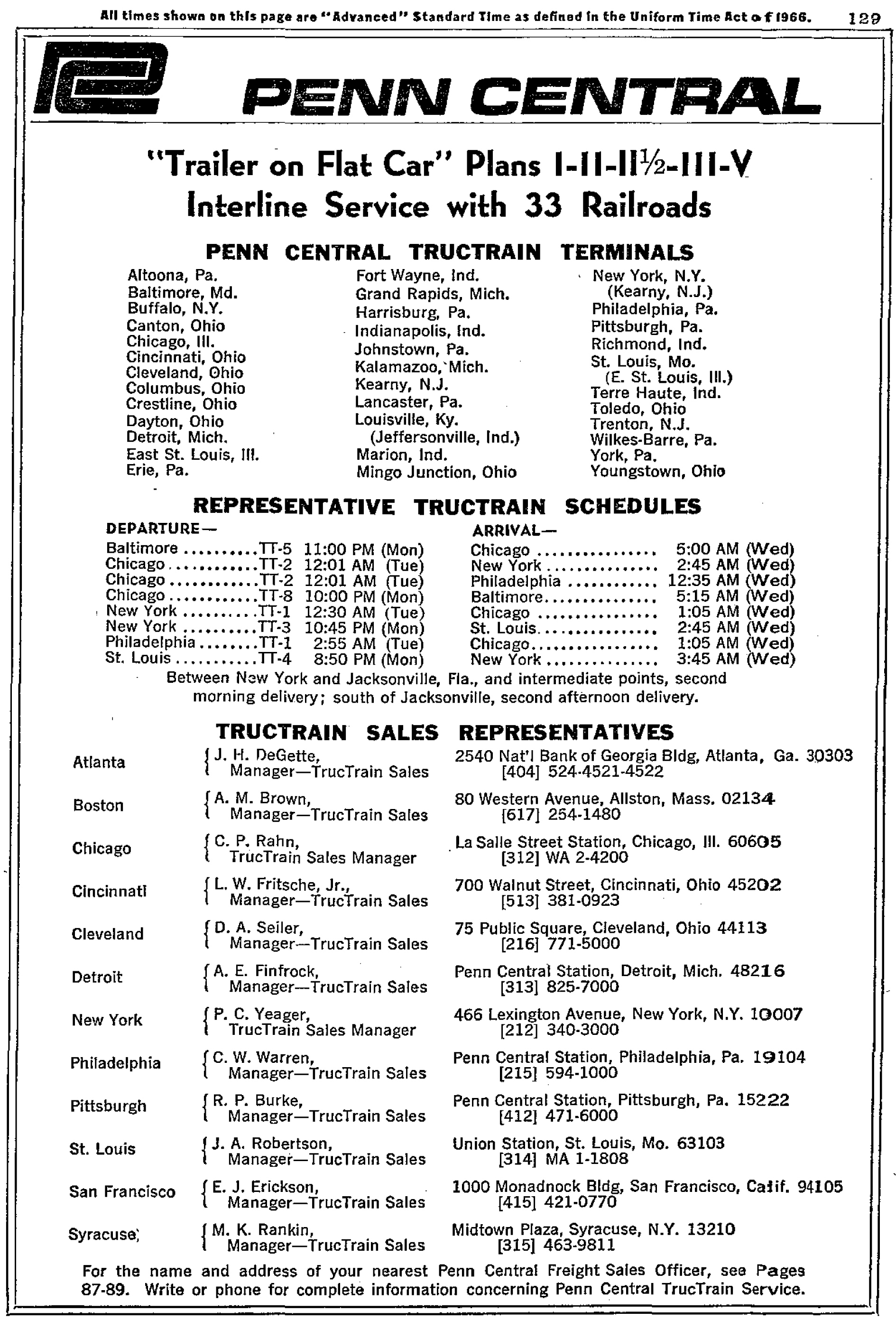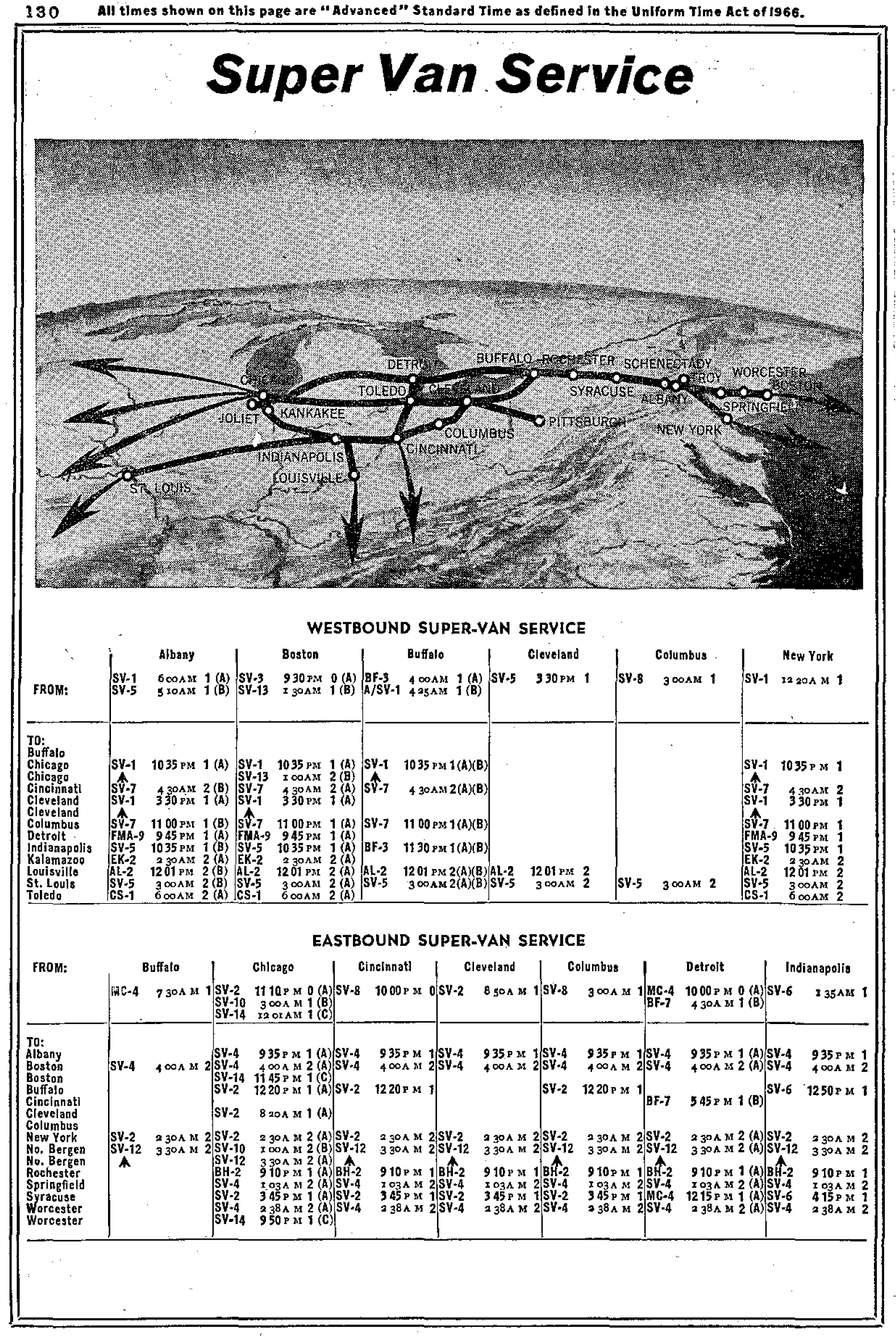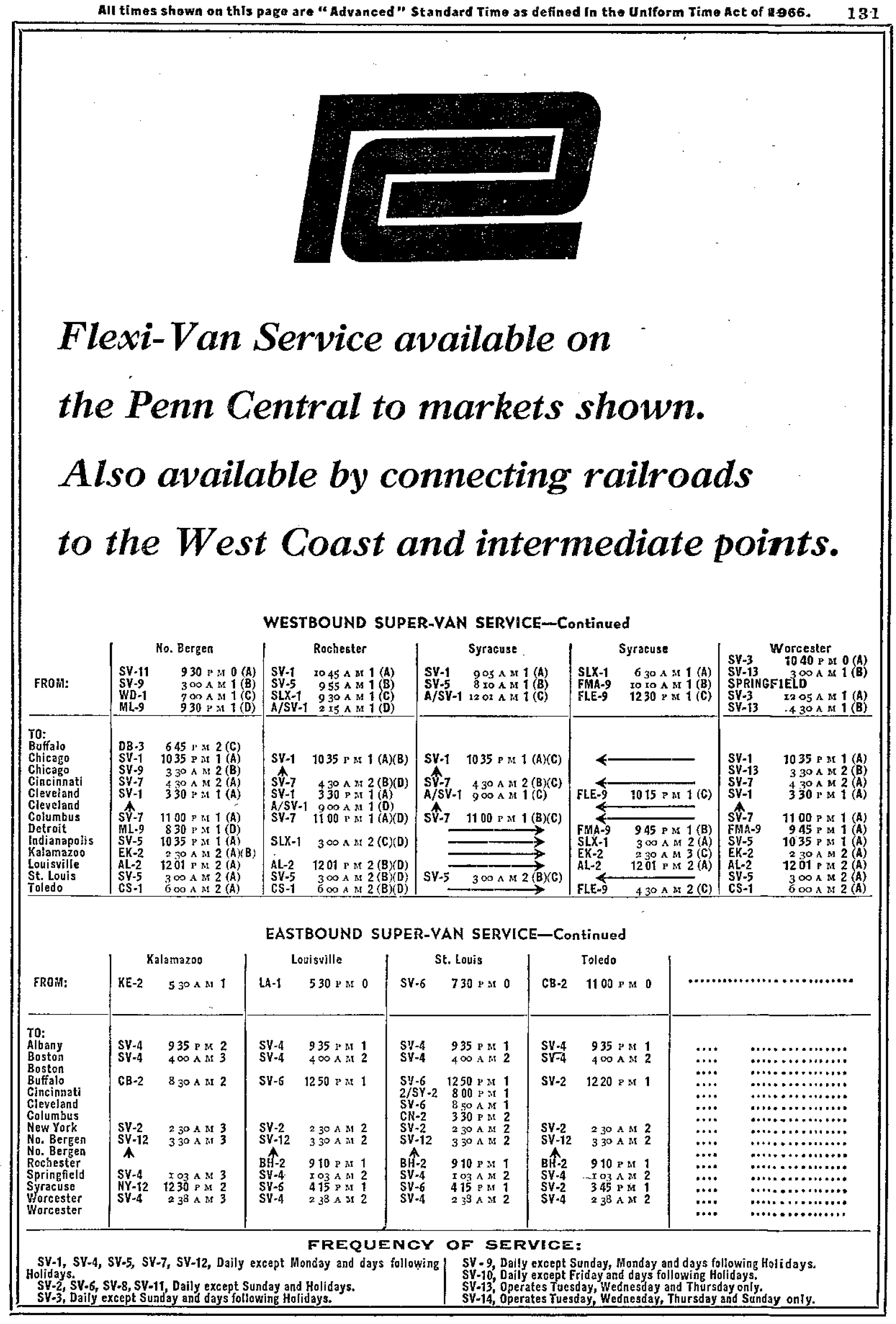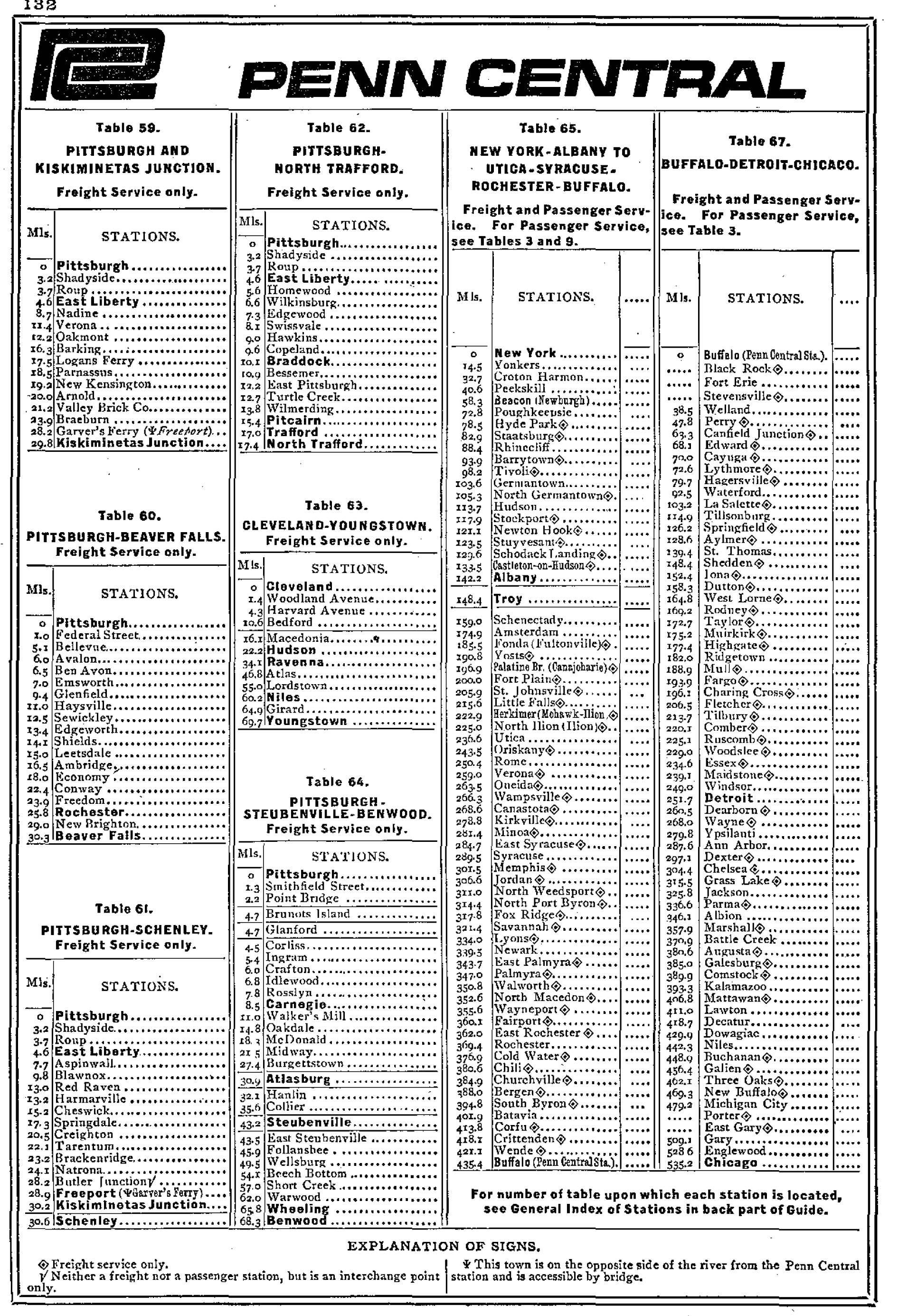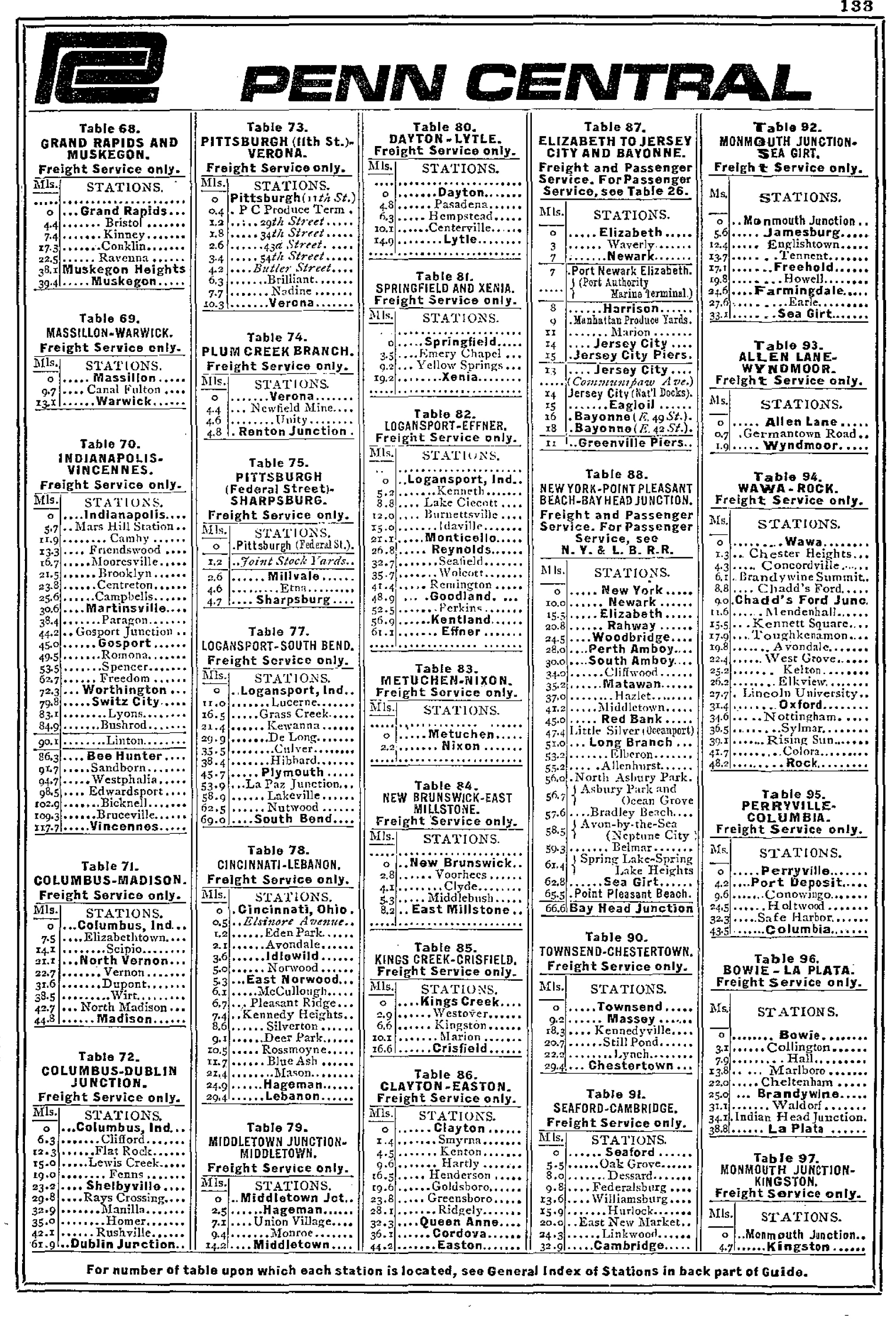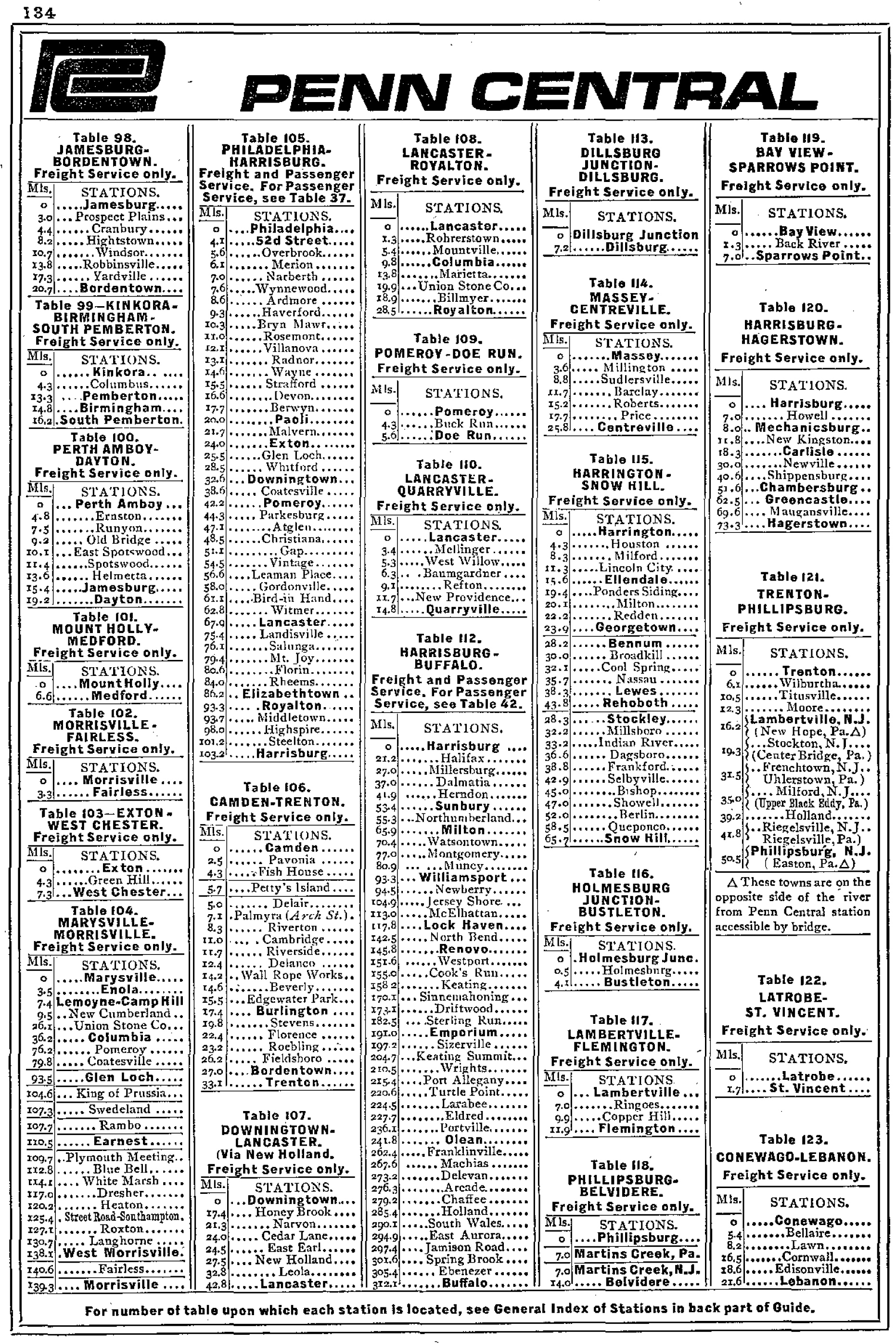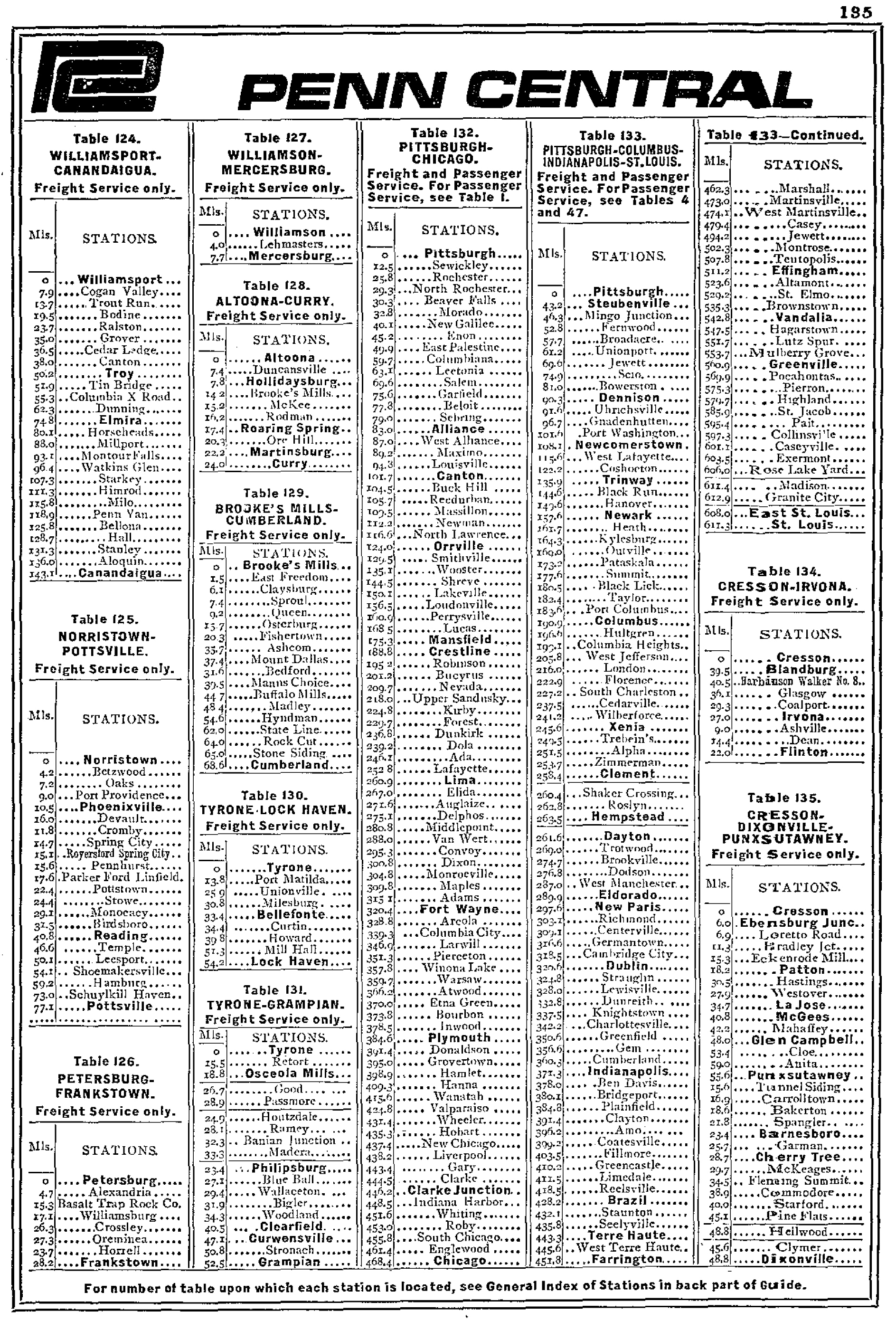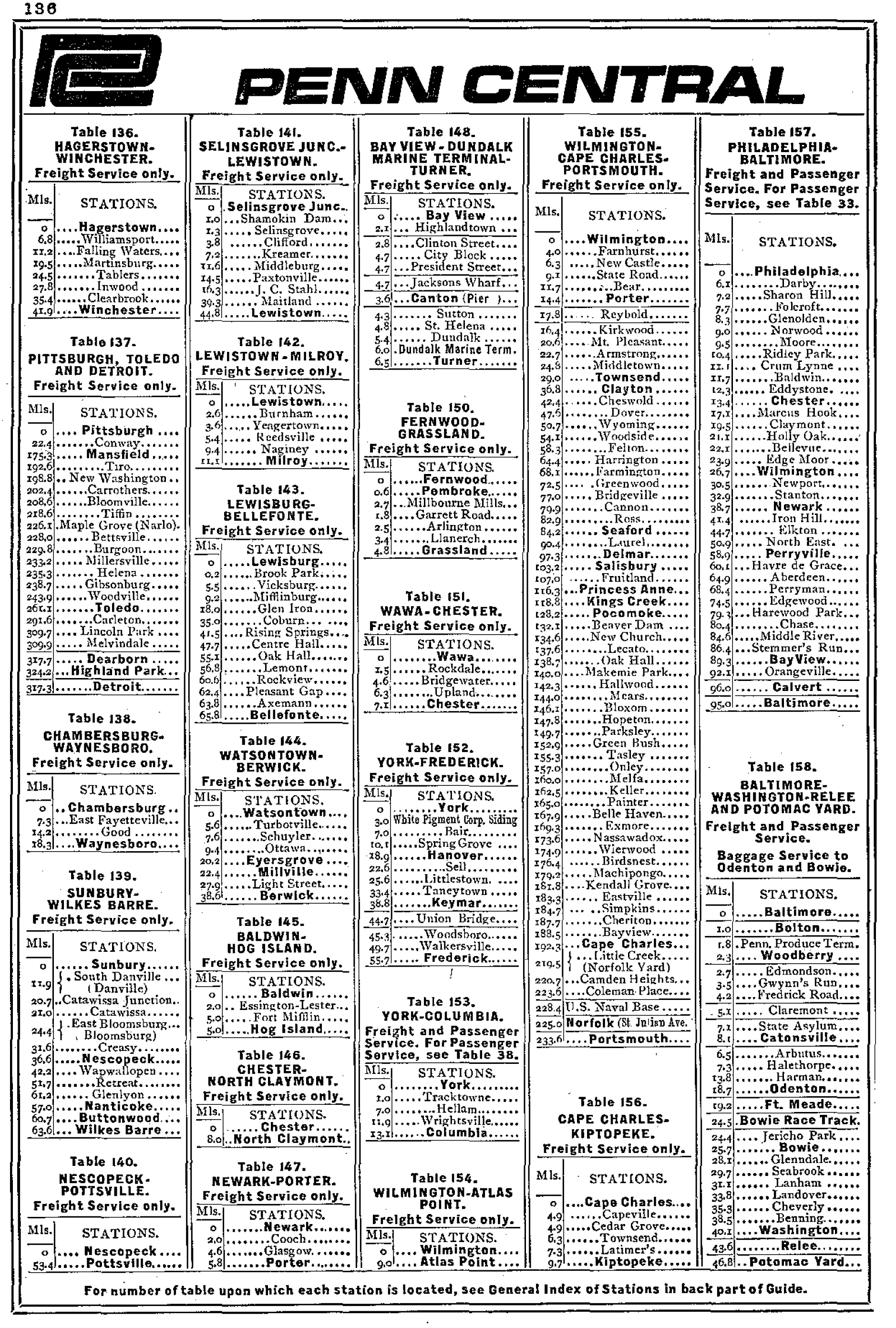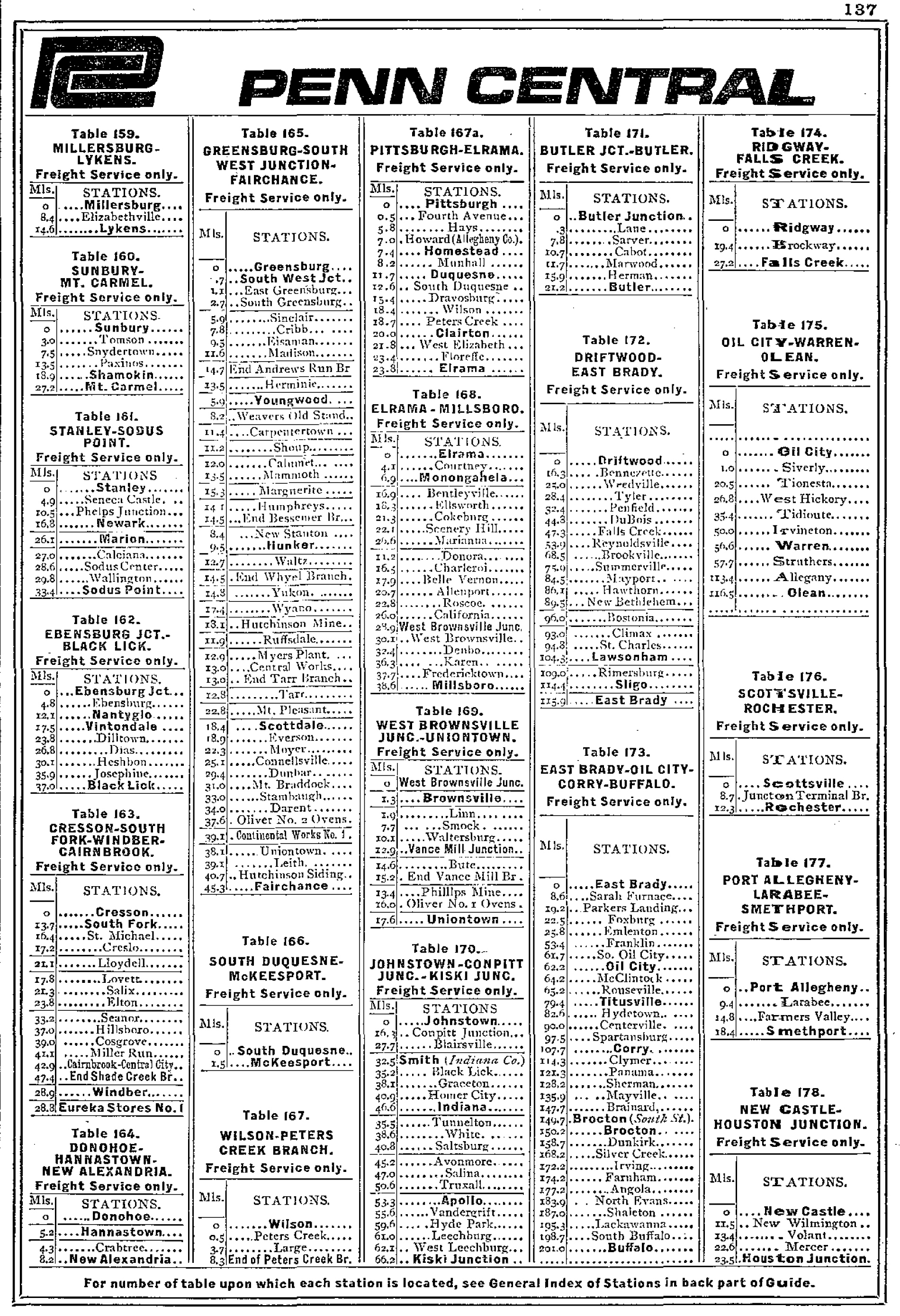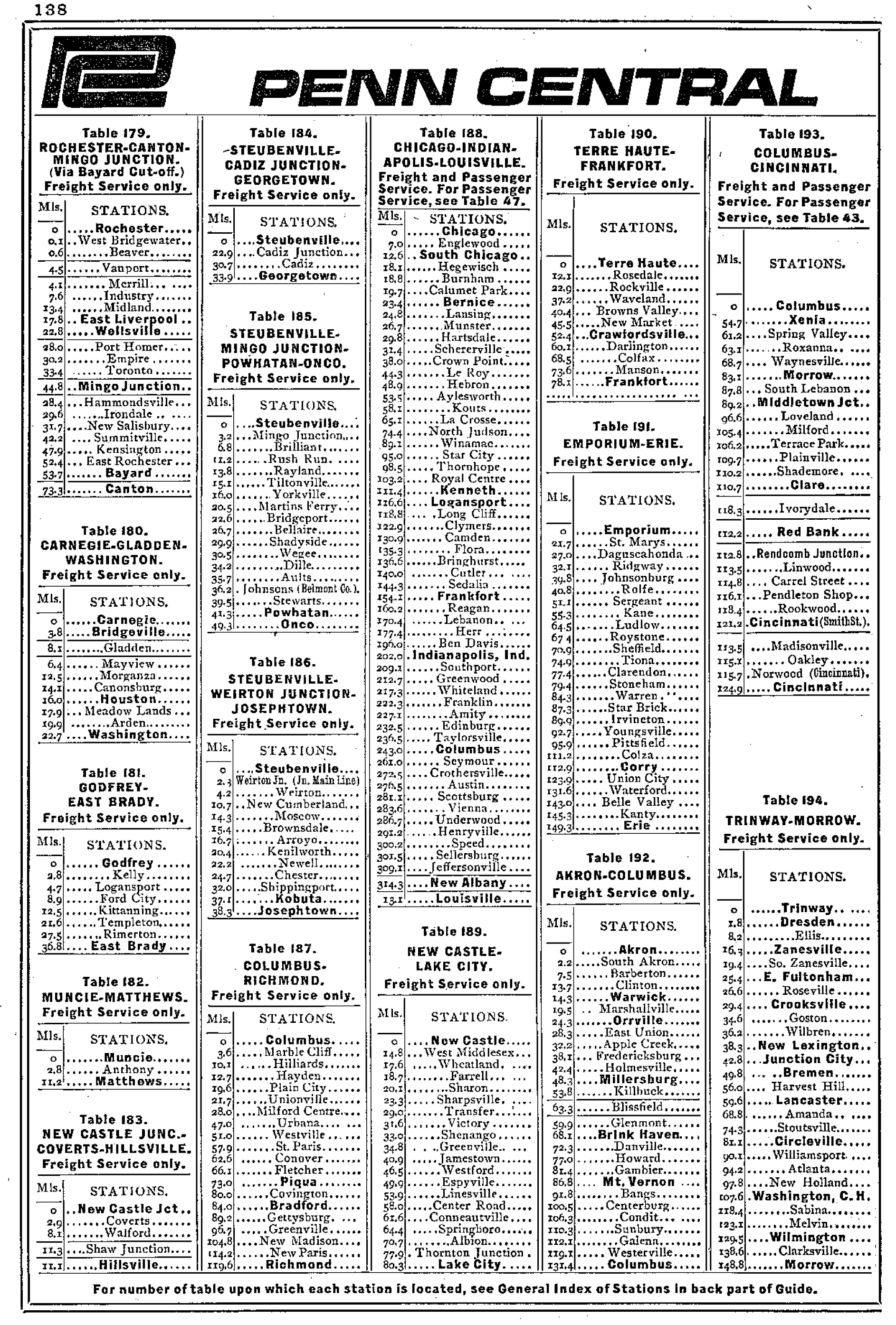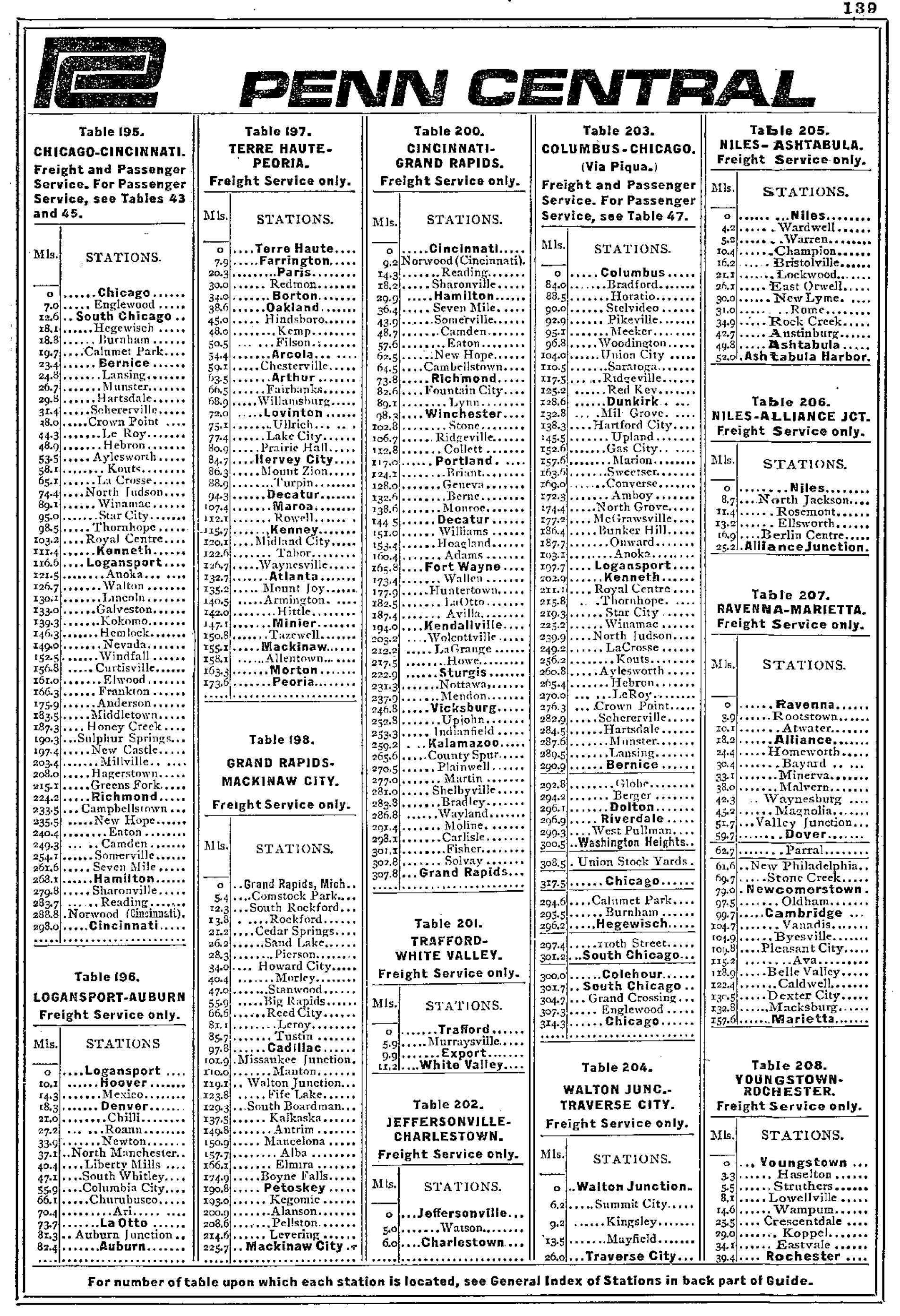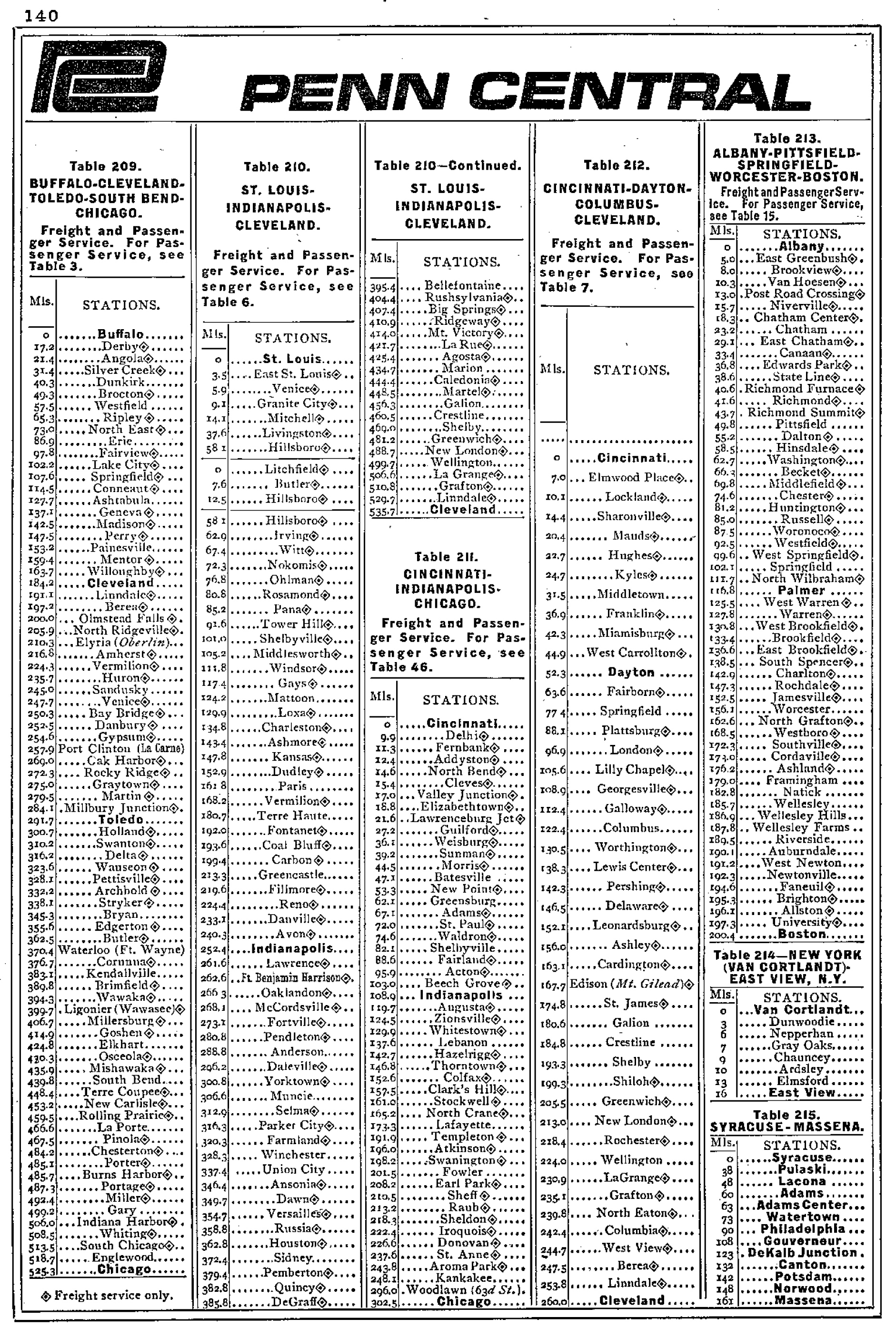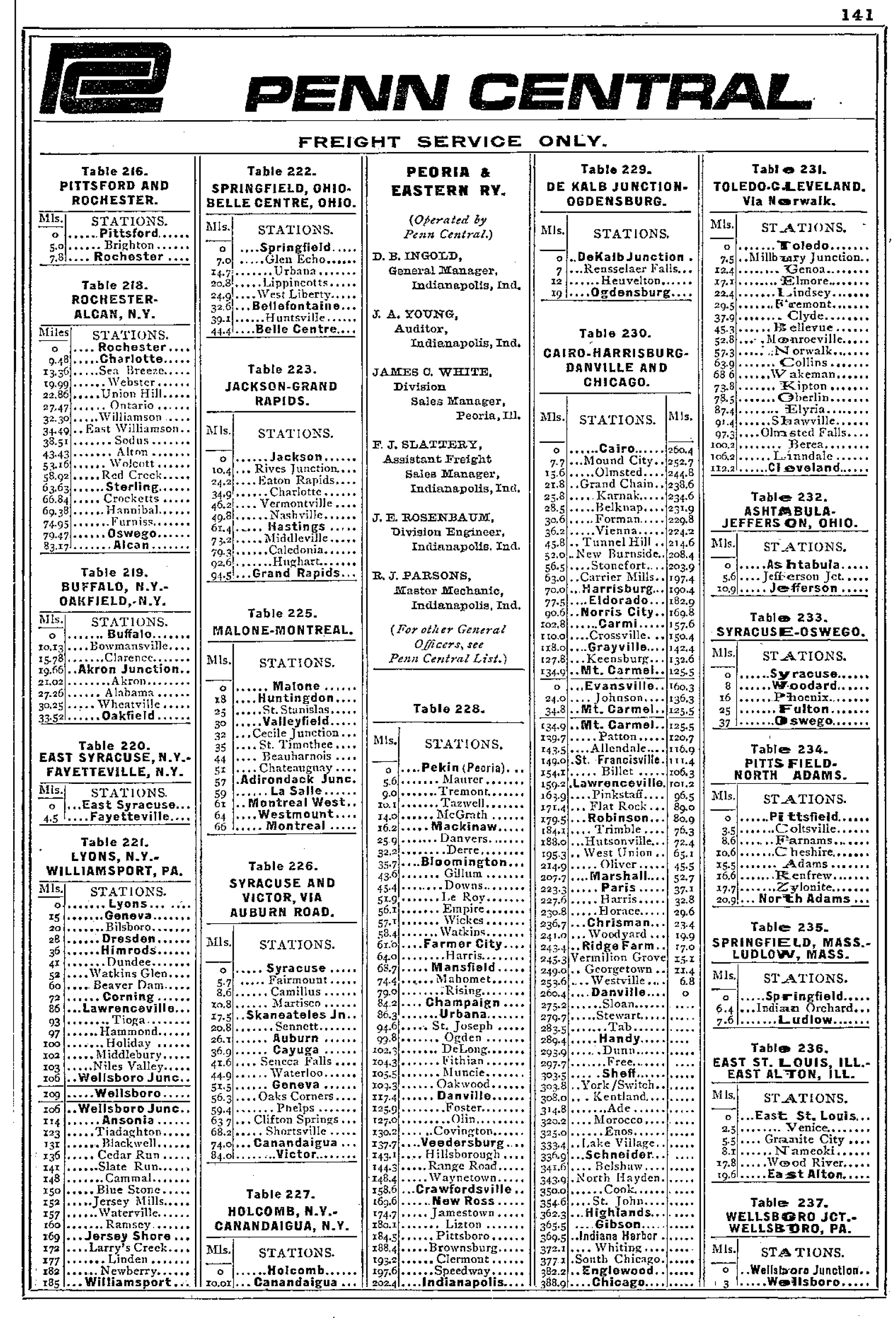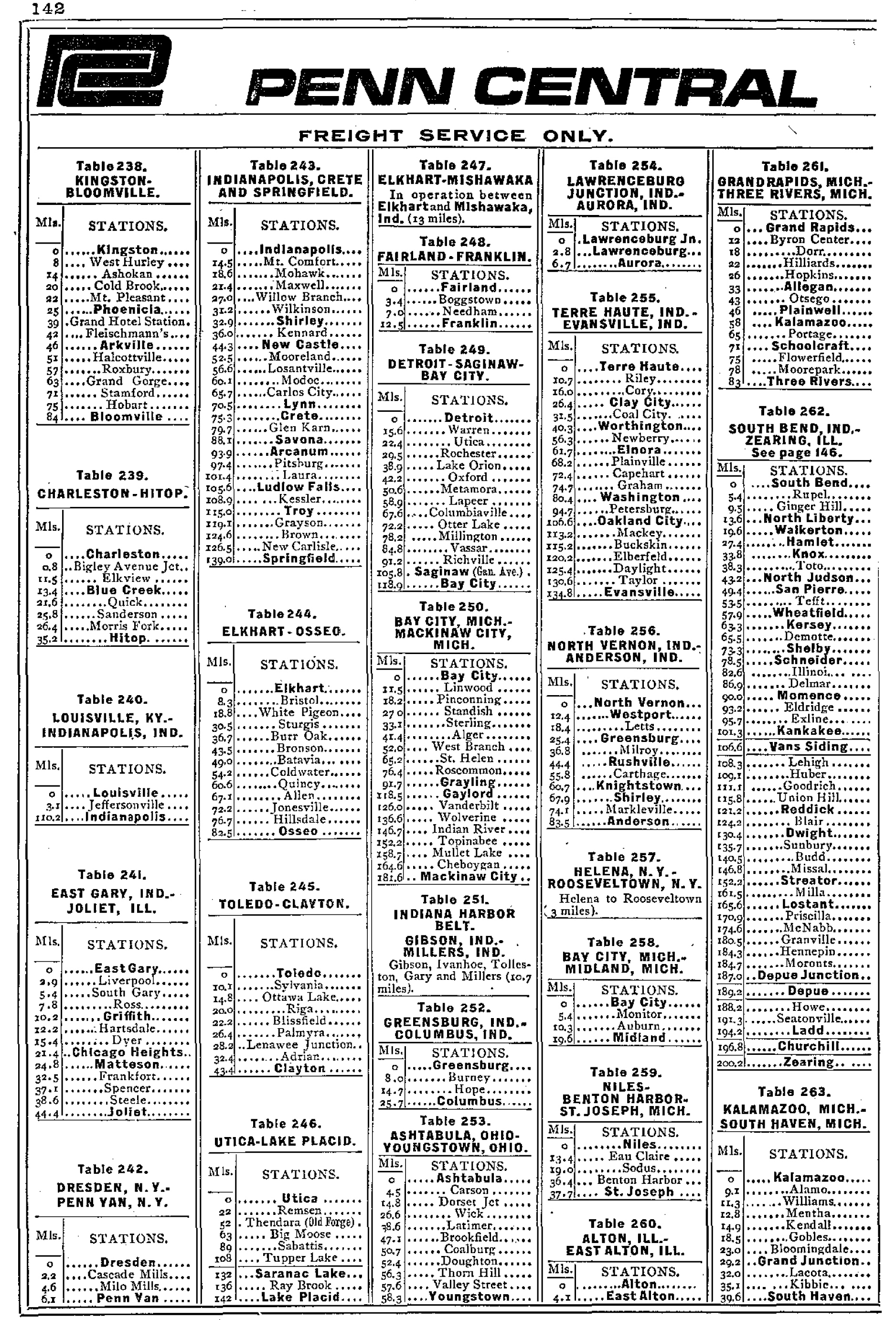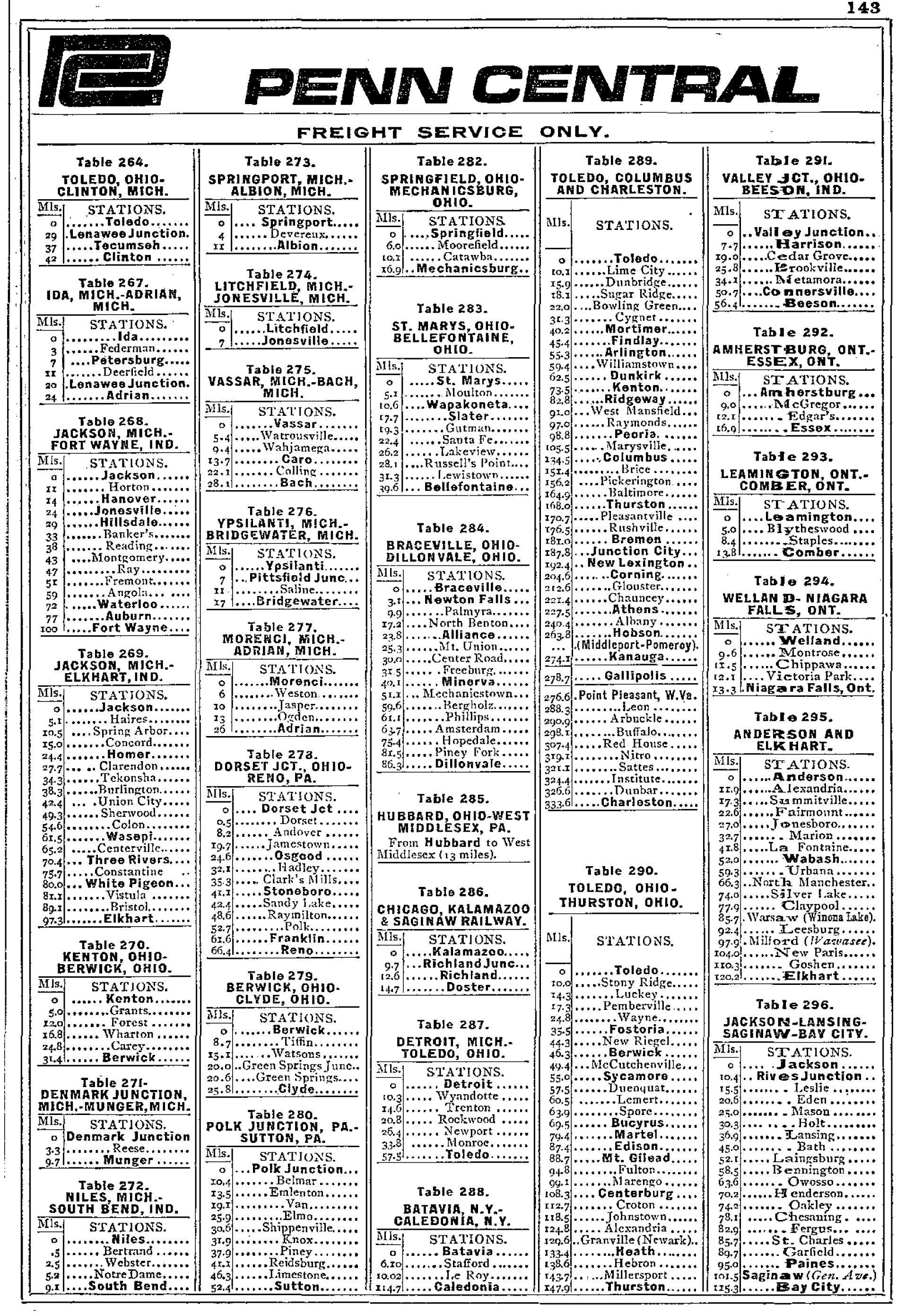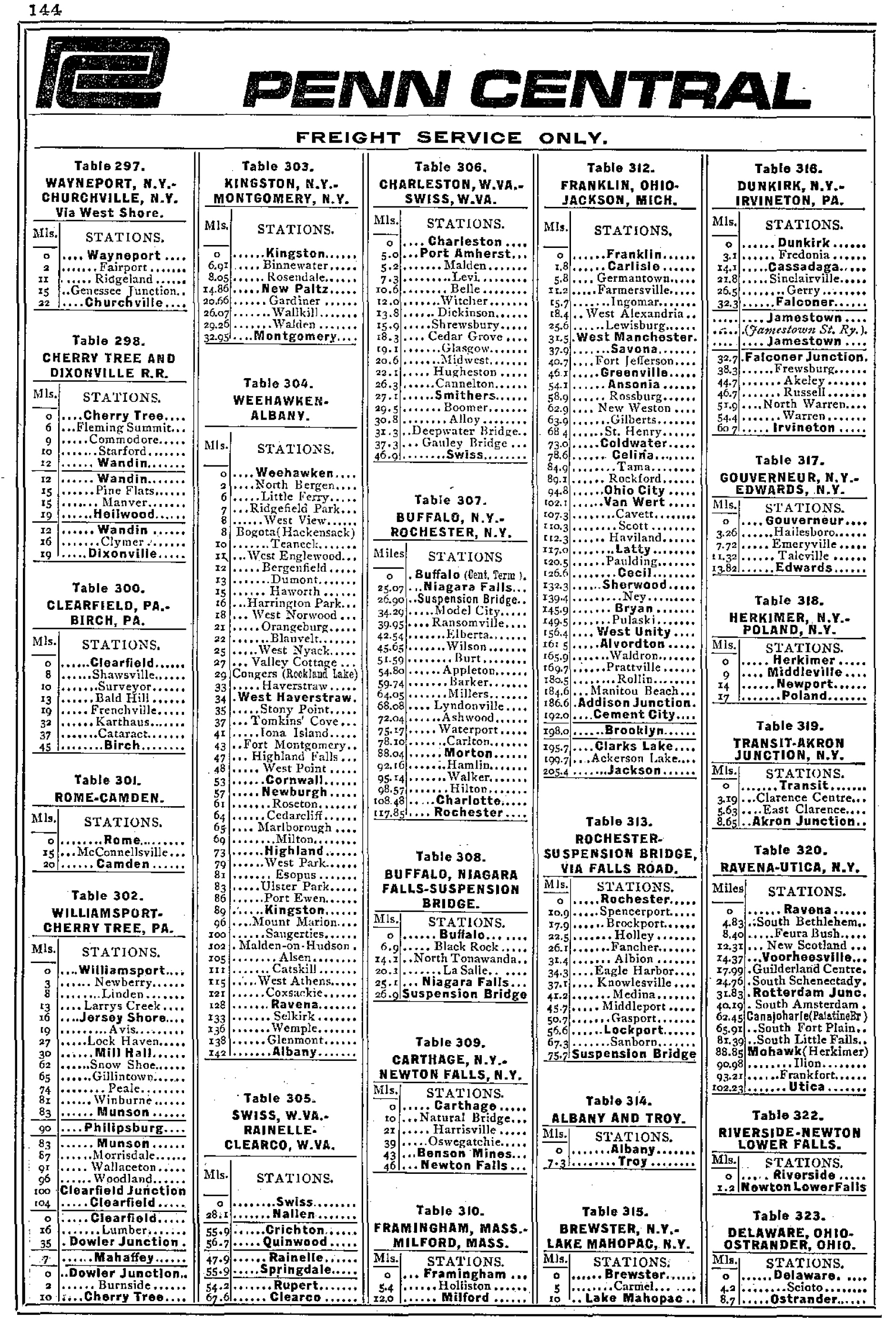Penn Central Timetables (1968)
Published: October 12, 2023
By: Adam Burns
At the time of Penn Central's merger the general belief throughout the financial and railroad world was that the new conglomerate would be successful.
The Pennsylvania Railroad, even during its declining years, still commanded an excellent credit rating. The newly formed Penn Central featured an impressive listing in the "Official Guide." In the May, 1968 edition, featured below, the railroad boasted an impressive 51 pages of coverage.
The information included here includes the railroad's complete public timetables for all passenger and commuter service, its system map, and finally secondary freight branches.
1968 "Official Guide" Listing
History
The story of the Penn Central Railroad began in February 1968, with the merger of two of the largest and oldest railroad networks in the United States - the Pennsylvania Railroad and the New York Central Railroad. The birth of Penn Central was regarded as a strategic move aimed at overcoming competition from trucking, pipeline, and airline companies. Despite the high expectations, the financial condition of the resulting entity deteriorated rapidly, causing one of the most significant corporate bankruptcies in U.S. history.
Penn Central's lines stretched across important states such as New York, Pennsylvania, Ohio, Michigan, and Indiana, connecting major cities such as New York City, Philadelphia, Pittsburgh, Detroit, and Chicago. With its extensive network, Penn Central served a substantial segment of the population and industries in the Northeast and Midwest of the United States.
Penn Central operated over approximately 20,000 miles of route, making it one of the largest railroad networks in the United States of its time. The mileage incorporated within Penn Central's network reflected both the extensive reach of its service and the scale of the challenges it faced.
Despite its vast network and prestigious lineage, Penn Central Railroad met with a disastrous end. The company filed for bankruptcy on June 21, 1970, which was less than two years since its establishment. The failure arose from several factors comprising poor management and lack of planning during the merger, decreasing rail traffic due to stiff competition from other transportation modes, and an overwhelming debt burden inherited from its predecessors.
The formation of Penn Central was a significant event in the history of American rail transportation, marking a promising yet ultimately failed attempt to sustain the dominance of railroads in the face of the rising popularity of highways and aviation. The merger was a desperate bid to synergize and vitalize the flailing businesses of two major railroad companies, which turned out to be a financial catastrophe.
The planning and execution of the merger were fraught with problems. Clashes between the Pennsylvania Railroad and the New York Central Railroad cultures were evident from the start, inhibiting effective integration of operations. Additionally, post-merger, the company suffered from poor organizational structure and a lack of consolidated management control.
The economic context in which Penn Central was operating was another crucial factor in its downfall. The late 1960s was a period of economic uncertainty and inflation, pushing up the operating cost of Penn Central. Simultaneously, the competition from other modes of transportation was intensifying, leading to a significant reduction in rail traffic and cargo load for Penn Central.
Penn Central also suffered from enormous deferred maintenance problems and outdated infrastructure. Tracks, signals, and equipment had been allowed to deteriorate during the last years of both the Pennsylvania Railroad and the New York Central Railroad due to lack of necessary investment in their maintenance, which exacerbated Penn Central's troubles.
There were large debts inherited from the predecessor companies. The New York Central had been losing money since the 1950s, and the Pennsylvania Railroad had serious financial difficulties. After the merger, the newly formed Penn Central was burdened with these debts and despite some government funding, it was unable to achieve financial stability.
The bankruptcy of Penn Central sent shockwaves through Wall Street and had widespread economic impacts. The federal government had to intervene to avert a larger disaster, forming the Consolidated Rail Corporation, or Conrail, in 1976 to take over the continuing rail operations of Penn Central and several other bankrupt railroads.
Conrail represented a novel experiment in the nation's continued efforts to maintain a viable rail transportation network, being a for-profit corporation but owned by the U.S. government. The formation of Conrail could be seen as a direct response by the government to the catastrophic failure of Penn Central.
Although Conrail initially faced various issues, by the early 1980s, it began to show signs of success. Conrail's successful turnaround underscored the potential for profitability in rail transport, given sound management and operation strategies. Today, Conrail's freight operation has been divided between the Norfolk Southern Railway and the CSX Transportation.
The Penn Central's mismanagement and poor planning was a significant wake-up call for the railroad industry and governments alike. The lessons learned from its failure laid the foundation for U.S railroad policy restructuring, under the Railroad Revitalization and Regulatory Reform Act of 1976 and the Staggers Rail Act of 1980, marking the industry's deregulation.
The legacy of the Penn Central Railroad is both bitter and constructive. It remains remembered in history as a remarkable case of corporate mismanagement and its devastating effects. Yet, the lessons drawn from its failure have influenced consequential changes in the US railroad industry.
The Penn Central Transportation Company, whose successor technically survives today, has shifted from transportation to real estate, holding substantial properties such as the Madison Square Garden and several other buildings over Penn Station in New York, among valuable others. These properties became valuable assets for the company in managing its post-bankruptcy affairs.
The Penn Central case also led to the creation of Amtrak in 1971, the U.S. national passenger railroad service. Amtrak was designed primarily to relieve the freight railroads of their obligation to provide unprofitable passenger service, which had been an enormous financial drain for Penn Central.
The Penn Central story reveals the complexity and volatility of the railroad industry in the twentieth century. From its creation through an optimistic merger to its ultimate collapse, Penn Central's experience is a testament to the challenges faced by the American railroad industry during this time.
Despite its bleak and tarnished history, traces of Penn Central's physical infrastructure and impact can still be seen and felt across the American landscape. Portions of the old Penn Central system, though transformed, continue to serve our transportation network today.
Many of the structures the Penn Central once owned, many yards, terminals, and stations are still in operation today, albeit under different control. Yet, they serve as physical relics of a bygone era, silently telling the tale of the grand Penn Central.
In the aftermath of the bankruptcy, the entire American railroad industry underwent significant changes. The saga of the Penn Central served as a catalyst for these vital reforms, reshaping the face of American rail transport.
The Penn Central's story echoes through the corridors of time as a tale of great ambitions, abysmal failure, and ultimate transformation. This railroad behemoth might have met an unfortunate end, but it undeniably played a crucial role in shaping the present and future of the American rail industry.
In essence, the Penn Central, despite its failure, has left an indelible mark on the American railroad landscape. Its legacy continues to shape the industry, refining the strategies for merger and acquisitions, railway operations, financial management, and ultimately, the evolution of the transportation infrastructure in the United States.
Recent Articles
-
Georges Creek Railway: Maintaining The Old WM
Jul 27, 24 12:38 AM
The Georges Creek Railway was a former Maryland short line operating 14 miles of the ex-Western Maryland/C&P near Westernport, MD. Service lasted from 2007-2019. -
The "Lone Star": Amtrak's Former "Texas Chief" Route
Jul 26, 24 11:52 PM
The "Lone Star" was Amtrak's renamed "Texas Chief" after the Santa Fe demanded the carrier stop using the "Chief" name due to declining service. It operated from 1974-1979. -
Union Railroad Company: Serving Pittsburgh's Steel Mills
Jul 26, 24 10:12 PM
The Union Railroad Company is a historic short line/industrial system that has served Pittsburgh's steel industry since 1896.
